Tripp Lite APSINT2424 User Manual
Displayed below is the user manual for APSINT2424 by Tripp Lite which is a product in the Power Adapters & Inverters category. This manual has pages.
Related Manuals

Owner’s Manual
Reliable Emergency Backup Power
Congratulations! You’ve purchased the most advanced, feature-rich Inverter/Charger designed as an alternative energy source during utility
power failures. Tripp Lite APS Inverter/Chargers keep your equipment constantly up and productive through all utility power problems (blackouts,
brownouts and high voltages) by inverting DC power from user-supplied batteries into AC power. Built-in surge suppression provides an additional
level of equipment protection. When utility power is present, APS Inverter/Chargers automatically pass through power to your equipment while
simultaneously recharging your connected battery bank. APS Inverter/Chargers are the quiet alternative to gas generators during emergency
backup applications—with no fumes, fuel or noise to deal with! You get AC electricity anywhere and anytime you need it.
Better for Your Equipment Premium Protection Levels
• Built-InIsobar® Surge Protection
• AutomaticOverloadProtection
IdealOutputforAllLoads(includingcomputers)
• Frequency-ControlledOutput
• FastLoadSwitching
• BalancedLoadSharing
Better for Your Batteries FasterBatteryRecharge
• High-Amp,3-StageBatteryCharger(adjustable)
Critical Battery Protection
• BatteryChargeConserver(LoadSense)*
• High-EfficiencyDC-to-ACInversion
Better for You Simple,Maintenance-FreeOperation
• Multi-FunctionLights&Switches
• DeadBatteryStartup
• Moisture-ResistantConstruction**
Safety 2
Warranty 2
Feature Identification 3
Operation 4
Configuration 5-6
Battery Selection 7
Mounting 8
Battery Connection 9
AC Input/Output Connection 10
Service/Maintenance/Troubleshooting 11
Español 12
Français 23
34
PowerVerter®
APSX & APSINT Series
DC-to-AC Inverter/Chargers
Input Output
Invert: 12, 24 or 36 VDC 230V, 50 Hz. AC
Charge: 230V, 50 Hz. AC 12, 24 or 36 VDC
1111 W. 35th Street, Chicago, IL 60609 USA
www.tripplite.com/support
* Available on all models except 750 and 1250 models. ** Inverter/Chargers are moisture-resistant, not waterproof.
Copyright © 2007. PowerVerter® is a registered trademark of Tripp Lite. All rights reserved.
Contents

2A
Limited Warranty
Tripp Lite warrants its Inverter/Chargers to be free from defects in materials and workmanship for a period of one year (except for outside of U.S.A., Canada and Mexico—120 days) from the date of retail purchase by end user
Tripp Lite’s obligation under this warranty is limited to repairing or replacing (at its sole option) any such defective products. To obtain service under this warranty you must obtain a Returned Material Authorization (RMA) number from Tripp Lite or an authorized
Tripp Lite service center. Products must be returned to Tripp Lite or an authorized Tripp Lite service center with transportation charges prepaid and must be accompanied by a brief description of the problem encountered and proof of date and place of
purchase. This warranty does not apply to equipment which has been damaged by accident, negligence or misapplication or has been altered or modified in any way, including opening of the unit’s casing for any reason. This warranty applies only to the
original purchaser who must have properly registered the product within 10 days of retail purchase.
EXCEPT AS PROVIDED HEREIN, TRIPP LITE MAKES NO WARRANTIES, EXPRESS OR IMPLIED, INCLUDING WARRANTIES OF MERCHANTABILITY AND FITNESS FOR A PARTICULAR PURPOSE. Some states do not permit limitation or exclu-
sion of implied warranties; therefore, the aforesaid limitation(s) or exclusion(s) may not apply to the purchaser.
EXCEPT AS PROVIDED ABOVE, IN NO EVENT WILL TRIPP LITE BE LIABLE FOR DIRECT, INDIRECT, SPECIAL, INCIDENTAL OR CONSEQUENTIAL DAMAGES ARISING OUT OF THE USE OF THIS PRODUCT, EVEN IF ADVISED OF THE
POSSIBILITY OF SUCH DAMAGE. Specifically, Tripp Lite is not liable for any costs, such as lost profits or revenue, loss of equipment, loss of use of equipment, loss of software, loss of data, costs of substitutes, claims by third parties, or otherwise.
Tripp Lite has a policy of continuous improvement. Specifications are subject to change without notice.
Important Safety Instructions
SAVE THESE INSTRUCTIONS!
This manual contains important instructions and warnings that should be followed during the installation, operation and storage of all Tripp Lite
Inverter/Chargers.
Location Warnings
• InstallyourInverter/Charger(whetherforamobileorstationaryapplication)inalocationorcompartmentthatminimizesexposureto
heat, dust, direct sunlight and moisture.
• AlthoughyourInverter/Chargerismoistureresistant,itisNOTwaterproof.Floodingtheunitwithwaterwillcauseittoshortcircuit
andcouldcausepersonalinjuryduetoelectricshock.Neverimmersetheunit,andavoidanyareawherestandingwatermight
accumulate. Mounting should be in the driest location available.
• Leaveaminimumof5cmclearanceatfrontandbackoftheInverter/Chargerforproperventilation.Theheaviertheloadofconnected
equipment, the more heat will be generated by the unit.
• DonotinstalltheInverter/Chargerdirectlynearmagneticstoragemedia,asthismayresultindatacorruption.
• Donotinstallnearflammablematerials,fuelorchemicals.
• Donotmountunitwithitsfrontorrearpanelfacingdown(atanyangle).Mountinginthismannerwillseriouslyinhibitthe
unit'sinternalcooling,eventuallycausingproductdamagenotcoveredunderwarranty.
Battery Connection Warnings
• Multiplebatterysystemsmustbecomprisedofbatteriesofidenticalvoltage,age,amp-hourcapacityandtype.
• Becauseexplosivehydrogengascanaccumulatenearbatteriesiftheyarenotkeptwellventilated,yourbatteriesshouldnotbe
installed (whether for a mobile or stationary application) in a “dead air” compartment. Ideally, any compartment would have some
ventilation to outside air.
• Sparksmayresultduringfinalbatteryconnection.Alwaysobserveproperpolarityasbatteriesareconnected.
• DonotallowobjectstocontactthetwoDCinputterminals.Donotshortorbridgetheseterminalstogether.Seriouspersonalinjury
or property damage could result.
Equipment Connection Warnings
Useofthisequipmentinlifesupportapplicationswherefailureofthisequipmentcanreasonablybeexpectedtocausethe
failureofthelifesupportequipmentortosignificantlyaffectitssafetyoreffectivenessisnotrecommended.Donotusethis
equipmentinthepresenceofaflammableanestheticmixturewithair,oxygenornitrousoxide.
• Cordedmodels:DonotmodifytheInverter/Charger’splugorreceptacleinawaythateliminatesitsgroundconnection.Donotuse
power adapters that will eliminate the plug’s ground connection.
• ConnectyourInverter/ChargeronlytoaproperlygroundedACpoweroutletorhardwiredsource.Donotplugtheunitintoitself;this
will damage the device and void your warranty.
• Youmayexperienceunevenperformanceresultsifyouconnectasurgesuppressor,lineconditionerorUPSsystemtotheoutputofthe
Inverter/Charger.
Operation Warnings
• Your Inverter/Charger does not require routine maintenance. Do not open the device for any reason. There are no user serviceable parts inside.
• PotentiallylethalvoltagesexistwithintheInverter/Chargeraslongasthebatterysupplyand/orACinputareconnected.Duringany
service work, the battery supply and AC input connection should therefore be disconnected.
• DonotconnectordisconnectbatterieswhiletheInverter/Chargerisoperatingineitherinvertingorchargingmode.OperatingMode
SwitchshouldbeintheOFFposition.Dangerousarcingmayresult.
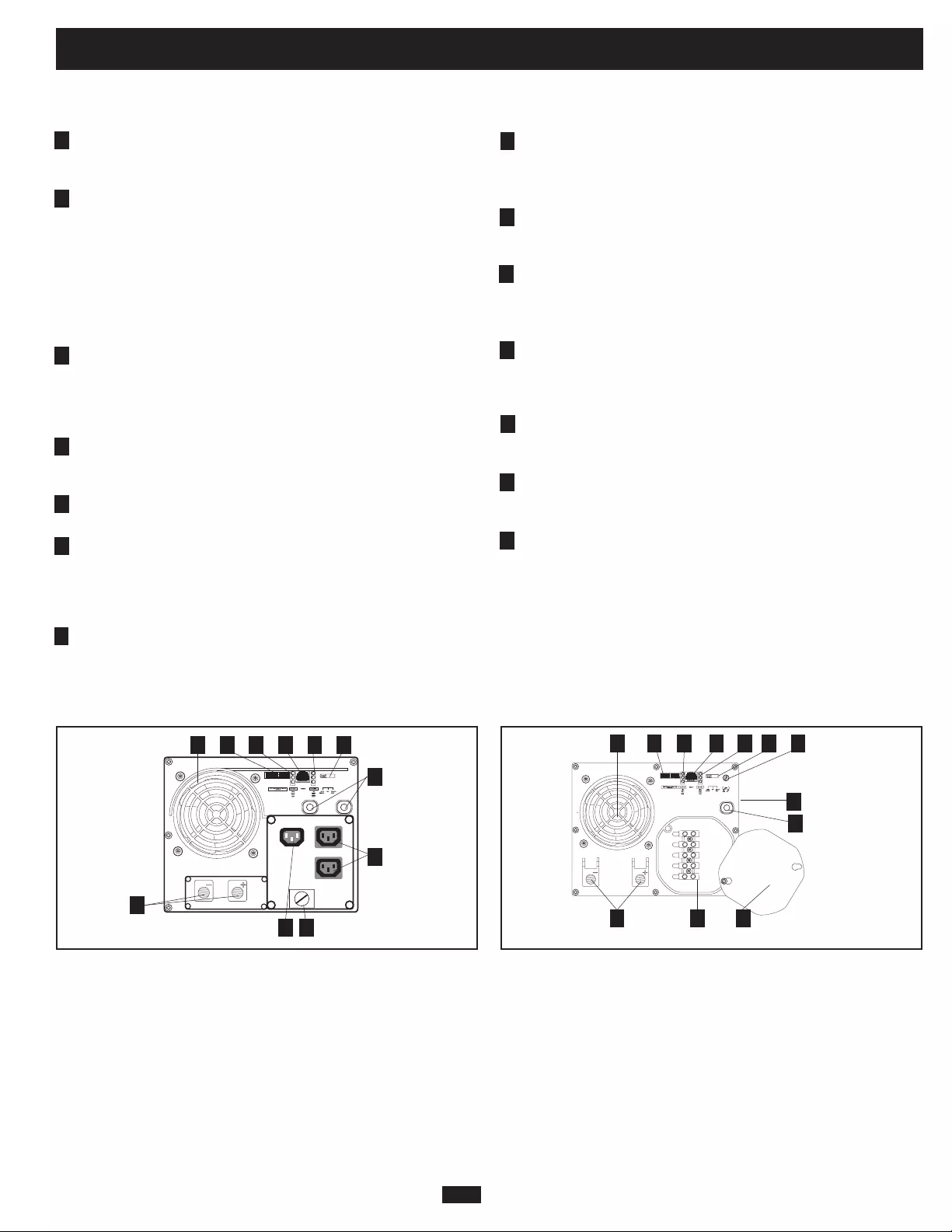
3A
Feature Identification
Identifythepremiumfeaturesonyourspecificmodelandquicklylocateinstructionsonhowtomaximizetheiruse.
Configuration DIP Switches: optimize Inverter/Charger
operation depending on your application. See Configuration
Section for setting instructions.
OperatingModeSwitch: controls Inverter/Charger operation.
The“AUTO/REMOTE”settingensuresyourequipmentreceives
constant, uninterrupted AC power. It also enables the
Inverter/Charger to be remotely monitored and controlled with
an optional remote module (Tripp Lite modelAPSRM4, sold
separately).The“CHARGEONLY”settingallowsyourbatter-
ies to return to full charge faster by turning the inverter off
whichhaltsbatterydischarging.SeeOperationSectionforset-
ting instructions.
Operation Indicator Lights: intuitive “traffic light” signals
show whether the Inverter/Charger is operating from AC line
power or DC battery power. It also warns you if the connected
equipmentloadistoohigh.SeeOperationSectionforinstruc-
tions on reading indicator lights.
BatteryIndicatorLights: intuitive “traffic light” signals show
approximatechargelevelofyourbattery.SeeOperationSection
for instructions on reading indicator lights.
DCPowerTerminals: connect to your battery terminals. See
Battery Connection Section for connection instructions.
ACOutputReceptacles(notonhardwiremodels):IEC-320
output receptacle(s) allow you to connect equipment that you
would normally plug into a utility outlet. Select models also
include a UniversalAC OutputAdapter which allows you to
connect equipment with a wide variety of plug styles.
AC Input Receptacle (not on hardwire models): IEC-320
input receptacle connects the Inverter/Charger to any source of
utility or generator-supplied AC power when used with a user-
supplied cable with country-specific plug.
HardwireACInput/OutputTerminalStrip(notoncorded
models): securely connects the Inverter/Charger to facility or
vehicleelectricalsystem.SeeInput/OutputConnectionSection
for connection instructions.
Resettable Circuit Breaker: protects your Inverter/Charger
against damage due to overload. See Operation Section for
resetting instructions.
RemoteControlModuleConnector: allows remote monitoring
andcontrolwithanoptionalmodule(TrippLitemodelAPSRM4,
sold separately). See remote module owner’s manual for con-
nection instructions.
BatteryChargeConserver(LoadSense)Control(available
on select models): conserves battery power by setting the
low-load level at which the Inverter/Charger’s inverter automati-
cally shuts off. See Configuration Section for setting instruc-
tions.
MainGroundLug: properly grounds the Inverter/Charger to
earth ground or to vehicle or boat grounding system. See Battery
Connection Section for connection instructions.
Thermostatically-ControlledCoolingFan: quiet, efficient fan
regulates internal temperature and prolongs equipment service
life. Fan runs intermittently depending on temperature and
load.
HardwireACInput/OutputCoverPlate
DeadBatteryStartupFeature(forallmodels,internal,not
shown):internal circuitry allows you to start up the Inverter/
Charger even with a dead battery connected to the unit. As long
as the Inverter/Charger is connected to a live utility- or genera-
tor-supplied AC power source, the Inverter/Charger will pass
through AC power to connected equipment and charge con-
nected batteries.
1
2
3
4
5
6
7
8
9
10
11
12
13
14
OUTPUT/NEUTRAL
OUTPUT/HOT
GROUND
INPUT/NEUTRAL
INPUT/HOT
“FOR USE WITH COPPER WIRE ONLY”
124 3
5
9
10 1113
8 14
Front View (2012, 2424 & 3636 Hardwire Models).
12 Rear Mounted, Not Shown
Front View (750 & 1250 Corded Model)
1 24 3
5
6
9
1013
712
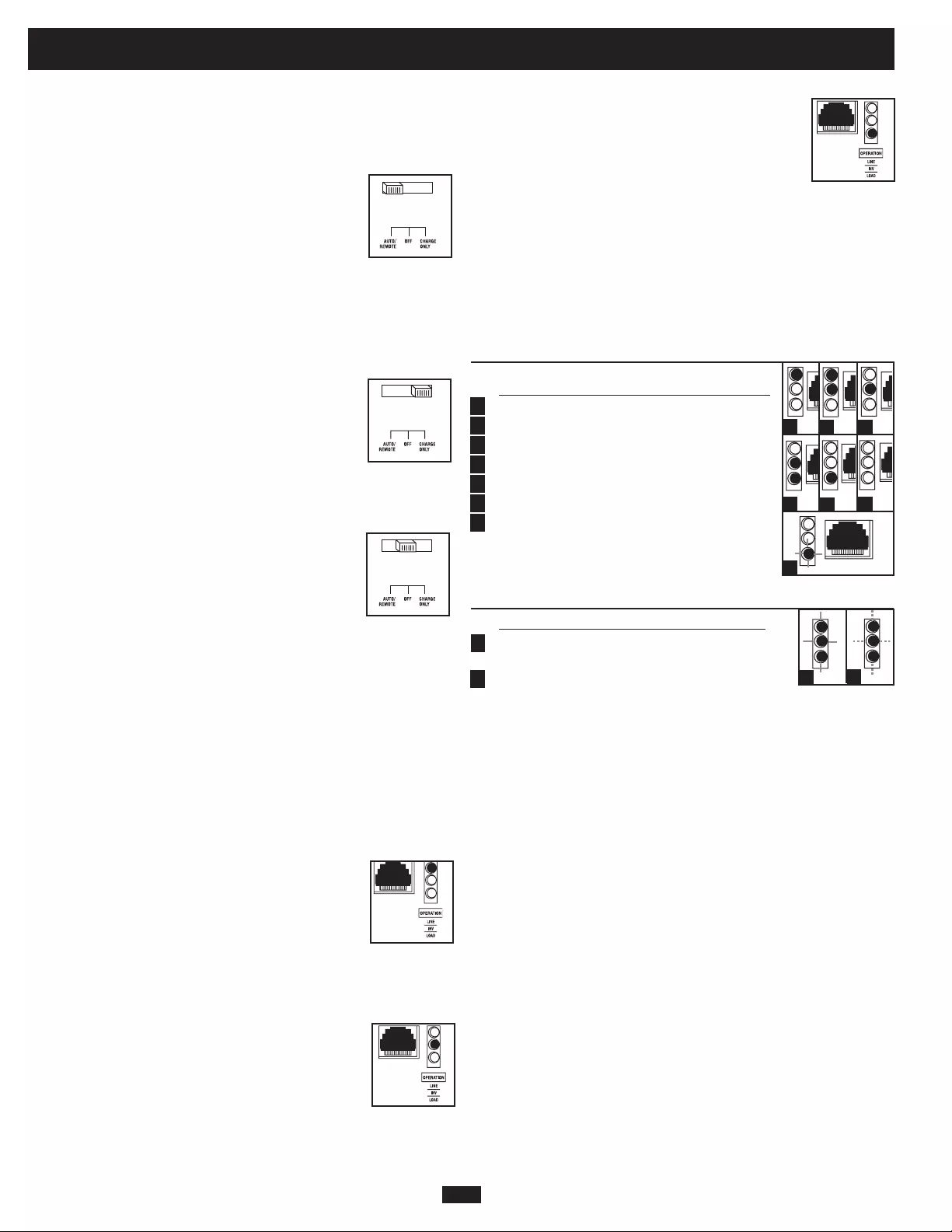
4A
Operation
Switch Modes
After configuring, mounting and connecting your Inverter/Charger, you
are able to operate it by switching between the following operating
modesasappropriatetoyoursituation:
AUTO/REMOTE: Switch to this mode when you
need constant, uninterrupted AC power for connected
appliances and equipment. The Inverter/Charger will
continue to supply AC power to connected equipment
and to charge your connected batteries while utility-
or generator-supplied AC power is present. Since the
inverterisON(butinStandby)inthismode,itwillautomatically
switch to your battery system to supply AC power to connected
equipment in the absence of a utility/generator source or in over/under
voltagesituations.“AUTO/REMOTE”alsoenablesanoptionalremote
control module (Tripp Lite model APSRM4, sold separately) to
function when connected to the unit.
CHARGE ONLY: Switch to this mode when you
are not using connected appliances and equipment in
order to conserve battery power by disabling the
inverter. The Inverter/Charger will continue to supply
AC power to connected equipment and charge con-
nected batteries while utility- or generator-supplied
ACpowerispresent.However,sincetheinverteris
OFF in this mode, itWILL NOT supplyAC power to connected
equipment in the absence of a utility/generator source or in over/under
voltage situations.
OFF:Switch to this mode to shut down the Inverter/
Charger completely, preventing the inverter from
drawing power from the batteries, and preventing util-
ity AC from passing through to connected equipment or
charging the batteries. Use this switch to automatically
reset the unit if it shuts down due to overload or
overheating.Firstremovetheexcessiveloadorallowtheunittosuf-
ficientlycool(applicabletoyoursituation).Switchto“OFF”,then
backto“AUTO/REMOTE”or“CHARGEONLY”asdesired.Ifunit
fails to reset, remove more load or allow unit to cool further and
retry. Use an optional remote control module (Tripp Lite model
APSRM4,soldseparately)toresetunitduetooverloadonly.
Indicator Lights
Your Inverter/Charger (as well as an optional Tripp Lite Remote
Control Module, sold separately) is equipped with a simple, intuitive,
user-friendly set of indicator lights. These easily-remembered “traffic
light” signals will allow you, shortly after first use, to tell at a glance
the charge condition of your batteries, as well as ascertain operating
details and fault conditions.
LINE Green Indicator: If the operating mode
switch is set to “AUTO/REMOTE,” this light will
ILLUMINATE CONTINUOUSLY when your con-
nected equipment is receiving continuous AC power
supplied from a utility/generator source.
Iftheoperatingmodeswitchissetto“CHARGEONLY,”thislight
willFLASHtoalertyouthattheunit’sinverterisOFFandwillNOT
supply AC power in the absence of a utility/generator source or in
over/under voltage situations.
INV (Inverting) Yellow Indicator: This light will
ILLUMINATECONTINUOUSLYwheneverconnected
equipment is receiving battery-supplied, inverted AC
power (in the absence of a utility/generator source or
in over/under voltage situations). This light will be off
when AC power is supplying the load. This light will
FLASH to alert you if the load is less than the Battery Charge
Conserver (Load Sense) setting.
LOAD Red Indicator: This red light will
ILLUMINATE CONTINUOUSLY whenever the
inverter is functioning and the power demanded by
connectedappliances andequipmentexceeds100%
ofloadcapacity.ThelightwillFLASHtoalertyou
when the inverter shuts down due to a severe overload
or overheating. If this happens, turn the operating mode switch
“OFF”;removetheoverloadandlettheunitcool.Youmaythenturn
theoperatingmodeswitchtoeither“AUTO/REMOTE”or“CHARGE
ONLY”afterithasadequatelycooled.Thislightwillbeoffwhen
AC power is supplying the load.
BATTERYIndicator Lights: These three lights will illuminate in
severalsequencestoshowtheapproximatechargelevelofyourcon-
nectedbatterybankandalertyoutotwofaultconditions:
ApproximateBatteryChargeLevel*
IndicatorIlluminated BatteryCapacity
(Charging/Discharging)
Green 91%–Full
Green&Yellow 81%–90%
Yellow 61%–80%
Yellow&Red 41%–60%
Red 21%–40%
Allthreelightsoff 1%–20%
Flashingred 0%(Inverter
shutdown)
* Charge levels listed are approximate. Actual conditions vary
depending on battery condition and load.
FaultCondition
IndicatorIlluminated FaultCondition
Allthreelights Excessivedischarge
flashslowly* (Invertershutdown)
Allthreelights Overcharge(Charger
flashquickly** shutdown)
*Approximately ½ second on, ½ second off. See Troubleshooting section. ** Approximately ¼ second
on, ¼ second off. May also indicate a battery charger fault exists. See Troubleshooting section.
Resetting Your Inverter/Charger
to Restore AC Power
Your Inverter/Charger may cease supplying AC power or DC charging
power in order to protect itself from overload or to protect your
electricalsystem.Torestorenormalfunctioning:
Overload Reset: Switch operating mode switch to “OFF” and
removesomeoftheconnectedelectricalload(ie:turnoffsomeof
the AC devices drawing power which may have caused the overload
of the unit). Wait one minute, then switch operating mode switch
backtoeither“AUTO/REMOTE”or“CHARGEONLY.”
Output Circuit Breaker Reset: Alternatively, check output circuit
breaker(s) on the unit’s front panel. If tripped, remove some of the
electrical load, then wait one minute to allow components to cool
before resetting the circuit breaker. See Troubleshooting for other
possible reasons AC output may be absent.
1
2
3
4
5
6
7
1
2
12 3
456
7
12

5A
Configuration
SelectBatteryType—AllModels
(REQUIRED)
CAUTION: The Battery Type DIP Switch setting must match
the type of batteries you connect, or your batteries may be
degraded or damaged over an extended period of time. See
“Battery Selection,” for more information.
BatteryType SwitchPosition
GelCell(Sealed)Battery Up
Wet Cell (Vented) Battery Down (factory setting)
Set Configuration DIP Switches
Usingasmalltool,settheConfigurationDIPSwitches(locatedonthefrontpanelofyourunit,seediagram)tooptimizeInverter/Charger
operation depending on your application.
A1A2A3A4
INPUT C/B 10A OUTPUT C/B 12A
B4 B3 B2 B1 A4 A3 A2 A1
Group B Dip Switches Group A Dip Switches
Group A DIP Switches
SelectLowACInputVoltagePointforSwitchingto
Battery—AllModels*(OPTIONAL)
Voltage SwitchPosition
182V #A4Up&#A3Up/Down
163V #A4Down&#A3Up
144V #A4Down&#A3Down
(factory setting)
*MostofyourconnectedappliancesandequipmentwillperformadequatelywhenyourInverter/Charger’sHighACInputVoltagePointisleftinthefactorysettinganditsLowACVoltageInputPointis
setto182V.However,iftheunitfrequentlyswitchestobatterypowerduetomomentaryhigh/lowlinevoltageswingsthatwouldhavelittleeffectonequipmentoperation,youmaywishtoadjustthese
settings.ByincreasingtheHighACVoltagePointand/ordecreasingtheLowACVoltagePoint,youwillreducethenumberoftimesyourunitswitchestobatteryduetovoltageswings.
Group B DIP Switches
SelectLoadSharing—OPTIONAL
Your Inverter/Charger features a high-output battery charger that can draw a significant amount of AC power from your utility source or generator
whenchargingatitsmaximumrate.IfyourunitissupplyingitsfullACpowerratingtoitsconnectedheavyelectricalloadsatthesametimeas
this high charging occurs, the AC input circuit breaker could trip, resulting in the complete shut off of pass-through utility power.
To reduce the chance of tripping this breaker, Inverter/Chargers may be set to automatically limit the charger output. This keeps the sum of
the unit’s AC load and charge power within the circuit breaker rating. This charger-limiting function has four settings, allowing you to
reduce the charger’s draw lower and lower, as needed, if the AC input circuit breaker keeps tripping under the normal AC loads of devices
youhaveconnecteddownlinefromtheunit.ThefiguresonthenextpageshowhowtosetyourDIPSwitchestodeterminehowheavythe
connected load can be on your Inverter/Charger before charger-limiting begins.
A1
A2
A3
A4
B2
B1
SelectHighACInputVoltagePoint
forSwitchingtoBattery—APSINT2424,
APSINT3636only*(OPTIONAL)
Voltage SwitchPosition
264V Up
259V Down (factory setting)
ChargerInhibit—APSX750,APSX1250,
APSINT2012only(OPTIONAL)
Charger SwitchPosition
Inhibit Up
Enable Down (factory setting)
A2
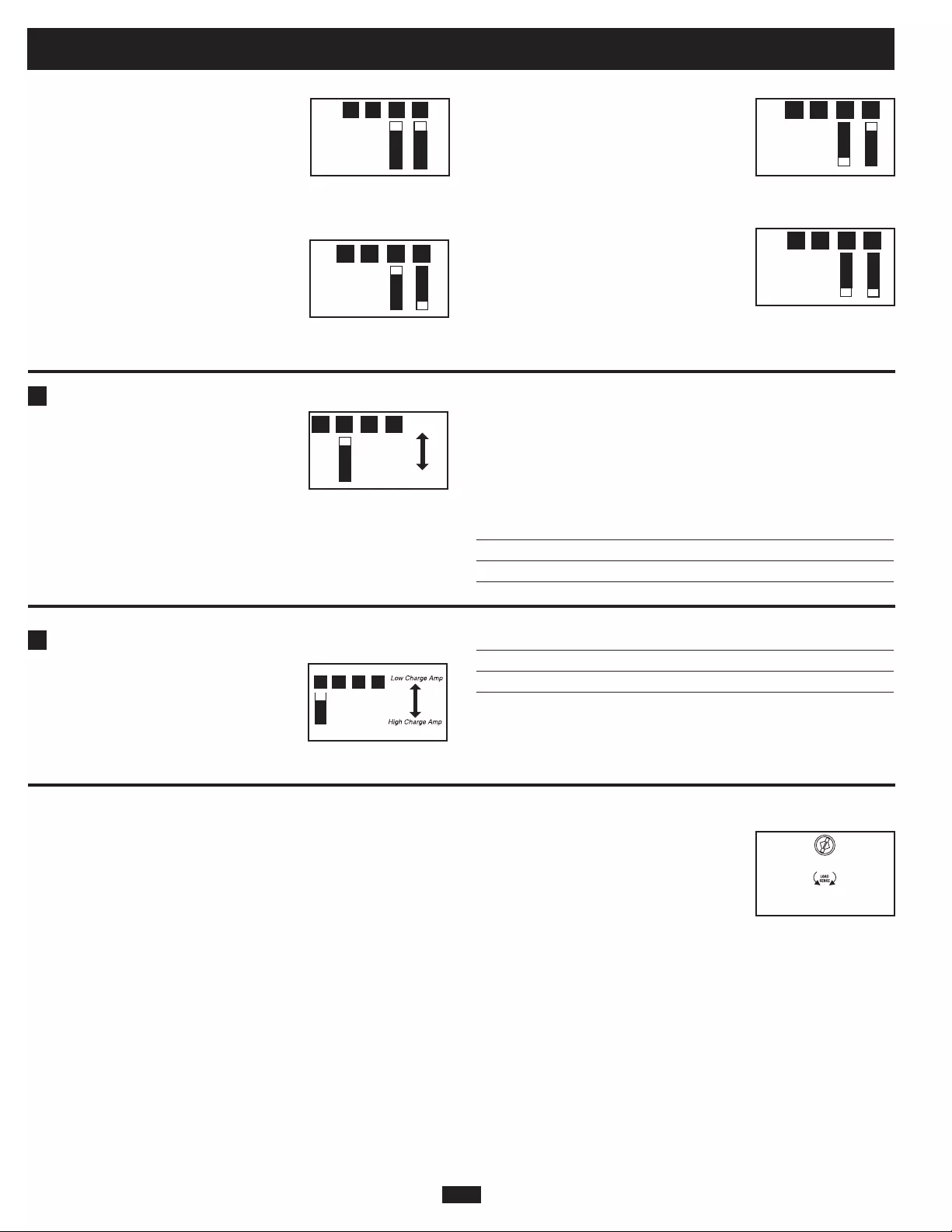
6A
Configuration (continued)
SetBatteryChargingAmps—OPTIONAL
Check specifications for your unit’s high-
and low-charging amp options. By setting
on high charging, your batteries will charge
atmaximumspeed.Whensettingonlow
charging, you lengthen the life of your bat-
teries (especially smaller ones).
BatteryCharger SwitchPosition
LowChargeAmps Up(factorysetting)
HighChargeAmps Down
CAUTION: When switching to the High Charge Amp setting, the user must ensure that the amp
hour capacity of their battery system exceeds the amperage of the High Charge Amp setting or
the batteries may be damaged or degraded.
SelectEqualizeBatteryCharge—OPTIONAL
This DIP Switch is momentarily
engaged to begin the process of equal-
izingthechargestateofyourbattery’s
cells by time-limited overcharge of all
cells.Thiscanextendtheusefullifeof
certaintypesofbatteries;consultwith
your battery’s manufacturer to determine if your batteries
couldbenefitfromthisprocess.Thechargeequalizationpro-
cessisautomatic;oncestarted,itcanonlybestoppedby
removing the input power.
SettingProcedure
• Moveto“Equalize”(DOWN)positionforthreeseconds.
• Moveto“Reset”(UP)positionandleaveitthere.Thisisthe
factory default setting.
CAUTION: Do not leave DIP switch #3 in the down position after beginning process. Battery
charge equalization should only be performed in strict accordance with the battery manufacturer’s
instructions and specifications.
BatteryCharge SwitchPosition
Reset Up(factorysetting)
Equalize Down—momentarily
SelectBatteryCharger-Limiting
Points—OPTIONAL
Most Limiting (#B1 & #B2 Up, factory
setting): Charger-limiting takes effect the
moment any 230V AC load is applied;
charger output falls gradually from full output at no 230V load
passing through to no output at full load.
Less Limiting (#B1 Down & #B2 Up):
Charger-limiting begins when the Inverter/
Charger’sloadreaches33%oftheInverter/
Charger’s load rating. Charger output falls
gradually from full output at 33% of the
Inverter/Charger’sloadratingtoabout33%
of full output at full load.
Least Limiting (#B1 Up & #B2 Down):
Charger-limiting begins at when the Inverter/
Charger’sloadreaches66%oftheInverter/
Charger’s load rating. Charger output falls
gradually from full output at 66% of the
Inverter/Charger’s load rating to about 66% of full output at full
load.
No Limiting (#B1 & #B2 Down): No
charger-limitingoccursatanyloadsize.
B1B2B3B4
B1B2B3B4
B1B2B3B4
B1B2B3B4
B1B2B3B4
SetBatteryChargeConserver(LoadSense)Control—OPTIONAL(Noton750or1250models)
In order to save battery power, the unit's inverter automatically shuts off in the absence of any power demand from
connected equipment or appliances (the electrical load). When the Inverter/Charger detects a load, it automatically
turnsitsinverterfunctionon.UsersmaychoosetheminimumloadtheInverter/Chargerwilldetectbyadjustingthe
BatteryChargeConserverControl(seediagram).Usingasmalltool,turnthecontrolclockwisetolowerthemini-
mum load that will be detected, causing the inverter to turn on for smaller loads. When the control is turned fully
clockwise, the inverter will operate even when there is no load. Turn the control counterclockwise to increase the
minimum load that will be detected, causing the inverter to stay off until the new minimum load is reached.
NOTE: The factory setting for the control is fully clockwise. However, based on the threshold load to which you’d like the inverter to respond, you should adjust the control counterclockwise to reduce
its sensitivity until the inverter is active only when connected equipment or appliances are actually in use.
ConnectRemoteControl—Optional
Allmodelsfeaturean8-conductortelephonestylereceptacleonthefrontpanelforusewithanoptionalremotecontrolmodule(TrippLite
modelAPSRM4,soldseparately). The remote module allows the Inverter/Charger to be mounted in a compartment or cabinet out of sight, while
operated conveniently from a remote location. See instructions packed with the remote control module.
"Reset"
"Equalize
"
B1B2B3B4
OFF
(LESSER
LOAD
ON)
MAX
(GREATER
LOAD
ON)
B4
B3

Select Battery Type
Select“DeepCycle”batteriestoenjoyoptimumperformancefromyourInverter/Charger.BatteriesofeitherWet-Cell(vented)orGel-Cell/Absorbed
GlassMat(sealed)constructionareideal.6-volt“golfcart,”MarineDeep-Cycleor8DDeep-Cyclebatteriesarealsoacceptable.You must
set the Inverter/Charger’s Battery Type DIP Switch (see Configuration section for more information) to match the type of batteries you connect
oryourbatteriesmaybedegradedordamagedoveranextendedperiodoftime.
Match Battery Amp-Hour Capacity to Your Application
Select a battery or system of batteries that will provide your Inverter/Charger with proper DC voltage and an adequate amp-hour capacity
topoweryourapplication.EventhoughTrippLiteInverter/Chargersarehighly-efficientatDC-to-ACinversion,theirratedoutputcapacities
are limited by the total amp-hour capacity of connected batteries plus the output of an alternator when one is used.
• STEP1)DetermineTotalWattageRequired
Add the wattage ratings of all equipment you will connect to your
Inverter/Charger. Wattage ratings are usually listed in equipment manuals
or on nameplates. If your equipment is rated in amps, multiply that number
timesACutilityvoltagetoestimatewatts.(Example:adrillrequires1.3
amps.1.3amps×230volts=300watts.)
NOTE: Your Inverter/Charger will operate at higher efficiencies at about 75% - 80% of nameplate rating.
• STEP2)DetermineDCBatteryAmpsRequired
Dividethetotalwattagerequired(fromstep1,above)bythebatteryvoltage
(i.e.12or24)todeterminetheDCampsrequired.
• STEP3)EstimateBatteryAmp-HoursRequired
MultiplytheDCampsrequired(fromstep2,above)bythenumberofhours
youestimate youwilloperateyourequipment exclusivelyfrombattery
power before you have to recharge your batteries with utility- or genera-
tor-supplied AC power. Compensate for inefficiency by multiplying this
numberby1.2.This will give you a rough estimate of how many amp-hours
of battery power (from one or several batteries) you should connect to
your Inverter/Charger.
NOTE: Battery amp-hour ratings are usually given for a 20-hour discharge rate. Actual amp-hour capacities
are less when batteries are discharged at faster rates. For example, batteries discharged in 55 minutes
provide only 50% of their listed amp-hour ratings, while batteries discharged in 9 minutes provide as little
as 30% of their amp-hour ratings.
• STEP4)EstimateBatteryRechargeRequired,GivenYourApplication
You must allow your batteries to recharge long enough to replace the
charge lost during inverter operation or else you will eventually run down
your batteries. To estimate the minimum amount of time you need to
recharge your batteries given your application, divide your required battery
amp-hours(fromstep3,above)by your Inverter/Charger’s rated charging
amps (see Specifications section).
NOTE: For Tripp Lite Inverter/Chargers providing 1000 watts or less of continuous AC power, a full-size
battery will normally allow sufficient power for many applications before recharging is necessary. For
mobile applications, if a single battery is continuously fed by an alternator at high idle or faster, then recharging
from utility or generator power may not be necessary. For Tripp Lite Inverter/Chargers over 1000 watts used
in mobile applications, Tripp Lite recommends you use at least two batteries, if possible fed by a heavy-duty
alternator anytime the vehicle is running. Tripp Lite Inverter/Chargers will provide adequate power for
ordinary usage within limited times without the assistance of utility or generator power. However, when
operating extremely heavy electrical loads at their peak in the absence of utility power, you may wish to
“assist your batteries” by running an auxiliary generator or vehicle engine, and doing so at faster than
normal idling. 7A
Battery Selection
540 watts ÷ 12V = 45 DC Amps
45 DC Amps × 5 Hrs. Runtime
× 1.2 Inefficiency Rating = 270 Amp-Hours
270 Amp-Hours ÷ 30 Amps
Inverter/Charger Rating = 9 Hours Recharge
Example
Tools
300W + 220W + 20W = 540W
Drill Orbital Sander Cordless Tool Charger
Appliances
300W + 140W + 100W = 540W
Blender Color TV Laptop Computer
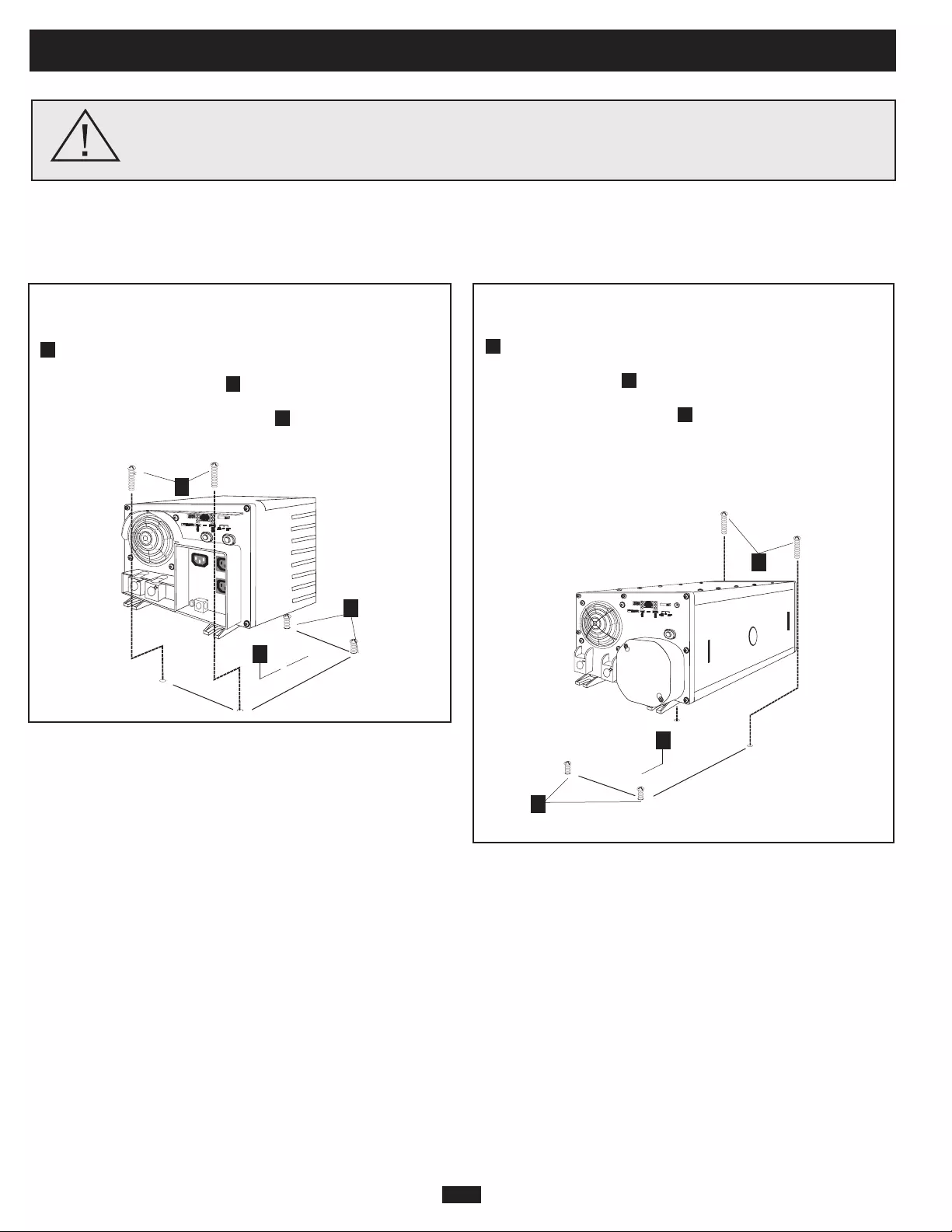
8A
Mounting
WARNING! Mount your Inverter/Charger BEFORE DC battery and AC power
connection. Failure to follow these instructions may lead to personal injury and/
or damage to the Inverter/Charger and connected systems.
Tripp Lite manufactures a variety of different Inverter/Chargers with a variety of different mounting options for use in vehicular or non-vehicular
applications.TrippLiterecommendspermanentmountingofyourInverter/Chargerinanyoftheconfigurationsillustratedbelow.Usermust
supply mounting hardware and is responsible for determining if the hardware and mounting surface are suitable to support the weight of the
Inverter/Charger. Contact Tripp Lite if you require further assistance in mounting your Inverter/Charger.
Vehicular and Non-Vehicular Horizontal Mount
(750 and 1250 models only)
A Using the measurements from the diagram, install two user-
supplied¼"(6mm)fastenersintoarigidhorizontalsurface,leav-
ing the heads slightly raised. B Slide the Inverter/Charger back
over the fasteners to engage the mounting slots molded on the bot-
tom of the Inverter/Charger cabinet. C Install and tighten two
user-supplied ¼" (6 mm) fasteners into the mounting feet molded
on the front of the Inverter/Charger cabinet.
Vehicular and Non-Vehicular Horizontal Mount
(2012, 2424 and 3636 models only)
A Using the measurements from the diagram, install two user-
supplied ¼" (6 mm) fasteners into a rigid surface, leaving the
heads slightly raised. B Slide the Inverter/Charger forward over
the fasteners to engage the mounting feet molded on the front of
the Inverter/Charger cabinet. C Install and tighten two user-
supplied ¼" (6 mm) fasteners into the mounting feet molded on
the rear of the Inverter/Charger cabinet. The rear feet extend
beyond the unit’s cabinet to provide for adequate ventilation
space behind the coolingfan(s);theyshouldnotberemoved.
A
C
B
A
C
B
Note: APS model cabinets may have different front panel features, but all have identical mounting.
11.4 cm
17.1 cm
20 cm
14.16 cm
38.12 cm

9A
Non-Vehicular or Vehicular
Non-vehicularapplicationsincludestationaryconfigurationsaswellasmobileconfigurationsthatarenotintegratedintoavehicle’selectrical
system.Inaparallelconnection,yourInverter/Charger’sNominalDCInputVoltage(listedintheSpecificationssectionaseither12,24or
36)mustmatchthevoltageofyourbatteryorbatteries(12,24or36).Forexample,a12VDCInverter/Chargerwouldrequire12VDC
from your battery system.
Inaseriesconnection,yourInverter/Charger’sNominalDCInputVoltagemustmatchthenumberofbatteriesmultipliedbytheirvoltage.For
example,a24VDCInverter/Chargerwouldrequireeithertwo12Vbatteriesconnectedinseries(24=2×12)orfour6Vbatteriesconnected
inseries(24=4×6).
In vehicular applications, your Inverter/Charger’s Nominal DC InputVoltage must match the voltage of your battery or batteries—
12Volts.Although it is possible to connect your Inverter/Charger to the main battery within your vehicle’s electrical system, in the normal
vehicularcontext,theInverter/Chargerisconnectedtooneormorededicatedauxiliary(house)batterieswhichareisolatedfromthedrive
system to prevent possible draining of the main battery.
Contact Tripp Lite technical support for assistance with additional parallel, series or series/parallel connections.
Note: X=Your Inverter/Charger’s Nominal DC Input Voltage (listed in the specifications section as either 12, 24 or 36)
1 EarthorVehicle/BoatBatteryGround 2 Battery 3 UL-ListedFuse&FuseBlock(mountedwithin45cmofthebattery) 4 LargeDiameter
Cabling,Maximum2/0GaugetoFitTerminals 5 Alternator(forvehicleorboatconnectiononly)
X Volts Inverter/Charger
X Volts
Single Battery Connection
4
1
2
3
24 Volt Inverter/Charger
6 Volts 6 Volts 6 Volts 6 Volts
Multiple Battery Connection (Series)—
24 Volt Shown
1
2 2 2 2 4
3
Battery Connection
5
Optional connection
for Vehicular
applications only.
• Connect DC Wiring: Though your
Inverter/Charger is a
high-efficiency con-
verter of electricity,
its rated output
capacity is limited by
the length and gauge
of the cabling run-
ning from the battery to the unit. Use the
shortest length and largest diameter cabling
(maximum 2/0 gauge) to fit your Inverter/
Charger’s DC Input terminals. Shorter and
heavier gauge cabling reduces DC voltage
drop and allows for maximum transfer of
current. Your Inverter/Charger is capable of
deliveringpeakwattageatupto200%ofits
rated continuous wattage output for brief
periods of time. Heavier gauge cabling
should be used when continuously operating
heavy draw equipment under these conditions.
Tighten your Inverter/Charger and battery
terminals to approximately 3.5 Newton-
meters of torque to create an efficient con-
nectionandtopreventexcessiveheatingat
this connection. Insufficient tightening of
the terminals could void your warranty. See
Specifications(includedseparately)page
forMinimumRecommendedCableSizing
Chart.
•ConnectGround:Usinga#8AWGwire
orlargerdirectlyconnecttheMainGround
Lug to the vehicle’s chassis or earth ground.
SeetheFeatureIdentification section to locate
the Main Ground Lug on your specific
Inverter/Charger model. All installations
must comply with national and local codes
and ordinances.
• Connect Fuse: Tripp Lite recommends
that you connect all of your Inverter/Charger’s
positive DC Terminals directly to a fuse(s)
andfuseblock(s)within45cm(18inches)
of the battery. The fuse’s rating must equal
or exceed the Minimum DC Fuse Rating
listed in your Inverter/Charger’s specifica-
tions. See Specifications for fuse and fuse
block recommendations. See diagrams
below for proper fuse placement.
ConnectyourInverter/Chargertoyourbatteriesusingthefollowingprocedures:
WARNING! • Failure to properly ground your Inverter/Charger to a vehicle’s chassis or earth
ground may result in a lethal electrical shock hazard.
• Never attempt to operate your Inverter/Charger by connecting it directly to output from an
alternator rather than a battery or battery bank.
• Observe proper polarity with all DC connections.
DC Connectors
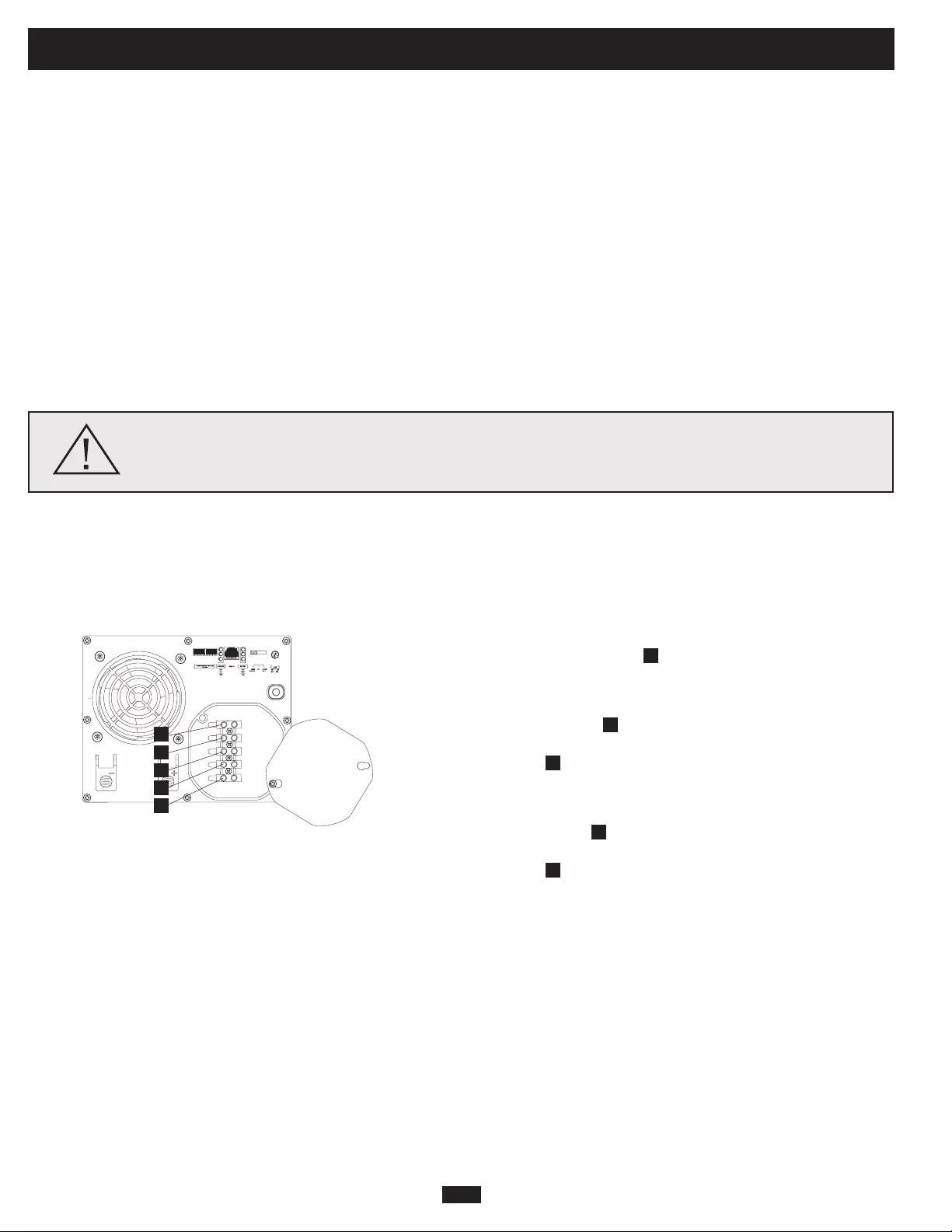
10A
AC Input/Output Connection
To avoid overloading your Inverter/Charger, be sure to match the power requirements of the equipment you plan to run at any one time (add their
total watts) with the output wattage capacity of your Inverter/Charger model. When figuring the power requirements of your equipment, do
notconfuse“continuous”wattagewith“peak”wattageratings.Mostelectricmotorsrequireextrapoweratstart-up(“peak”wattage)than
requiredtoruncontinuouslyafterstart-up,sometimesover100%more.Somemotors,suchasinrefrigeratorsandpumps, start and stop
intermittently according to demand, requiring “peak” wattage at multiple, unpredictable times during operation.
ConnectionforModelswithCordsandReceptacles
Withauser-suppliedcableandcountry-specificplug,connecttheInverter/Charger'sIEC-320ACInputReceptacletoyourutilitywallout-
let.ConnectyourequipmentdirectlytotheInverter/Charger'sIEC-320ACOutputReceptacle(s).SelectmodelsalsoincludeaUniversal
ACOutputAdapterwhichallowsyoutoconnectequipmentwithawidevarietyofplugstyles.
Warning! Consult a qualified electrician and follow all applicable electrical codes
and requirements for hardwire connection. Disconnect both DC input and AC utility
supply before attempting hardwiring.
ConnectionforModelswithHardwireTerminals
Removethescrewsandcoverplateoverthehardwireterminal box.Removetheknockoutcoversclosesttothedesiredelectricalsourceand
toyourequipment.Attach1.28cmdiameterconduits(user-supplied)totheknockoutsandthreadwiresthrough.Connecttheconduitsto
each other with the ground bond connection supplied.
OUTPUT/NEUTRAL
OUTPUT/HOT
GROUND
INPUT/NEUTRAL
INPUT/HOT
“FOR USE WITH COPPER WIRE ONLY”
Ground*
• Connecttheincomingandoutgoinggroundwirestothe
ground (green) terminal 1.
ACInput
• Connect the incoming hot wire to the input hot
(brown) terminals 2.
• Connecttheincomingneutralwiretotheinputneutral(blue)
terminal 3.
ACOutput
• Connect the outgoing hot wire to the output hot
(black) terminal 4.
• Connecttheoutgoingneutralwiretotheoutputneutral(white)
terminal 5.
• Replacecoverplateandtightenscrews.
* If the incoming conduit only contains two wires (hot and neutral), the incoming conduit must
be bonded to the main ground lug on the unit. In any case, the incoming conduit must be
bonded to earth or vehicle ground, and the incoming conduit must be bonded to the outgoing
conduit.
5
• DoubleBoost™Feature
Tripp Lite Inverter/Chargers deliver up to twice their nameplate
ratedwattageforupto10seconds,*providingtheextrapower
needed to cold start heavy-duty tools and equipment.
• OverPower™Feature
TrippLiteInverter/Chargersdeliverupto150%oftheirname
plateratedwattageforupto1hour,*providingplentyofreserve
power to reliably support tools and equipment longer.
* Actual duration depends on battery age, battery charge level and ambient temperature.
4
1
3
2
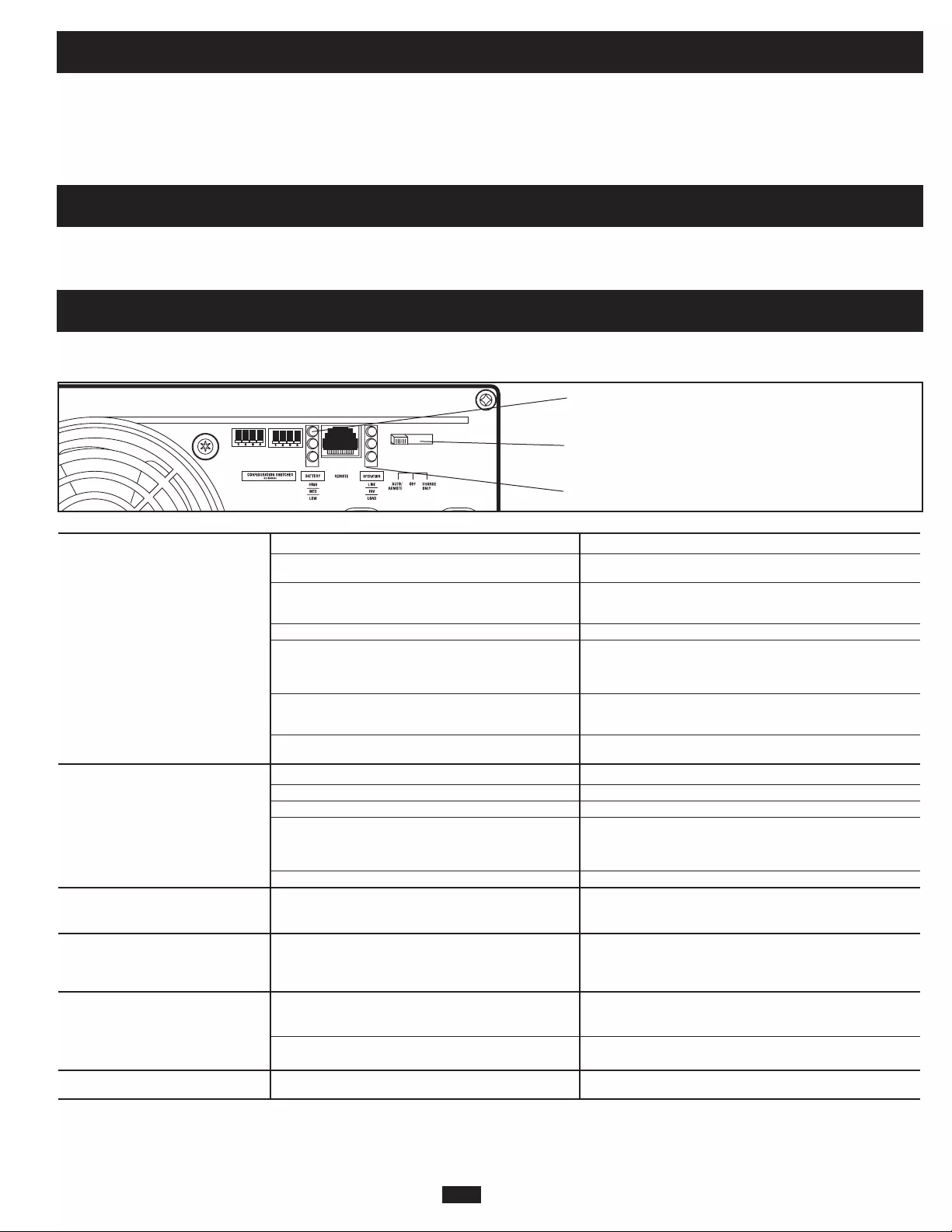
11A
Service
IfyouarereturningyourInverter/ChargertoTrippLite,pleasepackitcarefully,usingtheORIGINALPACKINGMATERIALthatcame
withtheunit.Enclosealetterdescribingthesymptomsoftheproblem.IftheInverter/Chargeriswithinthewarrantyperiod,encloseacopy
ofyoursalesreceipt.ToobtainserviceyoumustobtainaReturnedMaterialAuthorization(RMA)numberfromTrippLiteoranauthorized
Tripp Lite service center.
Your Inverter/Charger requires no maintenance and contains no user-serviceable or replaceable parts, but should be kept dry at all times.
Periodically check, clean and tighten all cable connections as necessary, both at the unit and at the battery.
Try these remedies for common Inverter/Charger problems before calling for assistance. Call Tripp Lite Customer Service before returning
your unit for service.
Maintenance
Troubleshooting
SYMPTOM PROBLEMS CORRECTIONS
No AC Output Unit is not properly connected to utility power. Connect unit to utility power.
(All Indicator Lights Are OFF) Operating Mode Switch is set to “OFF” and Set Operating Mode Switch to “AUTO/REMOTE” or “CHARGE ONLY.”
AC input is present.
This is normal when the Operating Mode Switch No correction is required. AC output will return when AC input
is set to “CHARGE ONLY” and AC input is absent. returns. Set Operating Mode Switch to “AUTO/REMOTE” if you
require AC output.
Circuit breaker is tripped. Reset circuit breaker.
Unit has shut down due to battery overcharge (preventing Disconnect any auxiliary chargers. Reset by moving Operating
battery damage). The problem may be with connected Mode Switch to “OFF.” Wait 1 minute and switch to “AUTO/REMOTE”
auxiliary chargers, if any, or with the unit’s charger. or “CHARGE ONLY.” If unit remains in shutdown mode after several
attempts to reset, contact Tripp Lite Customer Service for assistance.
Unit has shut down due to excessive battery discharge. Use an auxiliary charger* to raise battery voltage. Check external
battery connections and fuse. Unit automatically resets when
condition is cleared.
Unit has shut down due to overload. Reduce load. Reset by moving Operating Mode Switch to “OFF.”
Wait 1 minute. Switch to “AUTO/REMOTE” or “CHARGE ONLY.”
Battery Not Recharging Connected batteries are dead. Check and replace old batteries.
(AC Input Present) Battery fuse* is blown. Check and replace fuse.*
Battery cabling* is loose. Check and tighten or replace cabling.*
Unit has shut down due to battery overcharge (preventing Disconnect any auxiliary chargers. Reset by moving Operating Mode
battery damage). The problem may be with connected Switch to “OFF.” Wait 1 minute and switch to “AUTO/REMOTE” or
auxiliary chargers, if any, or with the unit’s charger. “CHARGE ONLY.” If unit remains in shutdown mode after several
attempts to reset, contact Tripp Lite Customer Service for assistance.
Input circuit breaker is tripped. Reset circuit breaker.
All Three Battery Indicator Lights Battery is excessively discharged. Use an auxiliary charger* to raise battery voltage. Check external
Are Slowly Flashing battery connections and fuse. Unit automatically resets when
(½ Second Flashes) condition is cleared.
All Three Battery Indicator Lights Battery is overcharged. Unit will shut down to prevent Disconnect any auxiliary chargers. Reset by moving Operating Mode
Are Rapidly Flashing battery damage. The problem may be with connected Switch to “OFF.” Wait 1 minute and switch to “AUTO/REMOTE”
(¼ Second Flashes) auxiliary chargers, if any, or with the unit’s charger. or “CHARGE ONLY.” If unit remains in shutdown mode after several
attempts to reset, contact Tripp Lite Customer Service for assistance.
Red “LOW” Battery Battery voltage is low. Unit will automatically shut down Make sure that AC power is present in order to recharge batteries.
Indicator Light is Flashing after 5 seconds to protect battery from damage. Reset by moving Operating Mode Switch to “OFF then to
“AUTO/REMOTE” or “CHARGE ONLY.”
False reading due to undersized or insufficiently connected Use sufficient size DC cable sufficiently connected to the
DC cabling. Inverter/Charger.
Red “LOAD” Operation Inverter is overloaded. Unit will automatically shut down Reduce load. Reset by moving Operating Mode Switch to “OFF.”
Indicator Light Flashing after 5 seconds. Wait 1minute. Switch to “AUTO/REMOTE” or “CHARGE ONLY.”
* User-supplied.
BatteryIndicatorLights
OperatingModeSwitch
OperationIndicatorLights
Regulatory Compliance Identification Numbers
For the purpose of regulatory compliance certifications and identification, your Tripp Lite product has been assigned a unique series number. The series number can be found on the product nameplate label, along with
all required approval markings and information. When requesting compliance information for this product, always refer to the series number. The series number should not be confused with the marking name or model
number of the product.

Manual del propietario
Confiable energía de respaldo de emergencia
¡Felicitaciones!Haadquiridoelinversor/cargadormásavanzadoyconmásfunciones,diseñadocomounafuentealternativadeenergíadurante
fallasdelsuministrodeenergíadelared.Losinversores/cargadoresTrippLiteAPSmantienensusequiposconstantementeenoperacióny
productivosdurantecualquierproblemadeenergíadelared(fallasdelservicioeléctrico,bajasdevoltajeyvoltajesaltos)convirtiendolaenergía
decorrientecontinuadebateríassuministradasporelusuario,enenergíadecorrientealterna.Lasupresióndesobretensionesintegradapropor-
cionaunniveladicionaldeprotecciónalequipo.Cuandohayenergíadelared,losinversores/cargadoresAPSpasanautomáticamentelaenergía
asusequipos,yrecargansimultáneamenteelbancodebateríasconectado.Losinversores/cargadoresAPSsonlaalternativasilenciosaalos
generadoresdegasolinaduranteaplicacionesderespaldodeemergencia—¡sinhumo,combustibleniruido!Ustedobtieneenergíadecorriente
alterna en cualquier lugar y en cualquier momento en que la necesite.
Mejor para su equipo NivelesdeprotecciónPremium
• ProteccióncontrasobretensionesintegradaIsobar®
• Protecciónautomáticacontrasobrecarga
Salida ideal para cualquier carga (incluyendo computadoras)
• Salidacontroladaporfrecuencia
• Rápidaconmutacióndecarga
• Repartodecargabalanceada
Mejor para sus baterías Recargadebateríasmásrápida
• Cargadordebateríasde3etapasdealtacapacidad(ajustable)
Proteccióncríticadebatería
• Conservadordecargadebatería(Deteccióndecarga)*
• InversióndeCCaCAdealtaeficiencia
Mejor para usted Operaciónsimpleysinmantenimiento
• Lucesyconmutadoresmultifunción
• Arranqueconbateríaagotada
• Fabricaciónresistentealahumedad**
Seguridad 13
Garantía 13
Identificación de funciones 14
Operación 15
Configuración 16-17
Selección de baterías 18
Montaje 19
Conexión de la batería 20
Conexión de entrada/salida de corriente alterna
21
Servicio/Mantenimiento/Solución de problemas
22
English 1
Français 23
34
PowerVerter®
Serie APSX & APSINT
Inversores/cargadores de corriente
continua a corriente alterna
Entrada Salida
Inversión: 12, 24 o 36 VCC 230V, 50 Hz. CA
Carga: 230 V, 50 Hz. CA 12, 24 o 36 VCC
1111 W. 35th Street, Chicago, IL 60609 USA
www.tripplite.com/support
* Disponible en todos los modelos, excepto el 750 y el 1250. ** Los inversores/cargadores son resistentes a la humedad, pero no son impermeables.
Copyright © 2007. PowerVerter® es una marca comercial registrada de Tripp Lite. Todos los derechos reservados.
Contenido
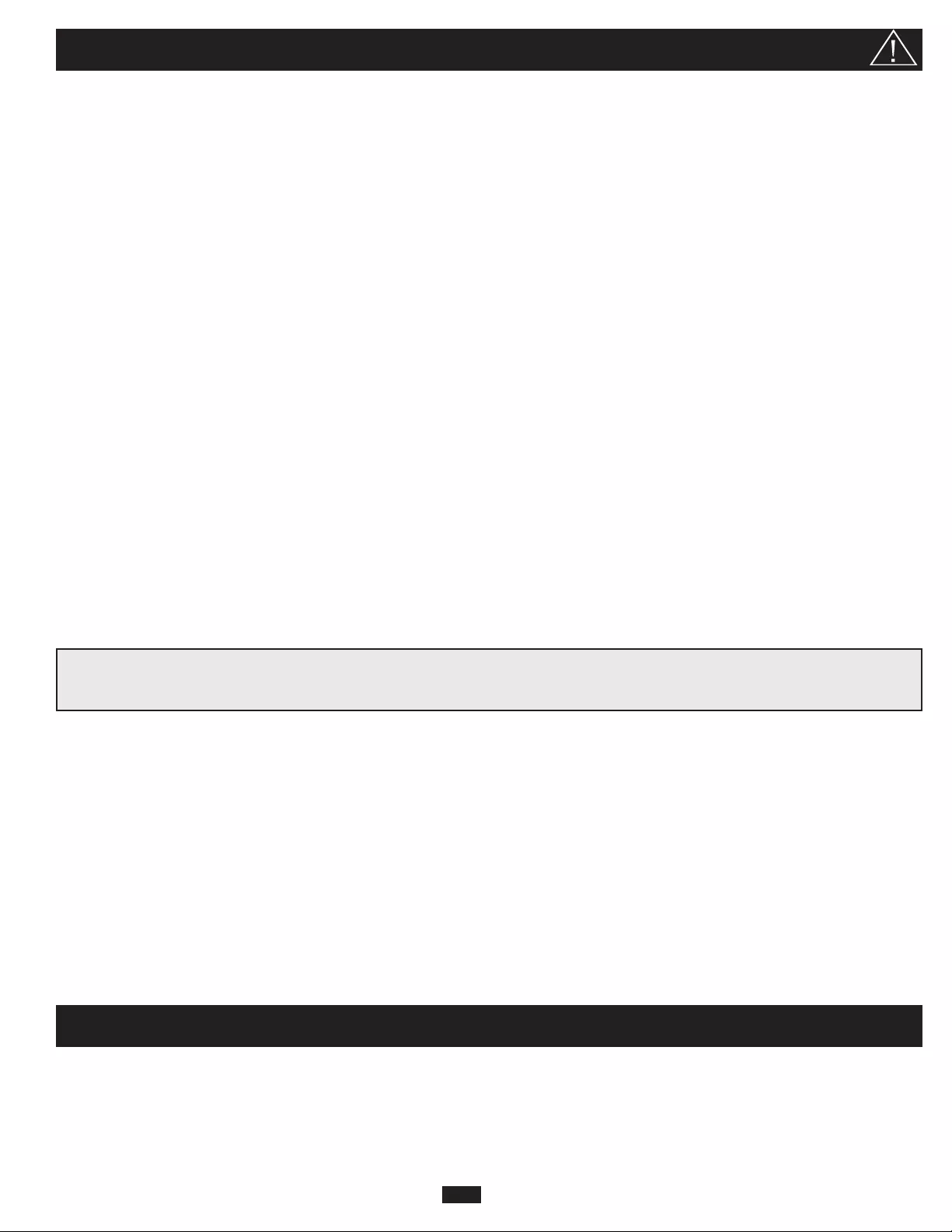
13A
Garantía limitada
Tripp Lite garantiza que su inversor/cargador no tiene defectos en materiales ni mano de obra por un período de un año (excepto fuera de EE.UU., Canadá y México-120 días) desde la fecha de compra por parte del usuario final. Bajo esta garantía, la obligación
de Tripp Lite se limita a reparar o reemplazar (a su exclusiva elección) cualquier producto defectuoso. Para obtener servicio bajo esta garantía, debe conseguir un número de Autorización de devolución de mercadería (RMA) de Tripp Lite o de un centro de
servicio autorizado de Tripp Lite. Los productos deben ser devueltos a Tripp Lite o a un centro de servicio autorizado de Tripp Lite con los cargos de transporte pagados por adelantado, acompañados de una breve descripción del problema y un comprobante
de la fecha y el lugar de compra.
Esta garantía no se aplica al equipo que ha sido dañado por accidente, negligencia o uso inadecuado, o que ha sido alterado o modificado en cualquier forma, incluyendo la abertura de la caja de la unidad por cualquier motivo. Esta garantía solamente se
aplica al comprador original que debe haber registrado correctamente el producto dentro de los 10 días de la compra.
SALVO POR LO ESTABLECIDO EN ESTE DOCUMENTO, TRIPP LITE NO ESTABLECE NINGUNA GARANTÍA, EXPRESA O IMPLÍCITA, INCLUYENDO GARANTÍAS DE COMERCIABILIDAD O IDONEIDAD PARA UN PROPÓSITO PARTICULAR. Algunos
estados no permiten limitaciones o exclusiones de las garantías implícitas; por lo tanto, las limitaciones o exclusiones mencionadas anteriormente pueden no aplicarse al comprador.
SALVO POR LO ESTABLECIDO ANTERIORMENTE, EN NINGÚN CASO TRIPP LITE SERÁ RESPONSABLE POR DAÑOS DIRECTOS, INDIRECTOS, ESPECIALES, INCIDENTALES O EMERGENTES, RESULTANTES DEL USO DE ESTE PRODUCTO,
AUN EN EL CASO DE HABERSE INFORMADO DE LA POSIBILIDAD DE DICHOS DAÑOS. Específicamente, Tripp Lite no es responsable por ningún costo, como pérdida de ingresos o beneficios, pérdida de equipos, pérdida de uso de equipos, pérdida de
software, pérdida de datos, costos por reemplazos, reclamaciones de terceras partes, o lo que corresponda.
Tripp Lite tiene una política de mejoramiento continuo. Las especificaciones están sujetas a cambio sin previo aviso.
Instrucciones de seguridad importantes
¡GUARDE ESTAS INSTRUCCIONES!
Estemanualcontieneinstruccionesyadvertenciasimportantesquedebenseguirsedurantelainstalación,operaciónyalmacenamientodetodos
los inversores/cargadores de Tripp Lite.
Advertencias de ubicación
• Instalesuinversor/cargador(yaseaparaunaaplicaciónmóviloestacionaria)enunlugarocompartimientoqueminimicela
exposiciónalcalor,alpolvo,alaluzsolardirectayalahumedad.
• Aunquesuinversor/cargadoresresistentealahumedad,NOesimpermeable.Llenarlaunidadconaguacausaráuncortocircuitoy
podríacausarlesionespersonalesporchoqueeléctrico.Nuncasumerjalaunidad,yevitetodaáreadondepuedaacumularseagua.El
montajedeberealizarseenlaubicaciónmássecadisponible.
• Dejeunaluzmínimade5cmenlapartefrontalyposteriordelinversor/cargadorparaunaadecuadaventilación.Amayorcargadel
equipoconectado,launidadgenerarámáscalor.
• Noinstaleelinversor/cargadordirectamentecercademediosdealmacenamientomagnético,yaquepuededañarlosdatos.
• Noloinstalecercadematerialesinflamables,combustiblesoproductosquímicos.
• Nomonteestaunidadconelpanelfrontaloconelpaneltraserohaciaabajo(Bajoningúnángulooinclinación).Silomontade
estamanera,inhibiráseriamenteelsistemadeenfriamientointernodelaunidad;loquefinalmentecausarádañosalproducto
quenoestáncubiertosporlagarantía.
Advertencias de conexión de batería
• Lossistemasdebateríasmúltiplesdebenestarconformadosporbateríasconunvoltaje,unaantigüedad,unacapacidadenamperios
horayuntipoidénticos.
• Debidoaquepuedeacumularsegashidrógenoexplosivocercadelasbateríassinoestánbienventiladas,nodebeinstalarbaterías(ya
seaparaunaaplicaciónmóviloestacionaria)enuncompartimientosincirculacióndeaire.Enformaideal,cualquiercompartimiento
tendríaciertaventilaciónalexterior.
• Puedenproducirsechispasdurantelaconexiónfinaldelabatería.Siempreobservelacorrectapolaridadalconectarlasbaterías.
• Nopermitaqueningúnobjetoentreencontactoconlosdosterminalesdeentradadecorrientecontinua.Nopongaencortocircuitoni
enpuenteestosterminales.Podríanproducirseseriaslesionespersonalesodañosalapropiedad.
Advertencias sobre la conexión de equipos
Elusodeesteequipoenaplicacionesdesoportedevidaendondelafalladeesteequipopuedarazonablementehacersuponer
quecausaráfallasenelequipodesoportedevidaoafectesignificativamentesuseguridadoefectividad,noestárecomendado.
Nouseesteequipoenlapresenciadeunamezclaanestésicainflamableconaire,oxigenouóxidonitroso.
• Modelosconcordón:Nomodifiqueelenchufedelinversor/cargadornilatomaenunaformaenqueeliminesuconexiónatierra.No
useadaptadoresdepotenciaqueeliminenlaconexiónatierradelenchufe.
• Conectesuinversor/cargadorsóloaunasalidadecorrientealternaoaunafuentecableadaadecuadamentepuestaatierra.Noconecte
launidadasimisma;estodañaráeldispositivoyanularásugarantía.
• Puedeexperimentarunfuncionamientoirregularsiconectaunsupresordesobretensiones,unacondicionadordelíneaounUPSala
salida del inversor/cargador.
Advertencias de operación
• Suinversor/cargadornorequiereunmantenimientoderutina.Noabraeldispositivoporningunarazón.Nohaypartesensuinteriorque
requieran mantenimiento por parte del usuario.
• Mientraslaalimentacióndebateríasy/olaentradadecorrientealternaesténconectadas,hayvoltajespotencialmenteletalesdentrodel
inversor/cargador.Enconsecuencia,durantecualquiertrabajodemantenimiento,debendesconectarselaalimentacióndebateríasylaentrada
de corriente alterna.
• Noconectenidesconectelasbateríasmientraselinversor/cargadorestáoperandoenmododeinversiónodecarga.Elconmutadordelmodo
deoperacióndebeestarenlaposiciónapagado.Puedeproducirseunarcopeligroso.

14A
Identificación de funciones
IdentificalasfuncionesPremiumensumodeloespecíficoyubicarápidamentelasinstruccionesparaoptimizarsuutilización.
ConmutadoresDIPdeconfiguración:Optimizanlaoperación
desuinversor/cargadorenfuncióndesuaplicación.Consultela
SecciónConfiguraciónparainstruccionesdeajuste.
Conmutadordemododeoperación:Controlalaoperacióndel
inversor/cargador. El ajuste “AUTO/REMOTE”
(AUTOMÁTICO/REMOTO)aseguraquesuequiporecibeuna
energíaconstanteeininterrumpidadecorrientealterna.También
permite monitorear y controlar el inversor/cargador en forma
remota con un módulo opcional remoto (Tripp Lite modelo
APSRM4,vendidoporseparado).Elajuste“CHARGEONLY”
(SOLO RECARGA) permite a sus baterías regresar a carga
completamásrápidamentemedianteelapagadodelinversor,lo
que detiene la descarga de la batería. Consulte la Sección
Operaciónparainstruccionesdeajuste.
Lucesindicadorasdeoperación:Lucestipo“semáforo”indi-
can si el inversor/cargador está operando desde una línea de
corrientealternaoconenergíadecorrientecontinuadebaterías.
Tambiénleadviertesilacargadelequipoconectadoesdemasia-
doalta.ConsultelaSecciónOperaciónparainstruccionessobre
la lectura de las luces indicadoras.
Lucesindicadorasdebatería:Lucestipo“semáforo”indican
elnivelaproximadodecargadesubatería.ConsultelaSección
Operaciónparainstruccionessobrelalecturadelaslucesindi-
cadoras.
Terminalesdepotenciadecorrientecontinua:Se conectan a
losterminalesdesubatería.ConsultelaSecciónConexiónde
bateríaparainstruccionesdeconexión.
Tomas de salida de CA (no en modelos cableados):
ReceptáculosIEC-320 de salida le permiten conectar equipos
queustednormalmenteconectaríaenunatomadelared.Los
modelosexclusivostambiénincluyenunadaptadoruniversalde
salida de CA que permite conectar equipos con una gran varie-
dad de tipos de enchufe.
ReceptáculodeentradadeCA(noenmodeloscableados):El
receptáculoIEC-320deentradaconectaelinversor/cargadora
cualquierfuentedeenergíadeCAdelaredosuministradapor
un generador cuando se emplea con un cable suministrado por
elusuarioconalgúnenchufedeusolocalespecial.
Regletacableadadeterminalesdeentrada/salidadecorri-
entealterna(noenmodelosconcordón):Conecta firmemente
elinversor/cargadoralsistemaeléctricodelaredodelvehículo.
ConsultelasinstruccionesdeconexiónenlaSecciónConexión
de entrada/salida.
Interruptoresautomáticosrestaurable:Protegen su inversor/
cargador contra daños por sobrecarga. Consulte las instruc-
cionesdereajusteenlaSecciónOperación.
Conectordelmódulodecontrolremoto:Permite el monitoreo
ycontrolenformaremotaconunmóduloopcional(TrippLite
modeloAPSRM4, vendido por separado).Vea el Manual del
propietario del módulo remoto para obtener instrucciones de
conexión.
Controldelconservadordecargadebatería(Detecciónde
carga) (disponible en modelos exclusivos): Conserva la
energía de batería ajustando el nivel de carga baja al que el
inversor/cargador se apaga automáticamente. Consulte la
SecciónConfiguraciónparalasinstruccionesdeajuste.
Orejaprincipaldetierra:Conecta adecuadamente el inversor/
cargadoratierraoalsistemadetierradelvehículoodelbarco.
ConsultelaSecciónConexióndebateríaparalasinstrucciones
deconexión.
Ventilador de enfriamiento controlado por termostato:
Ventilador silencioso y eficiente que regula la temperatura
internayprolongalavidadeserviciodelequipo.Elventilador
opera en forma intermitentemente dependiendo de la tempera-
tura y la carga.
Placadecubiertadeentrada/salidadeCAcableada
FunciónArranqueconbateríaagotada(paratodoslosmod-
elos, interna, no mostrada): Un circuito interno le permite
arrancar el inversor/cargador incluso con una batería agotada
conectada a la unidad. En tanto el inversor/cargador esté
conectadoaunafuentedeenergíadeCAdelaredosuminis-
tradaporungenerador,pasaráenergíadeCAalequipoconecta-
doycargarálasbateríasconectadas.
1
2
3
4
5
6
7
8
9
10
11
12
13
14
OUTPUT/NEUTRAL
OUTPUT/HOT
GROUND
INPUT/NEUTRAL
INPUT/HOT
“FOR USE WITH COPPER WIRE ONLY”
124 3
5
9
10 1113
8 14
Vista frontal (Modelos cableados 2012, 2424 y 3636).
12 Montaje posterior, no mostrado
Vista frontal (Modelos con cordón 750 y 1250).
1 24 3
5
6
9
1013
712
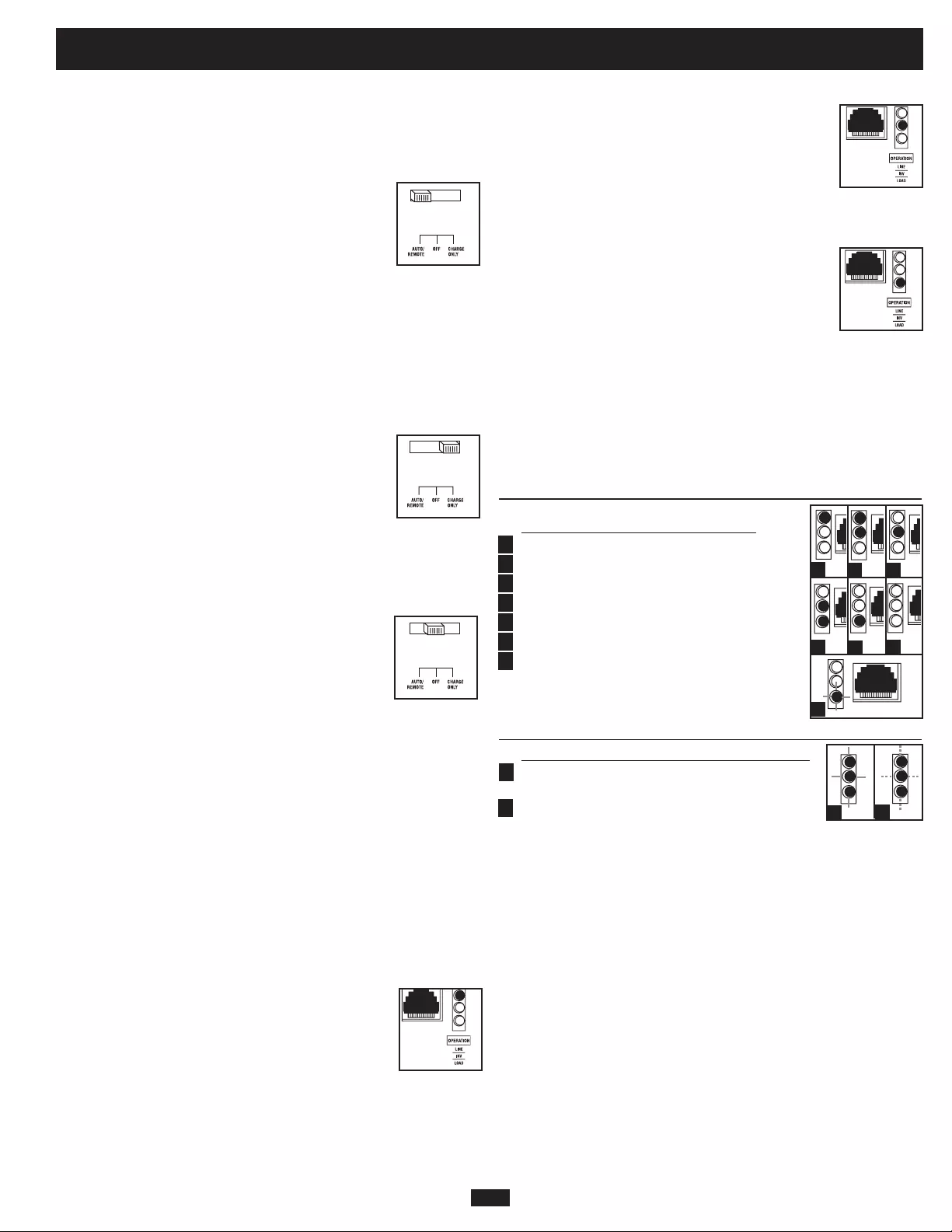
15A
Operación
Modos de conmutación
Despuésdelaconfiguración,elmontajeylaconexióndesuinver-
sor/cargador, puede operarlo cambiando a los siguientes modos de
operación,segúncorresponda:
AUTO/REMOTE (AUTOMÁTICO/REMOTO):
Cambieaestemodocuandonecesiteenergíadecor-
riente alterna constante e ininterrumpida para los
aparatosyequiposconectados.Elinversor/cargador
seguirásuministrandoenergíadecorrientealternaal
equipoconectadoyparacargarsusbateríasconecta-
dasmientrasexistaenergíadecorrientealternadelared-odeun
generador.Yaqueelinversorestáenposicióndeencendido(peroen
StandbyoReserva)enestemodo,cambiaráautomáticamenteasu
sistemadebateríasparasuministrarenergíadecorrientealternaal
equipo conectado en ausencia de alimentación de la red o de un
generador, o en casos de sobrevoltaje o bajo voltaje. “AUTO/
REMOTE” (AUTOMÁTICO/ REMOTO) también permite operar
unmódulodecontrolremotoopcional(TrippLitemodeloAPSRM4,
vendidoporseparado)siestáconectadoalaunidad.
CHARGEONLY(SOLORECARGA): Cambie a
estemodocuandonoestéusandoaparatosniequipos
conectados, a fin de conservar energía de batería
mediante la desactivación del inversor. El inversor/
cargador seguirá suministrando energía de corriente
alterna al equipo conectado y cargando las baterías
conectadasmientrasexistaenergíadecorrientealternadelaredode
ungenerador.Sinembargo,yaqueelinversorestáOFF(apagado)en
estemodo,NOsuministraráenergíadecorrientealternaalequipo
conectadoenausenciadealimentacióndelaredodeungenerador,
oencasosdesobrevoltajeobajovoltaje.
OFF(APAGADO): Cambie a este modo para apa-
gar el inversor/cargador completamente, evitando
queconsumaenergíadelasbaterías,yevitandoque
la corriente alterna de la red pase al equipo conecta-
dooparalacargadebaterías.Useesteconmutador
para restablecer automáticamente la unidad si se
apaga debido a sobrecarga o sobrecalentamiento. Primero retire la
cargaexcesivaodejequelaunidadseenfríelosuficiente(loapli-
cableasusituación).Cambiea“OFF”,yluegootraveza“AUTO/
REMOTE”o“CHARGEONLY”,segúndesee.Silaunidadnose
restablece,retiremáscargaopermitaqueseenfríemás,ytratede
nuevo.Useunmóduloopcionaldecontrolremoto(TrippLitemod-
elo APSRM4, vendido por separado) para restablecer la unidad
debido solamente a sobrecarga.
Luces indicadoras
Suinversor/cargador(asícomosumóduloopcionaldecontrolremoto
TrippLite,vendidoporseparado)estáequipadoconunsencillo,intu-
itivo,yfácildeutilizar,conjuntodelucesindicadoras.Estasluces"tipo
semáforo"fácilesderecordar,lepermitiránenpocotiempodespués
delprimeruso,saberdeunamiradalacondicióndecargadesusbat-
erías,asícomociertosdetallesdeoperaciónycondicionesdefalla.
IndicadorLINEverde: Si el conmutador de modo de
operación se fija en “AUTO/REMOTE” esta luz se
ILUMINARÁCONTINUAMENTEcuandosuequipo
conectadoestérecibiendoenergíadecorrientealterna
en forma constante, suministrada desde la red o de un
generador.
Si el conmutador de modo de operación se fija en “CHARGE
ONLY,” esta luz DESTELLA para alertarle que el inversor de la
unidad está apagado y que NO suministrará energía de corriente
alternaenausenciadealimentacióndelaredodeungenerador,o
encasosdesobrevoltajeobajovoltaje.
Indicador INV (Inversión) amarillo: Esta luz se
ILUMINARÁ CONTINUAMENTE siempre que el
equipoconectadoestérecibiendoenergíadecorriente
alternaconvertidadesdebaterías(enausenciadeali-
mentacióndelaredodeungenerador,oencasosde
sobrevoltajeobajovoltaje)Estaluzseapagacuando
la carga está alimentada con energía de corriente
alterna.EstaluzDESTELLARÁparaalertarlesilacargaesmenor
queelajusteConservadordecargadebatería(Deteccióndecarga).
IndicadorrojoLOAD(CARGA):Estaluzrojase
ILUMINARÁ CONTINUAMENTE siempre que el
inversorestéfuncionandoyquelaenergíarequerida
por los aparatos y equipos conectados exceda el
100%delacapacidaddecarga.LaluzDESTELLARÁ
para alertarle cuando el inversor se apague debido a
una severa sobrecarga o por sobrecalentamiento.Si esto sucede,
cambieelconmutadoralmododeoperación“OFF”;retirelasobre-
cargaydejequelaunidadseenfríe.Despuésquelaunidadsehaya
enfriado, puede cambiar el conmutador de modo de operación a
“AUTO/REMOTE”o“CHARGEONLY”.Estaluzseapagacuandola
cargaestáalimentadaconenergíadecorrientealterna.
Luces indicadoras de batería: Estas tres luces se iluminarán en
variassecuenciasparamostrarelnivelaproximadodecargadesubanco
debateríasconectadoyparaalertarlededoscondicionesdefalla:
Nivelaproximadodecargadebatería*
Indicadoriluminado Capacidaddebatería
(Carga/Descarga)
Verde 91%-Total
Verdeyamarillo 81%-90%
Amarillo 61%-80%
Amarilloyrojo 41%-60%
Rojo 21%-40%
Lastreslucesapagadas 1%-20%
Rojodestellando 0%(inversor
apagado)
* Los niveles de carga indicados son aproximados. Las condiciones
reales varían en función de la condición y carga de la batería.
Condicióndefalla
Indicadoriluminado Condicióndefalla
Lastresluces Excesivadescarga
destellanlentamente* (inversorapagado)
Las tres luces destellan Sobrecarga
rápidamente** (cargadorapagado)
* Aproximadamente ½ segundo encendido, ½ segundo apagado. Vea la sección Solución de proble-
mas. ** Aproximadamente ¼ segundo encendido, ¼ segundo apagado. También puede indicar una
falla del cargador de batería. Vea la sección Solución de problemas.
Restableciendo su inversor/cargador
para restablecer la energía de CA
Suinversor/cargadorpuededejardesuministrarenergíadecorriente
alternaoenergíadecargadecorrientecontinuaafindeprotegersea
simismocontraunasobrecarga,oparaprotegersusistemaeléctrico.
Pararestablecerelfuncionamientonormal:
Restablecersobrecarga: Cambie el conmutador de modo de oper-
acióna“OFF”yretirealgodelacargaeléctricaconectada(esdecir,
apague algunos dispositivos de corriente alterna que consumen
energía que puedan haber causado la sobrecarga de la unidad)
Espereunminuto,yluegocambieelconmutadordemododeoper-
aciónotraveza“AUTO/REMOTE”o“CHARGEONLY.”
Restaurarinterruptor automático de salida: Enforma alternativa,
reviseelinterruptorautomáticodesalidadelpanelfrontaldelaunidad.Si
hadisparado,retirealgodelacargaeléctricayluegoespereunminuto
parapermitirqueseenfríenloscomponentesantesderestaurarelinter-
ruptor automático. Vea la sección Solución de problemas para otras
posiblesrazonesporlasquepodríanohabersalidadecorrientealterna.
1
2
3
4
5
6
7
1
2
12 3
456
7
12

16A
Configuración
Seleccionartipodebatería—
Todoslosmodelos(REQUERIDO)
PRECAUCIÓN: El ajuste del conmutador DIP de tipo de
batería debe coincidir con el tipo de batería que conecta, o
sus baterías podrán degradarse o dañarse durante un perío-
do prolongado de tiempo. Consulte "Selección de batería,"
para obtener más información.
Tipodebatería Posicióndelconmutador
Bateríaconceldasdegel(sellada) Arriba
Bateríaconceldashúmedas(conventeo)Abajo(ajustedefábrica)
Fijar conmutadores DIP de configuración
Usandounaherramientapequeña,fijelosconmutadoresDIPdeconfiguración(ubicadosenelpanelfrontaldesuunidad,veaeldiagrama)
paraoptimizarlaoperacióndelinversor/cargadorenfuncióndesuaplicación.
A1A2A3A4 celdas de gel
celdas húmeda
s
INPUT C/B 10A OUTPUT C/B 12A
B4 B3 B2 B1 A4 A3 A2 A1
Conmutadores DIP Grupo B Conmutadores DIP Grupo A
Conmutadores DIP Grupo A
SeleccióndepuntodevoltajebajodeentradadeCA
paracambioabatería—Todoslosmodelos*(OPCIONAL)
Voltaje Posicióndelconmutador
182V #A4arribay#A3arriba/abajo
163V #A4abajoy#A3arriba
144V #A4abajo&#A3abajo
(ajustedefábrica)
*LamayorpartedesusaparatosyequiposconectadosfuncionaráncorrectamentecuandoelpuntodevoltajealtodeentradadeCAdesuinversor/cargadorsedejeenelajustedefábricaysupunto
devoltajebajodeentradadeCAestéfijadoen182V.Sinembargo,silaunidadcambiafrecuentementeaenergíadebateríadebidoavariacionesmomentáneasdevoltajealto/bajoenlalíneaque
tendríanpocoefectoenlaoperacióndelosequipos,puedeserqueprefieramodificarestosajustes.AumentandoelpuntodevoltajealtodeCAy/odisminuyendoelpuntodevoltajebajodeCA,se
reducirálacantidaddevecesquesuunidadcambiaabateríadebidoavariacionesdevoltaje.
Conmutadores DIP Grupo B
Seleccionarrepartodecarga—OPCIONAL
Suinversor/cargadorpresentauncargadordebateríadealtacapacidadquepuedeconsumirunacantidadimportantedeenergíadecorriente
alternadelsuministroderedodesugeneradorcuandoelprocesodecargafuncionaasumáximacapacidad.Sisuunidadestásuminist-
randosumáximacapacidaddeenergíadecorrientealternaasuscargaseléctricaspesadasconectadas,almismotiempoqueseproduceeste
procesodealtacargadebatería,elinterruptorautomáticodeentradadecorrientealternapodríadisparar,causandoelcortecompletodela
energíaqueprovienedelared.
Parareducirlaposibilidaddedisparodeesteinterruptor,losinversores/cargadorespuedenserfijadosparalimitarautomáticamentelasal-
idadelcargador.Estomantienelasumadelacargadecorrientealternadelaunidadylaenergíadecargadebateríadentrodelacapacidad
delinterruptorautomático.Estafunciónlimitadoradelcargadortienecuatroajustes,loquelepermitereducircadavezmáselconsumodel
cargador,segúnseanecesario,sielinterruptorautomáticodeentradadecorrientealternasiguedisparandoconlascargasnormalesdecor-
rientealternadelosaparatosconectadosalaunidad.LasfigurasdelapáginasiguientemuestrancómofijarsusconmutadoresDIPpara
determinarcuánpesadapuedeserlacargaconectadaasuinversor/cargadorantesdeliniciodelafunciónlimitadoradelcargador.
A1
A2
A3
A4
B2
B1
Seleccióndepuntodevoltajealtode
entradadeCAparacambioabatería—
sóloparamodelosAPSINT2424y
APSINT3636*(OPCIONAL)
Voltaje Posicióndelconmutador
264V Arriba
259V Abajo(ajustedefábrica)
Inhibidordecargador—sólopara
modelosAPSX750,APSX1250y
APSINT2012(OPCIONAL)
Cargador Posicióndelconmutador
Inhibir Arriba
Activar Abajo(ajustedefábrica)
Inhibir
Activa
r
A2
O

17A
Configuración (continuación)
Ajustarlosamperiosdecargadebatería—OPCIONAL
Revise las especificaciones para las
opcionesdecargaaltaybajadesuunidad.
Fijandocargaalta,susbateríassecargarán
amáximavelocidad.Alfijarencargabaja,
usted prolonga la vida de sus baterías
(especialmentelasmáspequeñas).
Cargadordebatería Posicióndelconmutador
Corrientedecargabaja Arriba(ajustedefábrica)
Corrientedecargaalta Abajo
PRECAUCIÓN: Al cambiar al ajuste High Charge Amp, el usuario debe asegurar que la capaci-
dad en amperios-hora de su sistema de baterías exceda la corriente del ajuste High Charge
Amp, o las baterías podrán dañarse o degradarse.
SeleccionarEcualizarcargadebatería—OPCIONAL
Este conmutador DIP está momen-
táneamente conectado para iniciar el
proceso de ecualización del estado de
cargadelasceldasdesubateríamedi-
ante una sobrecarga limitada por tiem-
podetodaslasceldas.Estopuedepro-
longar la vida útil de cierto tipo de baterías; consulte con el
fabricantedesusbateríasparadeterminarsipodríanbeneficia-
rse de este proceso. El proceso de ecualización de carga es
automático;luegodeiniciado,sólopuededetenerseretirandola
energíadeentrada.
Procedimientodeajuste
• Muevaalaposición"Equalize"(ABAJO)portressegundos.
• Muevaalaposición"Reset"(ARRIBA)ydéjelaahí.Esteesel
ajustedefábricapredeterminado.
PRECAUCIÓN: No deje el conmutador DIP #3 en la posición de abajo después de iniciar el
proceso. La ecualización de la carga de batería sólo debe realizarse siguiendo estrictamente las
instrucciones y especificaciones del fabricante de la batería.
Cargadebatería Posicióndelconmutador
“Reset” Arriba(ajustedefábrica)
“Equalize” Abajo—momentáneamente
Seleccionarcargadordebatería-
Puntoslímite—OPCIONAL
Mayorlimitación(#B1y#B2arriba,ajuste
de fábrica): La limitación del cargador
tiene lugar cuando se aplica cualquier
cargade230VCA;lasalidadelcargadorcaegradualmentedesde
salidacompleta,sincargade230V,hastasinsalida,aplenacarga.
Menorlimitación(#B1abajoy#B2arriba):Lalimitacióndelcar-
gadorcomienzacuandolacargadelinver-
sor/cargadoralcanzael33%desucapaci-
dad total de carga. La salida del cargador
cae gradualmente desde salida completa al
33%delacargatotaldelinversor/cargador,
hastacercadel33%delasalidacompletaa
plena carga.
Mínima limitación (#B1 arriba y #B2
abajo):Lalimitacióndelcargadorcomien-
za cuando la carga del inversor/cargador
alcanza el 66% de su capacidad total de
carga. La salida del cargador cae gradual-
mentedesdesalidacompletaal66%delacargatotaldelinversor/
cargador,hastacercadel66%delasalidacompletaaplenacarga.
Sinlimitación(#B1y#B2abajo):Nohayningunalimitacióndel
cargador a ninguna magnitud de carga.
B1B2B3B4
B1B2B3B4
B1B2B3B4
B1B2B3B4
B1B2B3B4
Corriente d
e
carga baja
Corriente d
e
carga alta
Fijarcontroldeconservadordecargadebatería(Deteccióndecarga)—OPCIONAL(Noenmodelos750o1250)
Afindeconservarenergíadebatería,elinversordelaunidadseapagaautomáticamenteenausenciadedemanda
deenergíadelequipooaparatosconectados(lacargaeléctrica)Cuandoelinversor/cargadordetectaunacarga,
automáticamenteactivasufuncióndeinversor.Losusuariospuedenelegirlamínimacargaqueelinversor/cargador
detectaráajustandoelControldelconservadordecargadebatería(veaeldiagrama)Conunaherramientapequeña,
gireelcontrolenelsentidodelasagujasdelrelojparadisminuirlamínimacargaqueserádetectada,causandoque
elinversorseenciendaparacargasmáspequeñas.Sielcontrolestáenlaposiciónextremaenelsentidodelas
agujasdelreloj,elinversoroperaráaúncuandonohayacarga.Gireelcontrolencontradelsentidodelasagujasdelrelojparaaumentarla
cargamínimaqueserádetectada,causandoqueelinversorpermanezcaapagadohastaquesealcancelanuevacargamínima.
NOTA: El ajuste de fábrica para el control es totalmente girado en el sentido de las agujas del reloj. Sin embargo, en base de la carga de umbral a la que quisiera que responda el inversor, debe ajustar
el control en contra del sentido de las agujas del reloj para reducir su sensibilidad hasta que el inversor esté activo sólo cuando el equipo o los aparatos conectados estén realmente en uso.
ConectarControlremoto—Opcional
Todoslosmodelospresentanunatomatipoteléfonode8conductoresenelpanelfrontalparausoconunmóduloopcionaldecontrol
remoto(TrippLitemodeloAPSRM4,vendidoporseparado)Elmóduloremotopermitemontarelinversor/cargadorenuncompartimiento
ogabinetefueradelalcancevisual,mientrasseoperaenformaprácticadesdeunaubicaciónremota.Vealasinstruccionesincluidasconel
módulodecontrolremoto.
"Reset"
"Equalize
"
B1B2B3B4
OFF
(LESSER
LOAD
ON)
MAX
(GREATER
LOAD
ON)
B4
B3

18A
Selección de batería
Seleccionar tipo de batería
Seleccionebateríasde"cicloprofundo"paradisfrutardeunóptimorendimientodesuinversor/cargador.Lasbateríasdefabricacióndeceldahúmeda
(conventeo)odeceldadegel/AGM(AbsorbedGlassMat)(sellada)sonlasideales.Lasbateríasde6voltios"golfcart,"CicloprofundotipoMarino
oCicloprofundo8Dtambiénsonaceptables.DebefijarelconmutadorDIPdetipodebateríadelinversor/cargador(vealasecciónConfiguraciónpara
másinformación)paraquecoincidaconeltipodebateríasconectadas,osusbateríaspodrándegradarseodañarseduranteunperíodoprolongadode
tiempo.
Haga coincidir la capacidad en amperios-hora de su batería con su aplicación
Seleccioneunabateríaosistemadebateríasqueleproporcionaránasuinversor/cargadorunvoltajedecorrientecontinuaadecuadoyuna
capacidadenamperios-horaapropiadaalapotenciadesuaplicación.Auncuandolosinversores/cargadoresdeTrippLitesonmuyefi-
cientesenlainversióndecorrientecontinuaacorrientealterna,suscapacidadesdesalidaestánlimitadasporlacapacidadtotalenamperi-
os-horadelasbateríasconectadas,máslasalidadeunalternadorsiesqueseutiliza.
• PASO1)Determinelapotenciatotalrequerida
Añadalapotencianominaldetodoslosequiposquevaaconectarasu
inversor/cargador.La potencianominalde un equiponormalmenteestá
indicada en su manual o en su placa. Si su equipo tiene un valor en ampe-
rios,multipliqueesenúmeroporelvoltajeencorrientealternadelared
paracalcularlosvatios.(Ejemplo:untaladrorequiere1.3amperios.1.3
amperios×230voltios=300vatios)
NOTA: Su inversor/cargador operará a mayores eficiencias al 75% - 80%, aproximadamente de su valor
de placa.
• PASO2)Determinelacorriente(enamperios)decorriente
continuadebateríarequerida
Dividalosvatiostotalesrequeridos(delpaso1,arriba)entreelvoltajede
labatería(12o24)paradeterminarlosamperiosdecorrientecontinua
requeridos.
• PASO3)Estimelosamperios-horadebateríarequeridos
Multiplique los amperios de corriente continua requeridos (del paso 2 de
arriba)porelnúmerodehorasqueustedestimaqueoperarásuequipoexclu-
sivamenteconenergíadebateríaantesdetenerquerecargarsusbateríascon
energía de corriente alterna suministrada por la red o por un generador.
Compenseporineficienciamultiplicandoestenúmeropor1.2.Estoledaráun
estimadogruesodecuantosamperios-horadeenergíadebatería(deunao
variasbaterías)debeconectarasuinversor/cargador.
NOTA: La capacidad de amperios-hora de una batería usualmente se da considerando una descarga de
20 horas. Las capacidades reales de amperios-hora son menores cuando las baterías están descargando
a mayor velocidad. Por ejemplo, baterías descargadas en 55 minutos proporcionan sólo 50% de sus
amperios-hora nominales, mientras que las baterías descargadas en 9 minutos proporcionan apenas 30%
de sus amperios-hora nominales..
• PASO4)Estimarrecargarequeridadebatería,dadasuaplicación
Debepermitirquesusbateríasserecarguenlosuficienteparareemplazarla
cargaperdidadurantelaoperacióndelinversorporquedeotromodo,even-
tualmentesusbateríasseagotarán.Paraestimarlacantidadmínimadetiempo
quedeberecargarsusbaterías,considerandosuaplicación,dividasusampe-
rios-horadebateríarequeridos(delpaso3,arriba)entrelosamperiosdecarga
nominalesdesuinversor/cargador(vealasecciónEspecificaciones).
NOTA: Para los inversores/cargadores de Tripp Lite que proporcionan 1000 vatios o menos de energía
de corriente alterna en forma permanente, una batería de tamaño completo normalmente permitirá
suficiente energía para muchas aplicaciones antes de que sea necesaria recargarla. Para aplicaciones
móviles, si una sola batería es alimentada continuamente por un alternador en alto vacío o más rápido,
la recarga con energía de la red o de un generador puede no ser necesaria. Para inversores/cargadores
de Tripp Lite mayores que 1000 vatios usados en aplicaciones móviles, Tripp Lite recomienda usar al
menos dos baterías, si es posible alimentadas por un alternador de servicio pesado siempre que el
vehículo esté funcionando. Los inversores/cargadores Tripp Lite proporcionarán energía adecuada para
uso ordinario por tiempos limitados sin la ayuda de energía de la red o de un generador. Sin embargo,
al operar con cargas eléctricas muy pesadas en sus valores máximos y en ausencia de energía de la red,
puede desear "ayudar a sus baterías" haciendo funcionar un generador auxiliar o el motor de un
vehículo, y hacerlo más rápido que en operación normal de vacío.
Ejemplo
Herramientas
300W + 220W + 20W = 540W
Taladro Lijadora orbital Cargador inalámbrico
Aparatos
300W + 140W + 100W = 540W
Licuadora TV Color Computadora portátil
540 vatios ÷ 12 V = 45 amperios CC
45 amp. CC × 5 horas funcionamiento Tiempo
de respaldo × 1.2 factor de
ineficiencia = 270 amperios-hora
270 amperios-horas ÷ 30 amperios
Capacidad de inversor/cargador =
9 horas de recarga

19A
Montaje
¡ADVERTENCIA! Monte su inversor/cargador ANTES de conectar la batería de
corriente continua y la energía de corriente alterna. No seguir estas instruc-
ciones puede producir lesiones personales y/o daños al inversor/cargador y a
los sistemas conectados.
TrippLitefabricaunavariedaddeinversores/cargadorescondiversasopcionesdemontajeparausoenaplicacionesvehicularesonovehicu-
lares.TrippLiterecomiendaelmontajepermanentedesuinversor/cargadorencualquieradelasconfiguracionesilustradasabajo.Elusuario
debesuministrarlosmaterialesdemontajeyesresponsablededeterminarquedichosmaterialesylasuperficiedemontajeseanadecuados
parasoportarelpesodelinversor/cargador.ContacteconTrippLitesirequiereayudaadicionalparaelmontajedesuinversor/cargador.
Montaje horizontal vehicular y no vehicular
(Sólo en modelos 750 y 1250)
A Usandolasmedidasdeldiagrama,instaledostornillosde¼"(6
mm)suministradosporelusuariosobreunasuperficiehorizontal
rígida,dejandolascabezasligeramentelevantadas. B Deslice el
inversor/cargadorhaciaatrássobrelostornillosparaengancharlas
ranurasdemontajemoldeadasenlaparteinferiordelgabinetedel
inversor/cargador. C Instale y apriete dos tornillos de ¼" (6 mm)
suministradosporelusuarioenlabasedemontajemoldeadaenla
parte frontal del gabinete del inversor/cargador.
Montaje horizontal vehicular y no vehicular
(Sólo en modelos 2012, 2424 y 3636)
A Usandolasmedidasdeldiagrama,instaledostornillosde¼"
(6mm)suministradosporelusuariosobreunasuperficierígida,
dejando las cabezas ligeramente levantadas. B Deslice el
inversor/cargador hacia adelante sobre los tornillos para
engancharlabasedemontajemoldeadaenlapartefrontaldel
gabinete del inversor/cargador. C Instale y apriete dos tornillos
de¼"(6mm)suministradosporelusuarioenlabasedemontaje
moldeada en la parte posterior del gabinete del inversor/cargador.
Labaseposteriorseextiendemásalládelgabinetedelaunidad
paraproporcionarespaciodeventilaciónadecuadodetrásdelos
ventiladoresdeenfriamiento;ellosnodebenretirarse.
A
C
B
A
C
B
Nota: Los gabinetes modelo APS pueden tener diferentes funciones en el panel frontal, pero todos son de idéntico montaje.
11.4 cm
17.1 cm
20 cm
14.16 cm
38.12 cm

20A
No vehicular o Vehicular
Lasaplicacionesnovehicularesincluyenconfiguracionesestacionariasymóvilesquenoestánintegradasenelsistemaeléctricodelvehículo.
Enunaconexiónenparalelo,elvoltajenominaldeentradadecorrientecontinuadesuinversor/cargador(indicadoenlasecciónEspecificaciones
como12,24o36)debecoincidirconelvoltajedesubateríaobaterías(12,24o36).Porejemplo,uninversor/cargadorde12VCCrequeriría
12VCCdesusistemadebaterías.
Enunaconexiónenserie,elvoltajenominaldeentradadecorrientecontinuadesuinversor/cargadordebecoincidirconelnúmerodebaterías
multiplicadoporsuvoltaje.Porejemplo,uninversor/cargadorde24VCCrequeriríadosbateríasde12Vconectadasenserie(24=2×12)o
cuatrobateríasde6Vconectadasenserie(24=4×6).
Enaplicacionesvehiculares,elvoltajenominaldeentradadecorrientecontinuadesuinversor/cargadordebecoincidirconelvoltajedesu
bateríaobaterías-12voltios.Aunqueesposibleconectarsuinversor/cargadoralabateríaprincipaldelsistemaeléctricodesuvehículo,enuna
situaciónnormalvehicular,elinversor/cargadorseconectaaunaomásbateríasauxiliaresdedicadasqueestánaisladasdelsistemamotrizpara
evitarcualquierposibleconsumodelabateríaprincipal.
ContacteconelsoportetécnicodeTrippLitesirequiereayudaconconexionesadicionalesenparalelo,serieoserie/paralelo.
Nota: X = Voltaje nominal de entrada de corriente continua de su inversor/cargador (indicado en la sección
Especificaciones como 12, 24 o 36)
1 Masaotierradelabateríadelvehículo/barco 2 Batería 3 FusibleybloquedefusiblescertificadosporUL(montadosaunadistanciadentrode45cmdela
batería) 4 Cabledegrandiámetro,máximocalibre2/0parainstalarterminales 5 Alternador(sóloparaconexiónenvehículooenbarco)
Cargador/inversor de X voltios
X voltios
Conexión para batería única
4
1
2
3
24 Voltios Inversor/Cargador
6 Voltios 6 Voltios 6 Voltios 6 Voltios
Conexión de baterías múltiples (Serie)—
24 voltios mostrados
1
2 2 2 2 4
3
Conexión de batería
5
Conexión opcional
para aplicaciones
vehiculares
solamente.
•Conexióndelcableadodecorrientecon-
tinua: Aunque su
inversor/cargador es
un convertidor de
electricidad de alta
eficiencia, su
capacidad de salida
estálimitada porla
longitud y el calibre del cableado desde la
bateríahastalaunidad.Uselalongitudmás
corta y el calibre de mayor diámetro del
cableado(máximocalibre2/0)parainstalar
los terminales de entrada de corriente conti-
nuade su inversor/cargador. Un cable más
cortoydemayorcalibrereducelacaídade
voltaje de corriente continua y permite la
máximatransferenciadecorriente.Suinver-
sor/cargador puede entregar una potencia
máxima hasta de 200% de su salida de
potencia permanente nominal por breves
períodosdetiempo.Debeusarseunmayor
calibre de cable cuando se opere en forma
permanente con equipos de alto consumo
bajoestascondiciones.Aprietelostermina-
lesdesuinversor/cargadorysubateríahasta
3.5 Newton-metro de torque, aproximada-
mente, para crear una buena conexión y
evitarsuexcesivocalentamiento.Unapriete
insuficientedelosterminalespodríaanular
sugarantía.VealaTabladecalibremínimo
de cable recomendado en la página
Especificaciones(incluidasporseparado).
•Conexióndetierra:Usandounconductor
calibre #8AWG o mayor, conecte directa-
mente la oreja principal de tierra al chasis
delvehículoolatomadetierra.Vealasec-
ciónIdentificacióndefuncionesparaubicar
la oreja principal de tierra en su modelo
específico de inversor/cargador. Todas las
instalaciones deben cumplir los códigos y
reglamentos locales y nacionales.
•Conexióndefusible:Tripp Lite recomien-
da que conecte todos los terminales de cor-
riente continua positivos de su inversor/car-
gador directamente a un fusible o fusibles y
bloquesdefusiblesdentrode45cm(18")de
labatería.Lacapacidaddelfusibledebeser
igualomayorquelaMínimacapacidadde
fusible de CC indicada en las especifica-
ciones de su inversor/cargador. Vea la sec-
ciónEspecificacionespararecomendaciones
sobre fusibles y bloques de fusibles. Vea los
diagramas siguientes para la correcta colo-
cacióndelosfusibles.
Conectesuinversor/cargadorasusbateríasusandolossiguientesprocedimientos:
¡ADVERTENCIA! • No poner a tierra correctamente su inversor/cargador, conectando al chasis del
vehículo o a la tierra del sistema, puede producir un choque eléctrico letal.
• Nunca trate de operar su inversor/cargador conectándolo directamente a la salida de un
alternador en lugar de a una batería o banco de baterías.
• Observe la polaridad correcta con todas las conexiones de corriente continua.
Conectores de corriente continua

21A
Conexión de entrada/salida de corriente alterna
Paraevitarsobrecargarsuinversor/cargador,asegúresedecumplirlosrequisitosdepotenciadelequipoqueplaneaoperaralavez(sumesus
potencias totales) con la capacidad de potencia de salida del modelo de su inversor/cargador. Cuando estime los requisitos de potencia de su
equipo,noconfundapotencia“permanente”conpotencia“máxima”.Lamayorpartedemotoreseléctricosrequieremáspotenciaenelarranque
(potencia“máxima”)quelanecesariaparafuncionarenformapermanentedespuésdelarranque;avecesesun100%omás.Algunosmotores,
comoenrefrigeradoresybombas,arrancanysedetienenenformaintermitentedeacuerdoconlademanda,requiriendounapotencia“máxima”
variasveces,enformaimpredecible,durantesuoperación..
Conexiónparamodelosconcordonesytomas
Conuncablesuministradoporelusuario,yunenchufedeusolocal,conecteelreceptáculoIEC-320deentradadeCAdelinversor/carga-
doralatomadepareddelared.ConectesuequipodirectamentealreceptáculoIEC-320desalidadeCAdelinversor/cargador.Losmod-
elosexclusivostambiénincluyenunadaptadoruniversaldesalidadeCAquepermiteconectarequiposconunagranvariedaddetiposde
enchufe.
¡Advertencia! Consulte con un electricista calificado y siga los códigos eléctricos y
requisitos aplicables para la conexión cableada. Desconecte la entrada de corriente
continua y el suministro de corriente alterna de la red antes de realizar el cableado.
Conexiónparamodelosconterminalescableados
Retirelostornillosylaplacadecubiertadelacajadeterminales.Retirelascubiertasdelosagujerosciegosmáscercanasalafuenteeléctrica
deseadayasuequipo.Conectetubosde1/2"dediámetro(suministradosporelusuario)alosagujerosciegosypaselosconductoresatravésde
ellos.Conectelostubosentresíconlaconexióndetierrasuministrada.
OUTPUT/NEUTRAL
OUTPUT/HOT
GROUND
INPUT/NEUTRAL
INPUT/HOT
“FOR USE WITH COPPER WIRE ONLY”
Tierra*
• Conectelosconductoresdetierraentranteysalientealos
terminales de tierra (verdes) 1.
Entradadecorrientealterna
• Conecteelconductorentrantecontensiónalosterminalesde
entradacontensión(marrones) 2.
• Conecteelconductorneutroentrantealterminalneutrode
entrada(azul) 3.
Salidadecorrientealterna
• Conecteelconductorsalientecontensiónalterminaldesalida
contensión(negro) 4.
• Conecteelconductorneutrosalientealterminalneutrode
salida (blanco) 5.
• Coloquelaplacadecubiertayaprietelostornillos.
*Si el tubo entrante sólo contiene dos conductores (con tensión y neutro), debe estar conecta-
do a la oreja principal de tierra en la unidad. En cualquier caso, el tubo entrante debe estar
conectado a tierra o a la tierra del vehículo, y el tubo entrante debe estar conectado al tubo
saliente.
5
4
1
3
2
• FunciónDoubleBoost™
Los inversores/cargadores de Tripp Lite entregan hasta dos veces
su potencia nominal de placa por hasta 10 segundos,*
proporcionando la potencia adicional necesaria para el arranque
enfríodeherramientasyequiposdeserviciopesado.
• FunciónOverPower™
Losinversores/cargadoresdeTrippLiteentreganhastael150%
desupotencianominaldeplacaporhasta1hora,*proporcionando
suficiente potencia de reserva para sostener en forma confiable la
operacióndeherramientasyequipospormástiempo.
* La duración real depende de la antigüedad de la batería, el nivel de carga y la temperatura
ambiente.

22A
Servicio
Si está devolviendo su inversor/cargador a Tripp Lite, por favor, empáquelo cuidadosamente, usando el MATERIAL ORIGINAL DE
EMBALAJEincluidoconlaunidad.Adjunteunacartadescribiendolossíntomasdelproblema.Sielinversor/cargadorestádentrodel
períododegarantía,adjunteunacopiadesurecibodecompra.Paraobtenerservicio,debeconseguirunnúmerodeAutorizacióndedevo-
lucióndemercadería(RMA)deTrippLiteodeuncentrodeservicioautorizadodeTrippLite.
Suinversor/cargadornorequieremantenimientoynocontienepartesreemplazablesoalasqueelusuariopuedadarservicio,perosiempre
debemantenerseseco.Revise,limpieyaprieteperiódicamentetodaslasconexionesdecablessegúnseanecesario,tantoenlaunidadcomo
enlabatería.
Pruebeestassolucionesparaproblemascomunesdelinversor/cargadorantesdellamarparaayudatécnica.LlameaServicioalclientede
Tripp Lite, antes de enviar su unidad para servicio.
Mantenimiento
Solución de problemas
SÍNTOMA PROBLEMAS CORRECCIONES
No hay salida de corriente alterna La unidad no está conectada correctamente a la energía de la red. Conecte la unidad a la energía de la red.
(Todas las luces indicadoras están APAGADAS)
El conmutador de modo de operación está fijado en "OFF" y Fije el conmutador de modo de operación a "AUTO/REMOTE" o
hay entrada de corriente alterna. "CHARGE ONLY."
Esto es normal cuando el Conmutador de modo de operación No se requiere ninguna corrección. La salida de corriente alterna
se fija a "CHARGE ONLY" y no hay entrada de corriente alterna. regresará cuando regrese la entrada de corriente alterna. Fije el
conmutador de modo de operación a "AUTO/REMOTE" si requiere salida
de corriente alterna.
El interruptor automático ha disparado. Restablezca el interruptor automático.
La unidad se ha apagado debido a sobrecarga de la batería Desconecte cualquier cargador auxiliar. Restaure moviendo el
(evitando daños a la batería) Puede haber un problema con los Conmutador de modo de operación a "OFF."Espere 1 minuto y cambie
cargadores auxiliares conectados, si hay alguno, o con el a "AUTO/REMOTE" o "CHARGE ONLY". Si la unidad permanece en
cargador de la unidad. modo apagado después de varios intentos de restaurar, contacte con
el Servicio al cliente de Tripp Lite para recibir asistencia técnica.
La unidad se ha apagado debido a una descarga excesiva Use un cargador auxiliar* para elevar el voltaje de la batería. Revise las
de la batería. conexiones de la batería externa y los fusibles. La unidad se restaura
automáticamente cuando se elimina la condición.
La unidad se ha apagado por una sobrecarga. Reduzca la carga. Restaure moviendo el Conmutador de modo de
operación a "OFF." Espere 1 minuto. Cambie a "AUTO/REMOTE" o
"CHARGE ONLY."
La batería no está recargando Las baterías conectadas están descargadas. Revise y reemplace las baterías viejas.
(Hay entrada de corriente alterna) El fusible de la batería* está fundido. Revise y reemplace el fusible.*
El cableado* de la batería está flojo. Revise y ajuste o reemplace el cableado.*
La unidad se ha apagado debido a sobrecarga de la batería Desconecte cualquier cargador auxiliar. Restaure moviendo el
(evitando daños a la batería) Puede haber un problema con los Conmutador de modo de operación a "OFF." Espere 1 minuto y cambie a
cargadores auxiliares conectados, si hay alguno, o con el "AUTO/REMOTE" o "CHARGE ONLY."Si la unidad permanece en modo
cargador de la unidad. apagado después de varios intentos de restaurar, contacte con el Servicio
al cliente de Tripp Lite para recibir asistencia técnica.
El interruptor automático de entrada ha disparado. Restablezca el interruptor automático.
Las tres luces indicadoras de batería destellan La batería está demasiado descargada. Use un cargador auxiliar* para elevar el voltaje de la batería. Revise las
lentamente (destellos de ½ segundo) conexiones de la batería externa y los fusibles. La unidad se restaura
automáticamente cuando se elimina la condición.
Las tres luces indicadoras de batería destellan La batería está sobrecargada. La unidad se apagará para evitar Desconecte cualquier cargador auxiliar. Restaure moviendo el
rápidamente (destellos de ¼ de segundo) daños a la batería. Puede haber un problema con los cargadores Conmutador de modo de operación a "OFF." Espere 1 minuto y cambie a
auxiliares conectados, si hay alguno, o con el cargador de la unidad. "AUTO/REMOTE" o "CHARGE ONLY."Si la unidad permanece en modo
apagado después de varios intentos de restaurar, contacte con el Servicio
al cliente de Tripp Lite para recibir asistencia técnica.
La luz indicadora de batería baja "LOW" está El voltaje de la batería está bajo. La unidad se apagará Asegúrese que haya energía de corriente alterna para recargar las
destellando. automáticamente después de 5 segundos para proteger la baterías. Restaure moviendo el Conmutador de modo de operación a
batería contra daños. "OFF y luego a "AUTO/REMOTE" o "CHARGE ONLY."
Falsa lectura debido a cableado de corriente continua muy Use un cable de corriente continua de calibre suficiente conectado al
pequeño o mal conectado. inversor/cargador.
Luz roja indicadora de operación "LOAD" El inversor está sobrecargado. La unidad se apagará Carga reducida. Restaure moviendo el Conmutador de modo de
(CARGA) destellando automáticamente después de 5 segundos. operación a "OFF." Espere 1 minuto. Cambie a "AUTO/REMOTE" o
"CHARGE ONLY."
* Suministrado por el usuario.
Lucesindicadorasdebatería
Conmutadordemododeoperación
Lucesindicadorasdeoperación
Cumplimiento de las normas de los números de identificación
Para fines de identificación y certificación del cumplimiento de las normas, su producto Tripp Lite tiene asignado un número de serie único. Puede encontrar el número de serie en la etiqueta de la placa de identificación
del producto, junto con los símbolos de aprobación e información requeridos. Al solicitar información sobre el cumplimiento de las normas para este producto, siempre mencione el número de serie. El número de serie
no debe ser confundido con el nombre de identificación ni con el número de modelo del producto.

Manuel du propriétaire
Alimentation fiable en énergie de secours
Félicitations!Vousavezachetél'onduleur/chargeur,leplusavancéetdisposantdenombreusescaractéristiques,conçucommesourcealternative
d'énergiependantlespannesdesecteur.Lesonduleurs/chargeursAPSdeTrippLiteAPSgardentvotreéquipementenfonctionnementconstant
etproductifduranttouslesproblèmesd'électricitédusecteur(pannes,baissedetensionetsurtensions)enconvertissantlecourantCCencourant
CAàpartirde batteriesfourniesparl'utilisateur.La suppressionintégréedesurtensionsfournitunniveausupplémentairedeprotectionde
l'équipement.Enprésenced'énergiedusecteur,lesonduleurs/chargeursAPStransmettentautomatiquementlecourantàvotreéquipementtout
enrechargeantvotregroupedebatteriesbranché.Lesonduleurs/chargeursAPSsontunesolutionderechangesilencieuseauxgénératricesà
essencedanslesapplicationsdesecours—sansavoiràsupporterlesémanationsetlebruit!VousavezaccèsaucourantCAoùetquandvous
enavezbesoin.
Meilleur pour votre équipement Niveauxsupérieursdeprotection
• ProtectionintégréeIsobar® contre les surtensions
• Protectionautomatiquecontrelessurcharges
Sortieidéalepourtouteslescharges(ycomprislesordinateurs)
• Sortieàfréquencecontrôlée
• Commutationrapidedelacharge
• Partageéquilibréedelacharge
Meilleur pour vos batteries Rechargeplusrapidedelabatterie
• Chargeur(ajustable)debatterieà3étagesethauteintensité
Protection importante de la batterie
• Conservateurdechargedebatterie(Détectiondecharge)*
• ConversionhauteefficacitéCCàCA
Meilleur pour vous Fonctionnementsimpleetsansentretien
• Commutateursetvoyantslumineuxmultifonctions
• Miseenmarcheavecbatterieàplat
• Constructionrésistantàl'humidité**
Sécurité 24
Garantie 24
Identification de caractéristiques 25
Fonctionnement 26
Configuration 27-28
Choix de batterie 29
Montage 30
Branchement des batteries 31
Branchement Entrée/Sortie CA 32
Service/Entretien/Dépannage 33
English 1
Español 12
34
PowerVerter®
Série APSX & APSINT
Onduleur/Chargeurs CC à CA
Entrée Sortie
Convertit 12, 24 ou 36 V CC 230 V CA, 50 Hz
Charge: 230 V CA, 50 Hz 12, 24 ou 36 V CC
1111 W. 35th Street, Chicago, IL 60609 USA
www.tripplite.com/support
* Disponible sur tous les modèles excepté les modèles 750 et 1250. ** Les onduleurs/chargeurs résistent à l'humidité mais ne sont pas étanches.
Copyright © 2007. PowerVerter® est une marque de commerce enregistrée de Tripp Lite. Tous droits réservés.
Table des matières
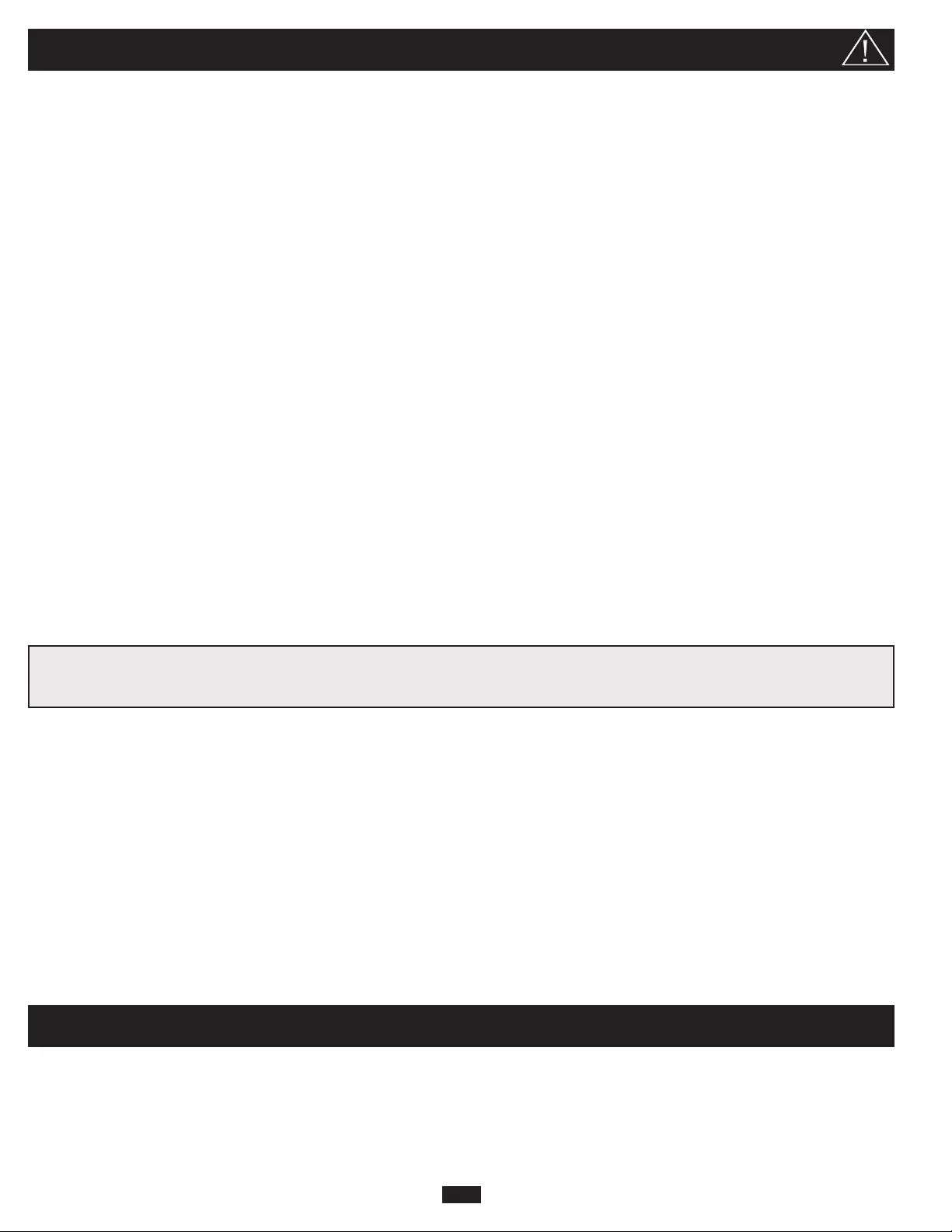
24A
Garantie limitée
TRIPP LITE garantie que ses onduleurs/chargeurs sont exempts de défauts de matériel et de main d'œuvre durant une période d'un an (excepté à l'extérieur des É.-U., du Canada et du Mexique-120 jours) à partir de la date d'achat par l'acheteur final.
Les obligations de TRIPP LITE en regard de cette garantie se limitent à la réparation ou au remplacement (à son choix) des produits défectueux. Pour faire effectuer une réparation dans le cadre de cette garantie, vous devrez obtenir un numéro d'autorisation
de retour de matériel (RMA) de Tripp Lite ou d'un centre de service autorisé Tripp Lite. Les produits devront être retournés à Tripp Lite ou à un centre de service autorisé Tripp Lite, frais de port prépayés, et devront être accompagnés d'une brève description du
problème rencontré et d'une preuve d'achat mentionnant la date et le lieu. Cette garantie ne s'applique pas à l'équipement qui a été endommagé par accident, négligence ou mauvaise utilisation, ou qui a été modifié d'une façon ou d'une autre, y compris par
l'ouverture du boîtier de l'unité quelle qu'en soit la raison. Cette garantie s'applique seulement à l'acheteur initial qui a correctement enregistré le produit dans les 10 jours suivant l'achat au détail.
À L'EXCEPTION DES DISPOSITIONS CI-DESSUS, TRIPP LITE N'OFFRE AUCUNE GARANTIE, EXPRESSE OU IMPLICITE, Y COMPRIS DES GARANTIES DE QUALITÉ COMMERCIALE OU D'ADAPTATION À UNE UTILISATION PARTICULIÈRE. Certains
états n'autorisent pas la limitation ou l'exclusion de garanties implicites; conséquemment, les limitations ou exclusions susmentionnées peuvent ne pas s'appliquer à l'acheteur.
À L'EXCEPTION DES DISPOSITIONS CI-DESSUS, TRIPP LITE NE POURRA EN AUCUN CAS ÊTRE TENU RESPONSABLE DE DOMMAGES DIRECTS, INDIRECTS, SPÉCIAUX OU FORTUITS DÉCOULANT DE L'UTILISATION DE CE PRODUIT, MÊME
SI L'UTILISATEUR A ÉTÉ AVISÉ DU RISQUE DE TELS DOMMAGES. En particulier, Tripp Lite ne pourra être tenu responsable de frais quelconques, comme la perte de bénéfices ou de recettes, la perte d'équipement, la perte d'usage de l'équipement, la
perte de logiciels, la perte de données, les frais de remplacement et les réclamations d'un tiers, ou autre.
Tripp Lite mène une politique d'amélioration continue. Les spécifications sont sujettes à changement sans préavis.
Importantes consignes de sécurité
CONSERVER CES DIRECTIVES
Cemanuelcontientdesdirectivesimportantesetdesmisesengardequevousdevrezrespecterdurantl'installation,l'utilisationetl'entreposage
de tous les onduleurs/chargeurs Tripp Lite.
Mise en garde concernant l'emplacement
• Installervotreonduleur/chargeur(pouruneapplicationmobileoustationnaire)àunemplacementoudansuncompartimentoù
l'expositionàlachaleur,àlapoussière,àlalumièredirectedusoleiletàl'humiditéestréduite.
• Bienquevotreonduleur/chargeursoitrésistantàl'humidité,iln'estpasÉTANCHE.Noyerl'unitédéclencherauncourt-circuitetpeut
entraînerdesblessurescorporellesduesàunchocélectrique.Nejamaisimmergerl'unitéetévitertoutezoneoùpourraits'accumuler
de l'eau stagnante. Le montage doit se faire à l'emplacement le plus sec possible.
• Maintenezundégagementminimalde5cmàl'avantetàl'arrièredel'onduleur/chargeurpourgarantirunebonnecirculationd'air.Plus
lachargedel'équipementbranchéestlourde,plusl'unitégénéreradechaleur.
• Nepasinstallerl'onduleur/chargeurprèsdesupportmagnétiquedemémoire,unecorruptiondesdonnéespourraitenrésulter.
• Nepasinstallerprèsdematériauxinflammables,decombustibleoudeproduitschimiques.
• Nepasmonterl'unitéavecsonpanneauavantouarrièreàl'envers(quelquesoitl'angle).Monterdecettefaçonvaentraver
sérieusementlerefroidissementinternedel'unité,endommageantleproduitnoncouvertsousgarantie.
Mises en garde : Connexion d'équipement
• Lestension,âge,puissanceenampères/heureettypedesbatteriesdesystèmedebatteriesmultiplesdoiventêtreidentiques.
• Àcausedelapossibilitéd'accumulationd'hydrogèneexplosifprèsdesbatteriessiellesnesontpasbienventilées,ilnefautpas
installervosbatteries(quecesoitpouruneapplicationmobileoustationaire)dansuncompartimentsanscirculationd'air.Idéalement,
toutcompartimentdevraitdisposerd'uneventilationd'airextérieur.
• Desétincellespeuventavoirlieudurantlebranchementfinaldelabatterie.Observertoujourslabonnepolaritéquandvousbranchez
les batteries.
• Nepaslaisserd'objetsencontactaveclesdeuxbornesd'entréeCC.Nepasétablirdecourtcircuitoudepontentrecesbornes.Cela
pourraitentraînerdesblessurescorporellessérieusesetdesdommagesmatériels.
Advertencias sobre la conexión de equipos
Ilestdéconseilléd'utilisercetéquipementdansdesapplicationsmédicalesoùunepannedecetéquipementpourrait
normalementprovoquerlapannedel'équipementdesurvieoualtérernotablementsasécuritéousonefficacité.Nepasutiliser
cetéquipementenprésenced'unmélangeanesthétiqueinflammableavecdel'air,del'oxygèneoudel'oxydenitreux.
• Modèlesàcordon:Nepasmodifierlaficheoulaprisedel'onduleur/chargeurdefaçonàéliminersaconnexiondemiseàlaterre.Ne
pasutiliserd'adaptateurquiélimineraitlaconnexiondemiseàlaterredelafiche.
• Branchervotreonduleur/chargeurseulementàuneprisedeCAcorrectementmiseàlaterreouàunesourceàraccordementfixe.Ne
pasbrancherl'unitésurelle-même;celal'endommageraetannuleravotregarantie.
• Vouspourriezconstateruneperformanceinégalesivousbranchezunéliminateurdesurtension,unrégulateurdetensionouun
systèmeUPSàlasortiedel'onduleur/chargeur.
Mises en garde : Fonctionnement
• Votreonduleur/chargeurnenécessitepasd'entretienderoutine.Nejamaisouvrirl'appareilquellequ'ensoitlaraison.Aucunepièceinternene
peutêtreréparéeparl'utilisateur.
• Destensionsmortellesexistentpotentiellementdansl'onduleur/chargeurtantqueleblocd'alimentationparbatterieoul'entréeCAsont
branchés.Pendanttouteréparation,l'alimentationparbatterieetl'entréeCAdoiventêtredébranchées.
• Nepasbrancheroudébrancherlesbatteriespendantlefonctionnementdel'onduleur/chargeurqu'ilsoitenmodedeconversionoude
charge.LecommutateurdemodedefonctionnementdevraêtredanslapositionOFF(fermé).Ilpourraits'ensuivreunedécharge
disruptive dangereuse.
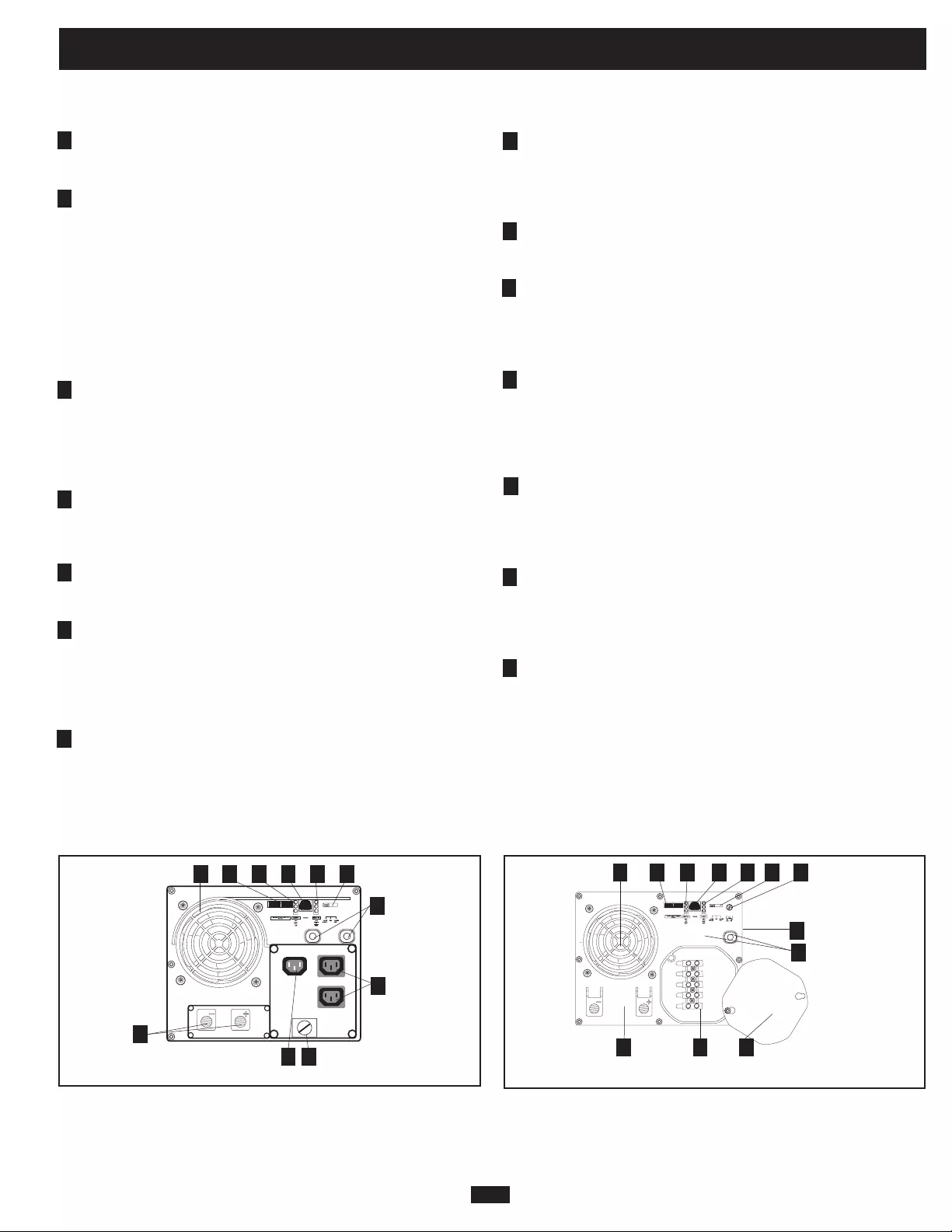
25A
Identification de caractéristiques
Identifierlesprincipalescaractéristiquesdevotremodèlespécifiqueetlocaliserrapidementlesdirectivespourmaximiserleurutilisation.
Configurationdes commutateurs DIP : Optimise le fonction-
nement de votre onduleur/chargeur, en fonction de votre applica-
tion.VoirleSectionConfigurationpourlesdirectivesderéglage.
Commutateur de mode de fonctionnement : Commande le
fonctionnement de l'onduleur/chargeur. Le réglage
“ AUTO/REMOTE ” (Automatique/distant) assure que votre
équipementreçoitunealimentationCAconstanteetininterrom-
pue. Il permet aussi à l'onduleur/chargeur d'être surveillé à
distance et commandé à l'aide d'un module distant
(modèleAPSRM4deTrippLite,venduséparément).Leréglage
“CHARGEONLY”(chargeseulement)permetàvosbatteries
dereveniràlachargemaximaleplusviteenfermantl'onduleur
ce qui arrête la décharge de la batterie. Voir le Section
Fonctionnementpourlesdirectivesderéglage.
Voyantslumineuxdefonctionnement:Des“feuxdecircula-
tion ” intuitifs indiquent si l'onduleur/chargeur fonctionne sur le
courant CA de secteur ou sur le courant CC de la batterie. Ils
vousavertissentégalementsilachargedel'équipementbranché
esttropélevée.VoirleSectionFonctionnementpourlesdirec-
tivesdelecturedesvoyantslumineux.
Voyants lumineux de batterie : Des “ feux de circulation ”
intuitifsindiquentleniveauapproximatifdelachargedevotre
batterie.VoirleSectionFonctionnementpourlesdirectivesde
lecturedesvoyantslumineux.
BornesducourantCC : Se connectent aux bornes de votre
batterie. Voir la section Branchement de la batterie pour les
directives de branchement
PrisesdesortieCA(passurlesmodèlesàraccordementfixe)
: Les prises de sortie IEC-320 vous permettent de brancher
l'équipementquevousbrancherieznormalementdansuneprise
de courant. Les modèles choisis disposent également d'un
adaptateur universel de sortie CA qui vous permet de brancher
votreéquipementavecunegrandevariétédefiche.
Prisesd'entréeCA(passurlesmodèlesàraccordementfixe):
Les prises d'entrée IEC-320 connectent l'onduleur/chargeur à
n'importe quelle source de courant CA de secteur ou produit par
unegénératriceàl'aided'uncâbleéquipéd'unefichespécifique
au pays, fourni par l'utilisateur.
Barrette à raccordement fixe de bornes d'entrée de sortie
CA(passurlesmodèlesàcordon):Connectesécuritairement
l'onduleur/chargeurausystèmeélectriquedel'installationoudu
véhicule.VoirlasectionConnexionEntrée/Sortiepourlesdirec-
tives de branchement.
Disjoncteurs réarmable : Protège votre onduleur/chargeur
contre les dommages dus à une surcharge. Voir le Section
Fonctionnementpourlesdirectivesderéarmement.
Connecteurdemoduledistantdecommande:Permet la sur-
veillance à distance et la commande à l'aide d'un module option-
nel(modèleAPSRM4deTrippLite,venduséparément).Voirle
manueldupropriétairedumoduledistantpourlesdirectivesde
branchement.
Commandeduconservateurdechargedebatterie(Détection
decharge)(disponiblesurlesmodèleschoisis):Conserve la
puissancedelabatterieenréglantleniveaudelachargebasseà
laquelle l'onduleur de l'onduleur/chargeur se ferme automa-
tiquement. Voir le Section Configuration pour les directives de
réglages.
Cossedemiseàlaterreducircuitprincipal:Met correcte-
ment à la terre l'onduleur/chargeur à la prise de terre ou au sys-
tèmedemiseàlamasseduvéhiculeoudubateau.Voirlasec-
tion Branchement de la batterie pour les directives de branche-
ment
Ventilateurderefroidissementàcommandethermostatique:
Un ventilateur silencieux et efficace contrôle la température
interneetprolongeladuréedeservicedel'équipementLeven-
tilateurfonctionnedefaçonintermittenteselonlatempératureet
la charge.
Capotd'Entrée/SortieCAàraccordementfixe
Fonctionnalitédedémarrageavecunebatterieàplat(pour
touslesmodèles,interne,nonmontré):Les circuits internes
vouspermettentdemettreenmarchel'onduleur/chargeurmême
avec une batterie à plat branchée à l'unité. Du moment que
l'onduleur/chargeurestbranchéà une sourced'énergieCAdu
secteur ou produit par génératrice, l'onduleur/chargeur fera
passerlecourantCAàl'équipementbranchéetchargeralesbat-
teriesbranchées.
1
2
3
4
5
6
7
8
9
10
11
12
13
14
OUTPUT/NEUTRAL
OUTPUT/HOT
GROUND
INPUT/NEUTRAL
INPUT/HOT
“FOR USE WITH COPPER WIRE ONLY”
124 3
5
9
10 1113
814
Vue frontale (Modèles câblés 2012, 2424 et 3636)
12 Montage arrière, non montré
Vue frontale (Modèles à cordon 750 et 1250)
1 24 3
5
6
9
1013
712

26A
Fonctionnement
Commutation des modes
Après avoir configuré, monté et branché votre onduleur/chargeur,
vousêtescapabledelefairefonctionnerencommutantentrelesdif-
férentsmodesdefonctionnementselondevotresituation:
AUTO/REMOTE (automatique/distant) : Passer
surcemodequandvousavezbesoindecourantCA
constant et ininterrompu pour vos appareils et votre
équipementbranchés.Tantqu'ilyducourantCAdu
secteurouproduitpargénératrice,l'onduleur/char-
geur continuera à faire passer le courant CA à
l'équipement branché et chargera les batteries branchées. Puisque
l'onduleur est ON (en marche, mais enAttente) dans ce mode, il
commutera automatiquement vers votre système de batterie pour
fournir du courant CA à l'équipement branché en l'absence d'une
source de secteur/génératrice ou dans des situations de basse ou
hautetension.“AUTO/REMOTE”permetaussiàunmodule distant
de commande optionnel ( modèleAPSRM4 de Tripp Lite, vendu
séparément)defonctionnerquandilestbranchéàl'unité.
CHARGEONLY(chargeseulement): Passer sur
ce mode quand vous n'utilisez pas d'appareils et
d'équipementbranchésdefaçonàconserverlapuis-
sance de la batterie en mettant l'onduleur hors fonc-
tion. Tant qu'il y aura du courant CA du secteur ou
produitpargénératrice,l'onduleur/chargeurcontinu-
eraàfairepasserlecourantCAàl'équipementbranchéetchargera
lesbatteriesbranchées.Cependant,puisquel'onduleur est OFF (à
l'arrêt)danscemode,ilnefournirapasdecourantCAàl'équipement
branchéenl'absenced'unesourcedesecteur/génératriceoudansdes
situations de basse ou haute tension.
OFF(ARRÊT): Passer sur ce mode pour fermer
complètement l'onduleur/chargeur, empêchant
l'onduleur de tirer du courant des batteries et
empêchantaussilecourantCAdesecteurdepasser
versl'équipementbranchéouderechargerlesbatter-
ies.Utiliserce commutateur pour réarmer automa-
tiquement l'unité si elle s'arrête à cause d'une surcharge ou d'une
surchauffe.Enleverd'abordlachargeexcessiveetlaisserl'unitése
refroidir suffisamment (applicable à votre situation). Commuter sur
“ OFF ” puis revenir sur “AUTO/REMOTE ” ou “ CHARGE
ONLY”auchoix.Sil'uniténeseremetpasenmarche,enleverplus
dechargeou laisser l'unité refroidirpluslongtempsetessayerde
nouveau. Utiliser un module distant de commande optionnel
(modèleAPSRM4deTrippLite,venduséparément)pourremettre
l'unitéenfonctionseulementencasdesurcharge.
Voyants lumineux
Votre onduleur/chargeur (ainsi que module distant de commande
TrippLiteoptionnel,venduséparément)estéquipéd'unjeusimple,
intuitif et convivial de voyants lumineux. Les “ feux de
circulation”facilesàseremémorervouspermettront,peuaprèsla
premièreutilisation,desavoird'uncoupd'œill'étatdelachargede
la batterie ainsi que de se rendre compte de détails de fonction-
nementetd'étatsdéfectueux.
VoyantvertLIGNE: Si le commutateur de mode de
fonctionnement est sur “ AUTO/REMOTE, ” ce
voyant SERA ALLUMÉ CONTINUELLEMENT
quand votre équipement branché recevra
continuellement un courant CA d'une source du
secteuroud'unegénératrice.
Si le commutateur de mode de fonctionnement est réglé sur
“CHARGEONLY,”cevoyantCLIGNOTERApourvousavertir
quel'onduleurdel'unitéestOFF(fermé)etNefourniraPasdecou-
rantCAenl'absenced'unesourcedusecteuroud'unegénératriceou
dans des situations de basse ou haute tension.
Voyant jaune INV (conversion): Ce voyant sera ALLUMÉ
CONTINUELLEMENTquandvotreéquipementbranchérecevra
du courant converti CA, fourni par la batterie (en l'absence d'une
source de secteur/génératrice ou dans des situations de basse ou
hautetension).Cevoyantseraéteintlorsquelecou-
rant CA alimentera la charge. Ce voyant
CLIGNOTERA pour vous avertir quand la charge
serainférieureauréglagedeconservationdecharge
debatterie(détectiondecharge)
Voyant rouge LOAD (Charge) : Ce voyant rouge
seraALLUMÉECONTINUELLEMENTchaquefois
que l'onduleur sera en fonction et que le courant
demandéparlesappareilset l'équipement branchés
excèdera100%delacapacitédecharge.Levoyant
CLIGNOTERA pour vous avertir quand l'onduleur
sera hors fonction à cause d'une surcharge ou d'une surchauffe
sévères.Danscecas,tournerlecommutateurdemodedefonction-
nementsur“OFF”,enleverlasurchargeetlaisserl'unitérefroidir
Vous pourrez alors tourner le commutateur de mode de fonction-
nementsursoit“AUTO/REMOTE”ousur“CHARGEONLY”
unefoisqu'elleseraadéquatementrefroidie.Cevoyantseraéteint
lorsque le courant CA alimentera la charge.
Voyants lumineux de batterie : Ces trois voyants s'allumeront
selonplusieursséquencespourindiquerleniveauapproximatifde
chargedevotregroupedebatteriesbranchéetvousavertirdedeux
étatsdéfectueux;
Niveauapproximatifdechargedebatterie*:
Voyantallumé Puissancedelabatterie
(Encharge/Endécharge)
Vert 91%-Pleine
Vert&Jaune 81%-90%
Jaune 61%-80%
Jaune&rouge 41%-60%
Rouge 21%-40%
Les trois voyants
sontéteints 1%-20%
Rougeclignotant 0%(onduleur
hors fonction)
* Les niveaux de charge sont approximatifs. Les conditions réelles
varient selon l'état de la batterie et la charge.
Étatdéfectueux
Voyantallumé Étatdéfectueux
Lestroisvoyants Déchargeexcessive
clignotentlentement* (fermeture de l'onduleur)
Les trois voyants Surcharge (fermeture
clignotentrapidement**duchargeur)
*Approximativement allumé 1/2 seconde, éteint 1/2 seconde. Voir la section Dépannage
**Approximativement allumé 1/4 de seconde, éteint 1/4 de seconde. Peut aussi indiquer qu'il existe
un défaut de chargeur de batterie, Voir la section Dépannage..
Réarmer votre onduleur/chargeur pour
restaurer le courant CA
Votre onduleur/chargeur peut cesser de fournir du courant CA ou du
courantdechargeCCpourseprotégerd'unesurchargeoupourproté-
gerlesystèmeélectrique.Pourrestaurerunfonctionnementnormal:
Remiseencircuitaprèssurcharge: Placer le commutateur de mode
defonctionnementsurOFFetenleverquelques-unesdeschargesélec-
triquesbranchées(c.-à-d.fermerquelques-unsdesappareilsconsom-
mant de courant qui pourraient avoir causé la surcharge de l'unité)
Attendre une minute et replacer le commutateur de mode de fonction-
nementsoitsur“AUTO/REMOTE”ousur“CHARGEONLY.”
Réarmerledisjoncteurdesortie:Vérifierunàunlesdisjoncteurs
de sortiesurle panneauavantdel'unité. Encasde déclenchement,
enlever de la charge électrique, puis attendre une minute pour per-
mettreauxcomposantsderefroidiravantderéarmerledisjoncteur.
Voir la section Dépannage pour d'autres raisons possibles d'une
absence de courant CA.
1
2
3
4
5
6
7
1
2
12 3
456
7
12
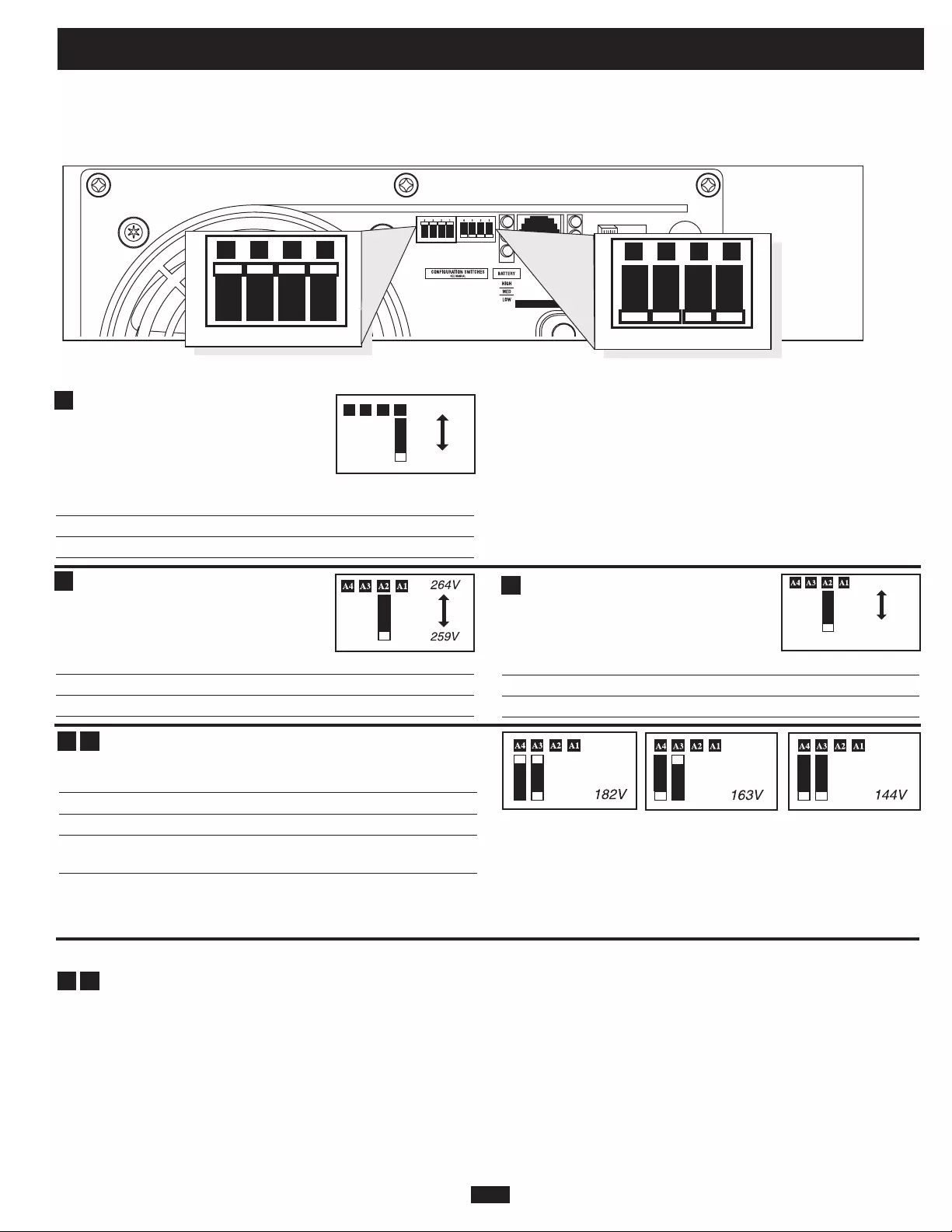
27A
Configuration
Choisiruntypedebatterie—Tous
lesmodèles(REQUIS)
ATTENTION :Le réglage de commutateur DIP du type de
batterie doit correspondre aux types de batteries que vous
connectez, ou vos batteries pourraient se dégrader ou être
endommagées avec le temps. Voir 'Sélection de batterie "
pour plus de renseignements.
Typedebatterie Positionducommutateur
Batterieàcelluleàgel(scellée) Haut
Batterieàcelluleliquide(ventilée) Bas(réglaged'usine)
Réglage de la configuration des commutateurs DIP
Àl'aided'unpetitoutil,réglerlescommutateursDIP(situéssurlepanneauavantdevotreunité,voirleschéma)pouroptimiserlefonction-
nement de l'onduleur/chargeur en fonction de votre application.
A1A2A3A4 cellule à gel
cellule liquid
e
INPUT C/B 10A OUTPUT C/B 12A
B4 B3 B2 B1 A4 A3 A2 A1
Groupe B de commutateurs DIP Groupe A de commutateurs DIP
Groupe A de commutateurs DIP
Choisirlepointdebassetensionàl'entréeCApourle
passagesurbatterie—Touslesmodèles*(OPTIONNEL)
Tension Positionducommutateur
182V NoA4enhaut&NoA3enhaut/enbas
163V NoA4enbas&NoA3enhaut
144V NoA4enbas&NoA3enbas
(réglaged'usine)
*Laplupartdevotreéquipementbranchéfonctionneraadéquatementlorsquelepointhautdetensiond'entréeCAdevotreonduleur/chargeurseralaissésursonréglaged'usineetsonpointbassera
régléà182V.Cependant,sil'unitépassefréquemmentsurbatterieàcausedevariationstemporairesdetensionbasseetélevéedusecteurquin'auraientquepeud'effetsurlefonctionnementde
l'équipement,vouspourriezvouloirajustercesréglages.Enaugmentantlepointhautdetensiond'entréeCAouenabaissantlepointbasdetensiond'entréeCA,vousréduirezlenombredefoisoù
votreunitépasserasurbatterieàcausedevariationsdetension.
Groupe B de commutateurs DIP
Choixdupartagedecharge—OPTIONNEL
Votreonduleur/chargeurpossèdeunchargeurdebatterieàsortieélevéequipeutconsommerunequantitéimportantedecourantCAdu
secteuroudelagénératricequandilchargeàsonrégimemaximal.Sivotreunitéalimente,àpleinrégime,encourantCAseslourdes
chargesélectriquesbranchéesetqu'enmêmetempscettechargeélevéesurvient,ledisjoncteurd'entréeCApourraitsauterentraînantl'arrêt
de l'alimentation du secteur.
Pourréduireleschancesdedéclenchementdecedisjoncteur,lesonduleur/chargeurspeuventêtrerégléspourlimiterautomatiquementla
sortieduchargeur.LasommedelachargeCAdel'unitéetdel'alimentationdechargeresteinférieureàlachargenominaledudisjoncteur.
Cettefonctiondelimitationduchargeurdisposedequatreréglages,vouspermettantderéduirelaconsommationdechargedeplusenplus
bas,sinécessaire,siledisjoncteurd'entréeCAcontinuedesedéclenchersousdeschargesCAnormalesd'appareilsbranchésenavalde
l'unité.LesfiguresdelapagesuivantemontrentcommentréglervoscommutateursDIPpourdéterminerl'importancedelachargebranchée
à votre onduleur/chargeur avant que la limitation du chargeur ne commence.
A1
A2
A3
A4
B2
B1
Choisirlepointdehautetensionà
l'entréeCApourlepassagesur
batterie—APSINT2424,APSINT3636
uniquement*(OPTIONNEL)
Tension Positionducommutateur
264V Haut
259V Bas(réglaged'usine)
Inhibitionduchargeur—APSX750,
APSX1250,APSINT2012uniquement
(OPTIONNEL)
Chargeur Positionducommutateur
Blocage Haut
Miseenfonction Bas(réglaged'usine)
Blocage
Mise en
fonction
A2
OU
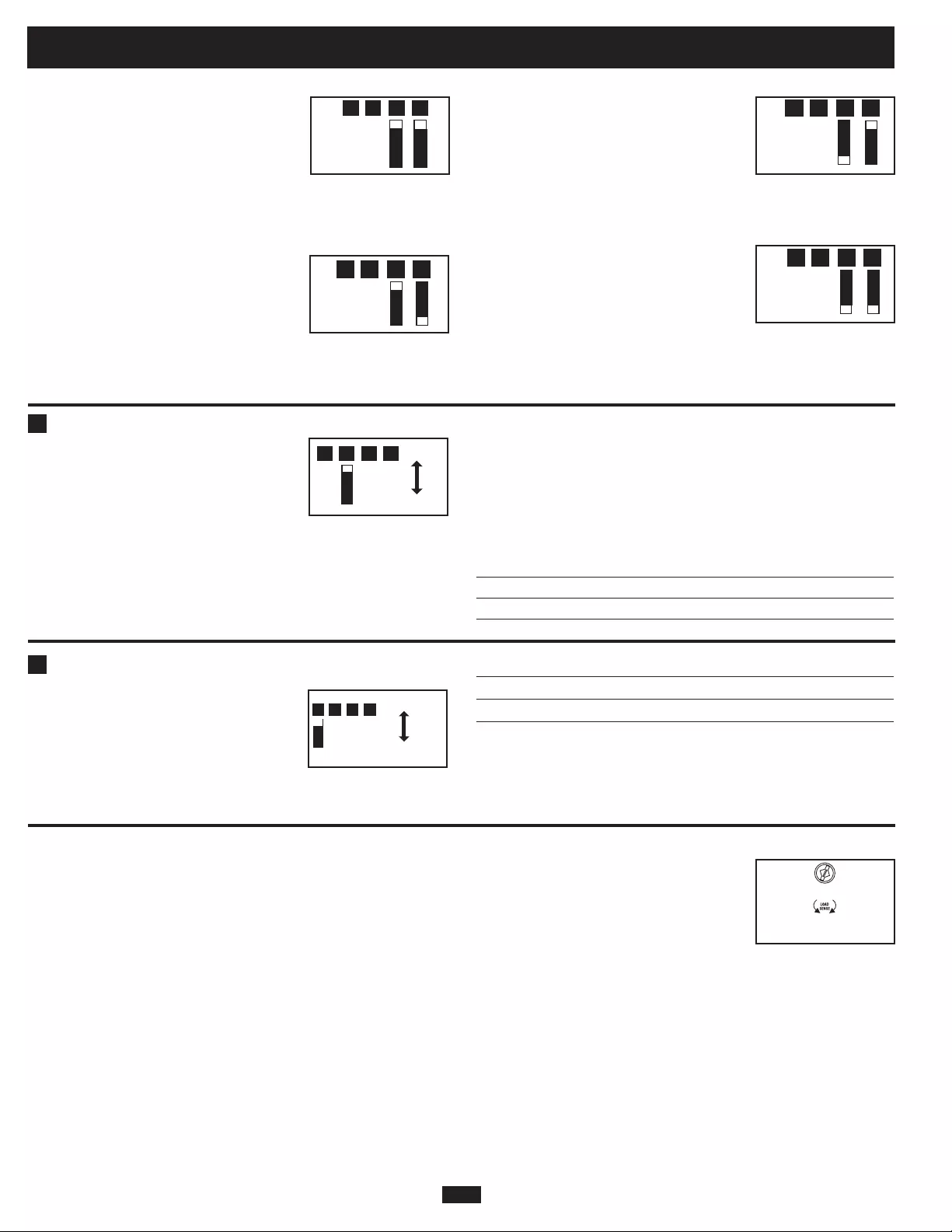
28A
Configuration (suite)
Réglagedel'intensitédechargedebatterie—OPTIONNEL
Vérifier les spécifications des options
d'intensité supérieure et inférieure de
charge de votre unité. En réglant sur la
charge supérieure, vos batteries se char-
geront à la vitesse maximale. En réglant
surlachargeinférieure,vousrallongezla
duréedevosbatteries(enparticulierlespluspetites).
Chargeurdebatterie: Positionducommutateur
Intensitéinférieuredecharge Enhaut(réglaged'usine)
Intensitésupérieuredecharge Enbas
ATTENTION : En commutant sur le réglage, l'utilisateur doit s'assurer que la puissance en
ampères/heure de son système de batterie excède l'intensité du réglage, ou les batteries pour-
raient s'endommager ou se dégrader.
Choixdel'égalisationdelachargedelabatterie—
OPTIONNEL
Ce commutateur DIP est engagé
momentanément pour amorcer le pro-
cessusd'égalisationdel'étatdecharge
des cellules de votre batterie par une
surcharge temporaire de toutes les cel-
lules. Cela permet de prolonger la vie de certains types de bat-
teries; consulter votre fabricant de batterie pour savoir si vos
batteries peuvent bénéficier de ce processus. Le processus
d'égalisationdelachargeestautomatique;unfoiscommencé,il
peutseulementêtrearrêtéenenlevantl'alimentationd'entrée.
Procédurederéglage
• Alleràlaposition“(égaliser)”(ENBAS)pendanttroissecondes.
• Alleràlaposition“Reset(réamorcer)”(ENHAUT)etrestezlà.
C'estunréglaged'usinepardéfaut.
ATTENTION : Ne pas laisser le commutateur DIP No3 dans la position basse après le début du
processus. L'égalisation de la charge de la batterie doit être effectuée en stricte concordance
avec les directives et les spécifications du fabricant de batterie.
Chargedelabatterie Positionducommutateur
Réamorcer Enhaut(réglaged'usine)
Égaliser Enbas—momentanément
Choixdespointsdelimitationduchar-
geurdebatterie—OPTIONNEL
Limitationmaximale(NoB1&NoB2en
haut, réglage d'usine) : La limitation du
chargeur prend effet au moment où une
charge de 120V CA est appliquée; la sortie du chargeur tombe
graduellementdelasortiepleinesanschargepassantede230Và
pas de sortie à pleine charge.
Limitationmoindre(NoB1enbasetNo
B2 en haut) : La limitation du chargeur
commence lorsque la charge de l'onduleur/
chargeur atteint 33 % du régime nominal
de l'onduleur/chargeur. La sortie du char-
geur tombe graduellement de la sortie
pleineà33%delachargenominaledel'onduleur/chargeuràenvi-
ron33%delasortiepleineàpleinecharge.
Limitationminimale(NoB1enhautET
NoB2enbas):Lalimitationduchargeur
commence lorsque la charge de l'onduleur/
chargeur atteint 66 % du régime nominal
de l'onduleur/chargeur. La sortie du char-
geurtombegraduellementdelasortiepleineà66%delacharge
nominaledel'onduleur/chargeuràenviron66%delasortiepleine
à pleine charge.
Pas de limitation (NoB2 & No B1 en
Bas):Aucunelimitationdechargeurpour
aucune grosseur de charge.
B1B2B3B4
B1B2B3B4
B1B2B3B4
B1B2B3B4
B1B2B3B4
Intensité inférieure
de charge
Intensité supérieur
e
de charge
Réglerlacommandedeconservationdechargedebatterie(Détecteurdecharge)—OPTIONNEL(passurlesmodèles750et1250)
Danslebutdesauvegarderlapuissancedelabatterie,l'onduleurdel'unités'arrêteautomatiquementenl'absence
de demande d'alimentation d'un équipement ou d'appareils branchés (la charge électrique). Quand l'onduleur/
chargeurdétecteunecharge,ilmetenmarcheautomatiquementlafonctiondel'onduleur.Lesutilisateurspeuvent
choisirlachargeminimalequel'onduleur/chargeurdétecteraenréglantlacommandedeconservationdechargede
batterie(voirschéma).Àl'aided'unpetitoutil,tournerlacommandedanslesenshorairepourabaisserlacharge
minimale qui sera détectée, entraînant la mise en marche l'onduleur pour de plus petites charges. Quand la
commandeestàfonddanslesenshoraire,l'onduleurfonctionnemêmesanscharge.Tournerlacommandedanslesensantihorairepour
augmenterlachargeminimalequiseradétectée,entraînant lamiseàl'arrêtl'onduleurjusqu'àcequelanouvellechargeminimalesoit
atteinte.
REMARQUE : Le réglage en usine est la rotation complète de la commande dans le sens horaire. Cependant, en fonction du seuil de charge auquel vous voudriez que l'onduleur réponde, vous devrez
régler la commande dans le sens antihoraire pour réduire sa sensibilité jusqu'à ce que l'onduleur soit actif seulement quand l'équipement et les appareils branchés seront réellement en usage.
Connexiondelacommandeàdistance—Optionnel
Touslesmodèlessontéquipésd'uneprisedestyletéléphoneà8conducteurssurlepanneauavantpourutilisationàl'aided'unmodule
distantdecommandeoptionnel(modèleTrippLiteAPSRM4,venduséparément).Lemoduledistantpermetàl'onduleur/chargeurd'être
montédansuncompartimentouunearmoirehorsdevue,toutenfonctionnantcommodémentdepuisunezonedistante.Voirlesdirectives
jointesaumoduledecommandeàdistance.
Égaliser
B1B2B3B4 Réamorce
r
OFF
(LESSER
LOAD
ON)
MAX
(GREATER
LOAD
ON)
B4
B3
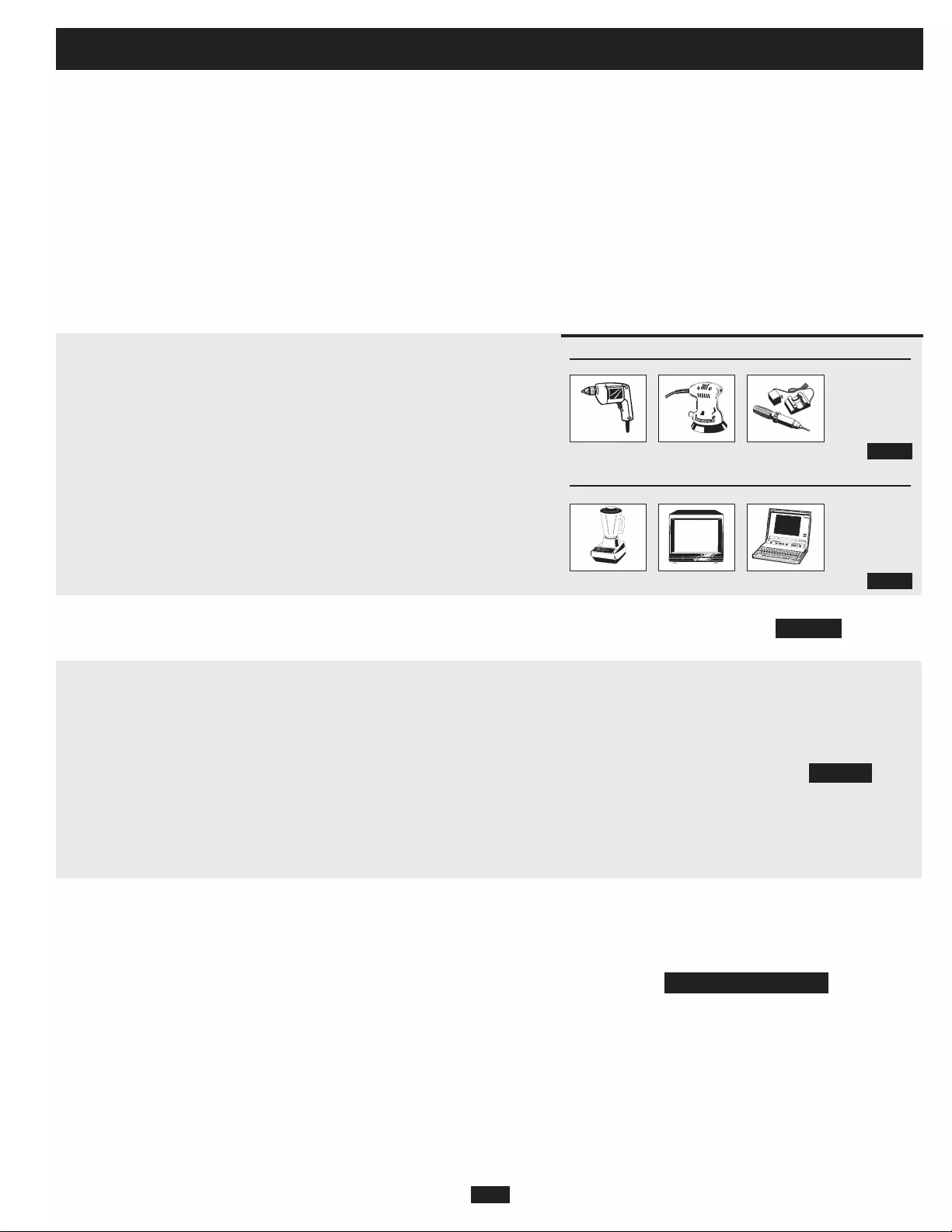
29A
Choix de batterie
Choisir le type de batterie
Choisirdesbatteries“àdéchargepoussée”pourobteniruneperformanceoptimaledevotreonduleur/chargeur.Lesbatteriesàcelullesliquides(ven-
tilées)ouàcellulesengel/AbsorbedGlassMat(scellée)sontidéales.Lesbatteries6voltsdevoiturettedegolf,marinesàdéchargepoussée,ou8D
à décharge poussée, sont aussi acceptables.Vous devrez régler le commutateur DIP de type de batterie de l'onduleur/chargeur (voir la section
Configurationpourplusderenseignements)pourcorrespondreauxtypesdebatteriesquevousconnectez,ouvosbatteriespourraientsedégraderou
êtreendommagéssurunelonguepériode.
Correspondance de la puissance en A/h de la batterie pour votre application
Choisirunebatterieouunsystèmedebatteriesquifourniraàvotreonduleur/chargeurunetensionCCappropriéeetunepuissanceenA/hsuf-
fisantepouralimentervotreapplication.Mêmesilesonduleur/chargeurssonthautementefficacespourlaconversionduCCauCA,leurpuis-
sancenominaledesortieestlimitéeparlapuissancetotaleenA/hdesbatteriesbranchéesetlasortiedel'alternateursivousenutilisezun.
• ÉTAPE1)Déterminationduwattagetotalrequis
Additionnez les puissances nominales de tout l'équipement que vous
brancherez à votre onduleur/chargeur. Les puissances nominales sont
généralementindiquéesdanslesmanuelsd'équipementousurlesplaques
signalétiques.Sivotreéquipementestindiquéenampères,multiplierle
nombre d'ampères par la tension du courant CA pour calculer la puissance
enwatts.(Exemple:Uneperceuseabesoinde1,3A.1,3Ao230volts=
300watts.)
REMARQUE : Votre onduleur/chargeur fonctionnera plus efficacement entre 75 % et 80 % de la puissance
indiquée sur la plaque signalétique.
• ÉTAPE2)Déterminationdel'intensitérequiseenCCdelabatterie
Divisezlewattagetotalrequis(d'aprèsl'étape1,ci-dessus)parlatensionde
labatterie(c.-à-d.12ou24V)pourdéterminerl'intensitérequiseenCC.
• ÉTAPE3)EstimationdelapuissancerequiseenA/hdelabatterie
Multipliezl'intensitérequiseenCC(d'aprèsl'étape2,ci-dessus)parlenom-
breestiméd'heuresdefonctionnementdevotreéquipementalimentéexclu-
sivementparbatterieavantquevousnedeviezrechargervosbatteriesenCA
surlesecteurouavecunegénératrice.Compenserpourl'inefficacitéenmul-
tipliantcechiffrepar1,2.Celavousdonnerauneestimationgrossièredela
puissancedebatterieenA/h(d'uneoudeplusieursbatteries)quevousdevrez
brancheràvotreCO.
REMARQUE : La puissance nominale en A/h des batteries est habituellement donnée pour un régime de
décharge de 20 h. Les puissances réelles en A/h sont moindres quand les batteries se déchargent à un régime
plus rapide. Par exemple, des batteries déchargées en 55 minutes fournissent seulement 50 % de leur puis-
sance nominale en A/h, tandis que les batteries déchargées en 9 minutes ne fournissent que 30 % de leur
puissance nominale en A/h.
• ÉTAPE4:Estimationdelarechargedebatterierequise,selon
votreapplication
Vousdevezlaisservosbatteriesserechargerassezlongtempspourrem-
placer la charge perdue pendant le fonctionnement de l'onduleur ou vous
épuiserezéventuellementvosbatteries.Pourestimerladuréeminimalede
recharge de vos batteries, selon votre application, divisez la puissance
requiseenA/hdevotrebatterie(d'aprèsl'étape3,ci-dessus)parl'ampérage
nominal de charge de votre onduleur/chargeur (voir la section
Spécifications).
REMARQUE : Pour les onduleur/chargeurs de Tripp Lite fournissant 1 000 watts ou moins d'alimentation
CA continue, une batterie à grande capacité sera normalement assez puissante pour alimenter plusieurs
applications avant qu'une recharge soit nécessaire. Pour les applications mobiles, si une seule batterie
est continuellement rechargée par un alternateur à ralenti élevé ou rapide, alors il ne sera peut-être pas
nécessaire de la recharger depuis le secteur ou d'une génératrice. Pour les onduleur/chargeurs de Tripp
Lite de plus de 1 000 watts utilisés dans les applications mobiles, Tripp Lite recommande que vous util-
isiez au moins deux batteries, rechargées si possible par un alternateur robuste chaque fois que le véhi-
cule est en marche. Les onduleur/chargeurs de Tripp Lite vous fourniront une alimentation adéquate pour
un usage ordinaire pendant des durées limitées sans le support d'une alimentation de secteur ou de
génératrice. Cependant, lors du fonctionnement de charges électriques extrêmement lourdes à leur puis-
sance maximale, vous pourriez avoir envie " d'assister vos batteries " en faisant tourner un générateur
auxiliaire ou un moteur de véhicule et le faire à une vitesse plus rapide que le ralenti.
Exemple
Outils
300W + 220W + 20W = 540W
Perçeuse Ponceuse orbitale Chargeur d'outil sans fil
Appareils
300W + 140W + 100W = 540W
Mélangeur TV couleur Ordinateur portable
540 watts ÷ 12V = 45 A CC
45 A CC o 5 h. (durée)
x 1,2 (taux d'inefficacité) = 270 A/h
270 A/h ÷ 30 A
Régime de l'onduleur/chargeur =
9 heures de recharge
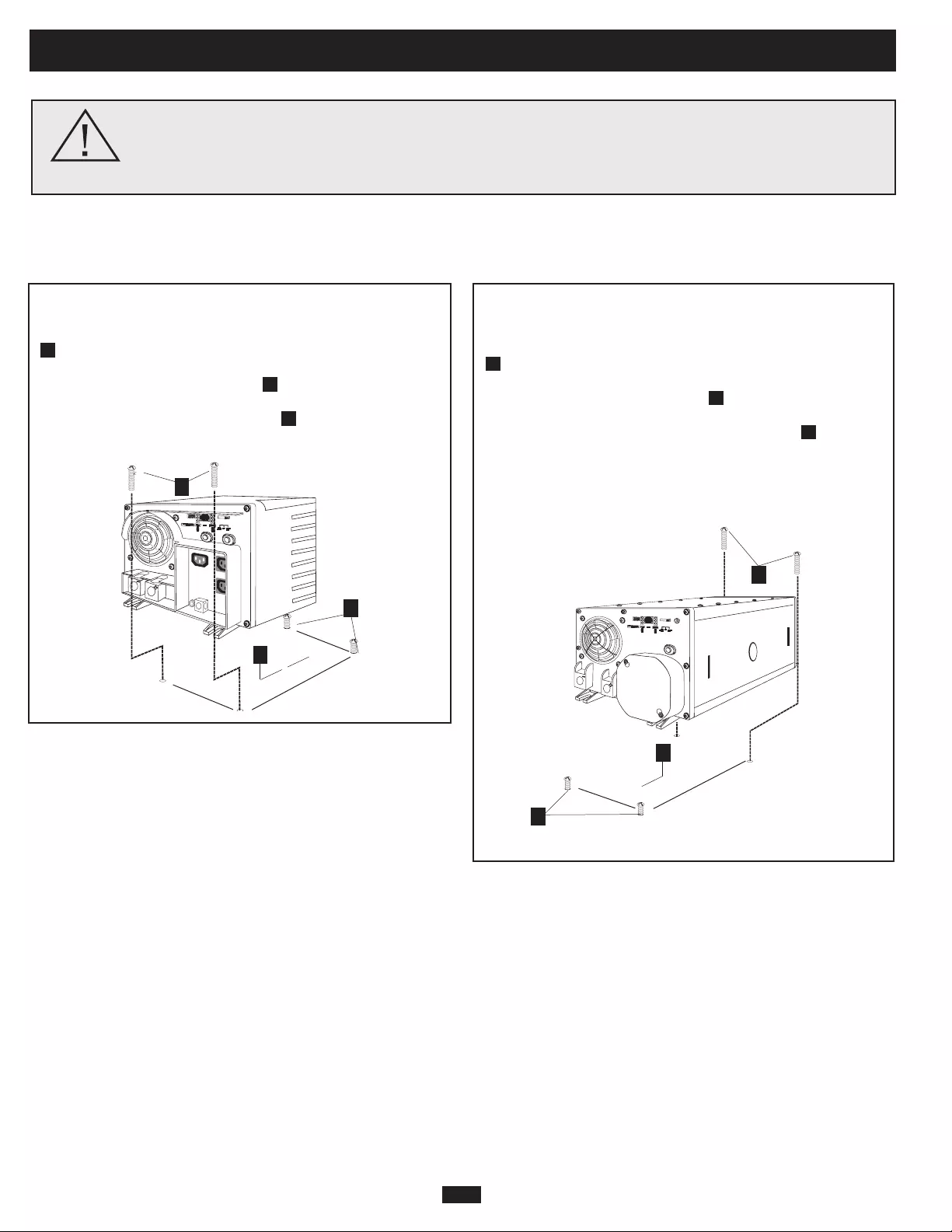
30A
Montage
MISE EN GARDE! Monter votre onduleur/chargeur AVANT de brancher la batterie
CC et l'alimentation CA. Omettre de suivre ces directives pourrait entraîner des
blessures corporelles et/ou des dommages à l'onduleur/chargeur et aux
systèmes branchés.
TrippLitefabriqueunevariétédedifférentsonduleur/chargeursavecdenombreusesetdifférentesoptionsdemontagepourlesapplicationssur
desvéhiculesetautres.TrippLiterecommandeunmontagepermanentdevotreonduleur/chargeurselonl'unedesconfigurationsillustréesci-
dessous.L'utilisateurdoitfournirlaquincailleriedefixationetdoitdéterminersilaquincaillerieetlasurfacedefixationpeuventsupporterlepoids
del'onduleur/chargeur.CommuniquezavecTrippLitesivousavezbesoind'aidepourlemontagedevotreonduleur/chargeur.
Montage horizontal véhiculaire et non-véhiculaire
(modèles 750 et 1250 seulement)
A Àl'aidedesmesuresduschéma,installerdeuxattachesde6mm
(¼po),fourniesparl'utilisateur,dansunesurfacehorizontalerigide,
laissantlestêteslégèrementrelevées. B Glisserl'onduleur/chargeur
entrelesattachespourengagerlesfentesdefixationmouléesàla
base du boîtier de l'onduleur/chargeur. C Installer et serrer deux
attaches de 6 mm (¼po) fournies par l'utilisateur dans les pieds de
montagemoulésenavantduboîtierdel'onduleur/chargeur.
Montage horizontal véhiculaire et non-
véhiculaire
(modèles 2012, 2424 et 3636 seulement)
A Àl'aidedesmesuresduschéma,installezdeuxattachesde6mm
(¼po) fourni par l'utilisateur dans une surface horizontale rigide,
laissantlestêteslégèrementdépasser. B Glisserl'onduleur/chargeur
versl'avantau-dessusdesattachespourengagerlespiedsdefixation
moulés en avant du boîtier de l'onduleur/chargeur. C Installer et
serrerdeuxattachesde6mm(¼po)fourniparl'utilisateurdansles
piedsdemontagemoulésenavantduboîtierdel'onduleur/chargeur.
Les pieds arrière se prolongent au-delà du boîtier de l'unité pour
fournirunespacedeventilationadéquatderrièrele(s)ventilateur(s)
derefroidissement;ilnefautpaslesenlever.
A
C
B
A
C
B
REMARQUE : Les boîtiers des modèles APS peuvent avoir différentes caractéristiques du panneau avant, mais tous ont un
montage identique.
11.4 cm
17.1 cm
20 cm
14.16 cm
38.12 cm
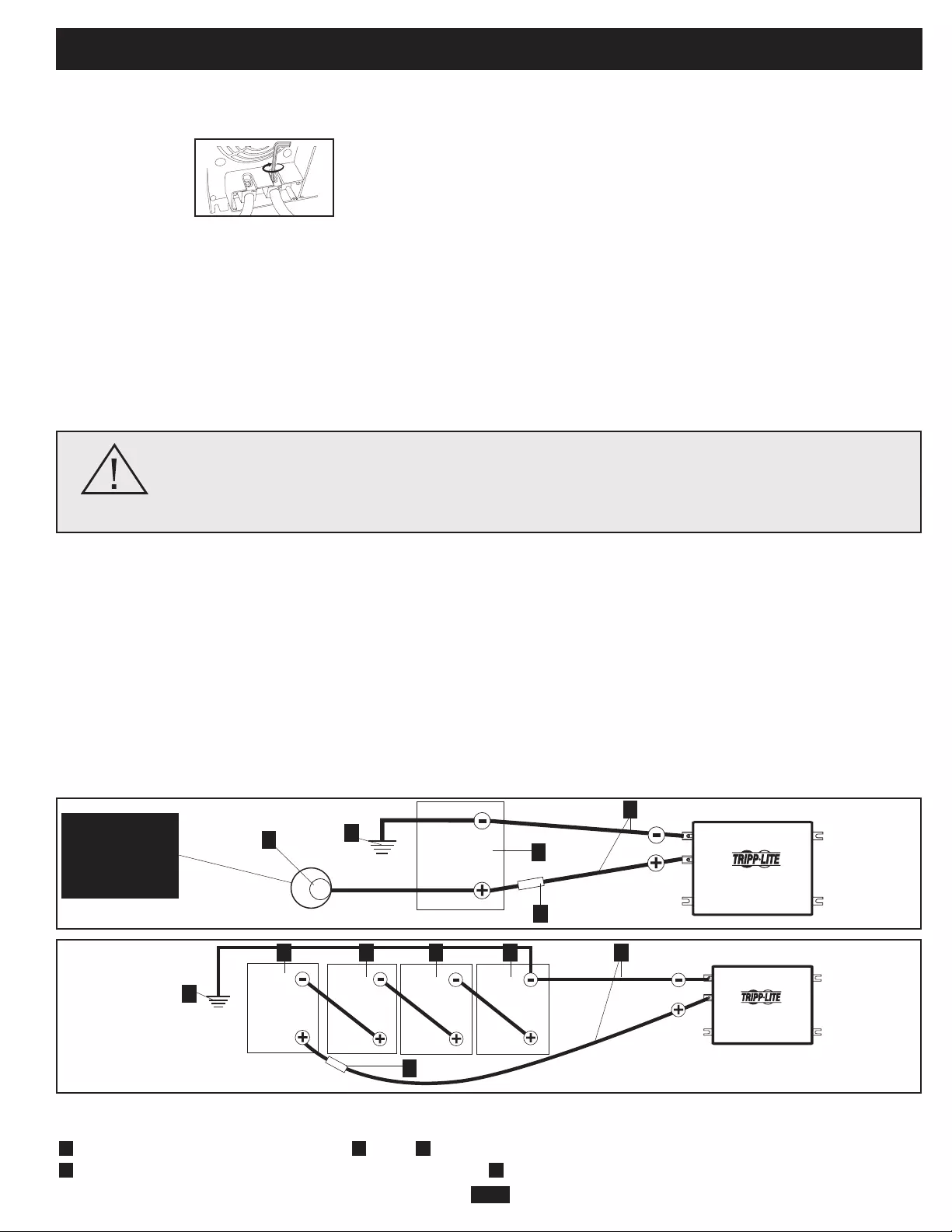
31A
Véhiculaire ou non- véhiculaire
Lesapplicationsnon-véhiculairescomprennentdesconfigurationsstationnairesainsiquemobilesquinesontpasintégréesdanslesystème
électriqued'unvéhicule.Enbranchementparallèle,latensionnominaleCCd'entréedevotreonduleur/chargeur(indiquéedanslasection
spécificationconne12V,24Vou36V)doitcorrespondreàlatensiondevosbatteries(12,24ou36),Parexemple,unonduleur/chargeur
de12VCCexigeraun12VCCdevotresystèmedebatterie.
Enbranchementensérie,latensiond'entréenominaleCCdevotreonduleur/chargeurdoitcorrespondreaunombredebatteriesmultiplié
parleurtension.Parexemple,unonduleur/chargeurde24VCCexigerasoitdeuxbatteriesde12Vbranchéesensérie(24=2x12)ou
quatrebatteriesde6Vbranchéesensérie(24=6x4)
Danslesapplicationvéhiculaires,latensiond'entréenominaleCCdevotreonduleur/chargeurdoitcorrespondre à la tension de votre ou
vosbatterie(s)-12volts.Bienqu'ilsoitpossibledebranchervotreonduleur/chargeuràlabatterieprincipaledusystèmeélectriquedevotre
véhicule,dansuncontextevéhiculaire,l'onduleur/chargeurserabranchéàl'uneouplusieursdesbatteriesauxiliairesdédiéesquiseront
isoléesdusystèmedepropulsionpourempêcherl'épuisementpossibledelabatterieprincipale.
CommuniqueraveclesupporttechniquedeTrippLitepourdel'aideconcernantlesbranchementssupplémentairesenparallèle,ensérieou
série/parallèle.
Remarque : X = Tension d'entrée nominale CC de votre onduleur/chargeur (indiquée dans la section spécifications
comme 12 V, 24 V ou 36 V)
1 Terreoumassedelabatterieduvéhiculeoubateau 2 Batterie 3 Fusible&GroupedefusibleshomologuésUL(montésàmoinsde45cmdelabatterie)
4 Câblagedegrosdiamètre,calibremaximal2/0pourcorrespondreauxbornes 5 Alternateur(pourbranchementsurvéhiculeoubateauseulement)
X Volts Inverter/Charger
X Volts
Branchement d'une seule batterie
4
1
2
3
24 Volt Inverter/Charger
6 Volts 6 Volts 6 Volts 6 Volts
Branchement de plusieurs batteries (en série)—
exemple 24 Volts
1
2 2 2 2 4
3
Branchement des batteries
5
Branchement
supplémentaire pour
des applications
véhiculaires
seulement.
•Branchementducâblage CC : Puisque
votre onduleur/
chargeur est un con-
vertisseur haute-
ment efficace
d'électricité, sa
puissance nominale
desortieestlimitée
par la longueur et le calibre des connecteurs
CC du câblage reliant la batterie à l'unité.
Utiliser le câblage le plus court et du plus
gros diamètre (maximum calibre 2/0) pour
fixerauxbornesd'entréeCCdevotreond-
uleur/chargeur.Uncâblagepluscourtetde
plusgroscalibreréduitlabaissedetension
CCetpermetuntransfertmaximaldecou-
rant. Votre onduleur/chargeur est capable de
délivrerunwattagedepointejusqu'à200%
de son wattage nominal de sortie continu
pour de brèves périodes. Il faut utiliser un
calibreplus grosquandunéquipementqui
consomme beaucoup fonctionne continuel-
lement dans ces conditions. Serrer vos
bornes d'onduleur/chargeur et de batterie à
environ 3,5 Newton/mètre de couple pour
créeruneconnexionefficaceetempêcherun
réchauffement excessif à cette connexion.
Un serrage insuffisant des bornes peut
annuler votre garantie. Voir la page des
spécifications (incluse séparément) pour
letableaudescalibresminimauxdecâble
recommandés.
•Branchementdemiseàlaterre:Àl'aide
d'un fil de calibre 8 (AWG) ou plus gros,
connectez la cosse principale de mise à la
terre au châssis du véhicule ou à la terre.
VoirlasectionIdentificationdescaractéris-
tiques pour localiser la cosse principale de
mise à la terre sur votre modèle d'onduleur/
chargeur. Toutes les installations doivent
être conformes aux codes et règlements
locaux.
•Connexiondefusible:Tripp Lire recom-
mandequevousconnectieztouteslesbornes
CC positives de votre onduleur/chargeur
directement à des fusibles et des blocs de
fusiblesàmoins de 450mm(18po) de la
batterie. Le calibre nominal du fusible doit
êtreégalousupérieuraucalibreminimalde
fusibleCCinscritdanslesspécificationsde
votre CC. Voir les spécifications pour les
recommandations de fusible et de bloc-fus-
ible. Voir les schémas ci-dessous pour
l'emplacement correct des fusibles.
Branchementdevotreonduleur/chargeuràvosbatteriesselonlesprocéduressuivantes:
MISE EN GARDE! • Ne pas mettre à la terre votre onduleur/chargeur au châssis du véhicule ou à la
terre peut entraîner un risque de choc électrique mortel.
• Ne jamais essayer de faire fonctionner votre onduleur/chargeur en le connectant directement à la
sortie d'un alternateur plutôt qu'à une batterie ou un groupe de batterie.
• Observez la bonne polarité avec toutes les connexions CC.
bornes d'entrée CC

32A
Branchement Entrée/Sortie CA
Pouréviterdesurchargervotreonduleur/chargeur,assurez-vousdefairecorrespondrelesexigencesdepuissancedel'équipementquevousvoulez
fairefonctionnerentouttemps(additionnezleurswatts)aveclapuissancedesortiedevotremodèledeCO.Quandvousévaluezlesexigences
depuissancedevotreéquipement,nepasconfondrelespuissancesnominalesdewattage“continu”etdewattage“depointe”.Laplupartdes
moteursélectriquesontbesoindeplusdepuissanceaudémarrage(“wattagedepointe”)qu'ilestnécessairepourunfonctionnementcontinu
aprèsdémarrage,quelquefoisau-delàde100%deplus.Certainsmoteurs,commelesréfrigérateursetlespompes,démarrentets'arrêtentde
manièreintermittenteselonlademande,nécessitantdu“wattagedepointe”àdenombreuxmomentsimprévisiblespendantleurfonction-
nement.
Branchementdesmodèlesàcordonsetprises
Àl'aided'uncâblemunid'unefichelocalefourniparl'utilisateur,brancherlaprised'entréeCAdel'onduleur/chargeurIEC-320àvotreprise
muraledesecteur.BranchervotreéquipementdirectementauxprisesdesortieCAdel'onduleur/chargeurIEC-320.Lesmodèleschoisisdis-
posentégalementd'unadaptateuruniverseldesortieCAquivouspermetdebranchervotreéquipementavecungrandevariétédefiche
Mise en garde! Consulter un électricien qualifié et suivre tous les codes électriques
applicables et les exigences pour une connexion à raccordement fixe. Débranchez
à la fois l'entrée CC et l'alimentation de secteur CA avant d'effectuer un raccorde-
ment fixe.
Connexiondesmodèlesavecbornesàraccordementfixe
Enleverlesvisetlecouvercledelaboîtedebornesàraccordementfixe.Enleverlesentréesdéfonçableslesplusprochesdelasourceélectrique
désiréeetdevotreéquipement.Fixerdestubesprotecteursde1,28cmdediamètre(fournisparl'utilisateur)auxentréesdéfonçablesetpasserles
filsàl'intérieur.Raccorderlestubesl'unàl'autreaveclaconnexiondemiseàlaterre.
OUTPUT/NEUTRAL
OUTPUT/HOT
GROUND
INPUT/NEUTRAL
INPUT/HOT
“FOR USE WITH COPPER WIRE ONLY”
Miseàlaterre*
• Connectezlesfilsentrantetsortantdemiseàlaterreaux
bornes de mise à la terre (verte) 1 .
EntréeCA
• Connectezlefilentrantvivantàlaborned'entréevivante
(brune) 2 .
• Connectezlefilentrantneutreàlaborned'entréeneutre
(bleu) 3 .
SortieCA
• Connectezlefilsortantvivantàlabornedesortievivante
(noire) 4 .
• Connectezlefilsortantneutreàlabornedesortieneutre
(blanche) 5 .
• Replacerlecouvercleetserrerlesvis.
*Si le tube protecteur entrant ne contient que deux fils (vivant et neutre), il doit être lié à la
cosse principale de mise à la terre de l'unité. Dans tous les cas, le tube protecteur doit être mis
à la terre ou à la masse du véhicule et il doit être mis à la masse avec le tube protecteur
sortant.
5
4
1
3
2
• CaractéristiqueDoubleBoost™
Lesonduleur/chargeursTrippLitedélivrentjusqu'àdeuxfoisle
wattage nominal de leur plaque signalétique pendant 10
secondes,* fournissant ainsi la puissance nécessaire pour
démarreràfroiddesoutilsetdel'équipementlourd.
• CaractéristiqueOverPower™
Lesonduleur/chargeursTrippLitepeuventfournirjusqu'à150%
duwattagenominaldeleurplaquesignalétiquependant1heure,*
fournissant ainsi beaucoup de puissance de réserve pour faire
fonctionner, plus longtemps et de manière fiable, des outils et de
l'équipement.
* La durée réelle dépend de l'âge de la batterie, du niveau de charge de la batterie et de la tem-
pérature ambiante.

33A
Réparation
Sivousretournezvotreonduleur/chargeuràTrippLite,veuillezl'emballersoigneusementdanssonEMBALLAGED'ORIGINE.Joindre
unelettredécrivantlessymptômesduproblème.Sil'onduleur/chargeurestencoresousgarantie,joindreunecopiedevotrefacture.Pour
fairefaireuneréparation,vousdevrezobtenirunnumérod'autorisationderetourdematériel(RMA)deTRIPPLITEoud'uncentrede
serviceautoriséTRIPPLITE.
Votreonduleur/chargeurnerequiertaucunentretienetnecontientaucunepièceréparableouremplaçableparl'utilisateur,maisildoitêtre
maintenuausecentouttemps.Vérifierpériodiquement,nettoyeretreserrertouteslesconnexionsdecâble,sinécessaire,àlafoisdel'unité
et de la batterie.
Essayezcessolutionsauxproblèmescourantsdel'onduleur/chargeuravantd'appelerpourdel'aide.Communiqueravecleserviceàlacli-
entèledeTrippLiteau(773)869-1234avantderenvoyervotreunitépourréparation.
Entretien
Dépannage
SYMPTÔME PROBLÈMES CORRECTIONS
Pas de sortie CA L'unité n'est pas correctement branchée sur le secteur. Brancher l'unité sur le secteur.
(Les trois voyants indicateurs sont éteints) Le commutateur de mode de fonctionnement est à " OFF " Mettre le commutateur de mode de fonctionnement sur
et l'entrée CA existe. " AUTO/REMOTE " ou " CHARGE ONLY ".
C'est normal lorsque le commutateur de mode de Aucune correction requise. La sortie CA reviendra quand l'entrée CA
fonctionnement est sur " CHARGE ONLY " et qu'il n'y a pas reviendra. Mettre le commutateur de mode de fonctionnement sur
d'entrée CA. " AUTO/REMOTE " si vous avez besoin de sortie CA.
Le disjoncteur du circuit a sauté. Réarmer le disjoncteur.
L'unité s'est éteinte à cause d'une surcharge (empêchant des Débrancher tous les chargeurs auxiliaires. Réarmer en mettant le
dommages à la batterie). Il peut y avoir un problème avec les commutateur de mode de fonctionnement sur " OFF ". Attendre une
chargeurs auxiliaires branchés ou avec le chargeur de l'unité minute et passer sur " AUTO/REMOTE " ou " CHARGE ONLY ". Si
l'unité reste en mode d'arrêt après plusieurs tentatives de
réarmement, communiquer avec le service à la clientèle de Tripp Lite
pour de l'aide.
L'unité s'est éteinte à cause d'une décharge excessive de Utiliser un chargeur* auxiliaire pour relever la tension de la batterie.
la batterie Vérifier les connexions externes de la batterie et le fusible. L'unité se
réarme automatiquement quand la condition est levée.
L'unité s'est éteinte à cause d'une surcharge. Réduire la charge. Réarmer en mettant le commutateur de mode de
fonctionnement sur " OFF ". Attendre 1 minute. Commuter sur
" AUTO/REMOTE " ou " CHARGE ONLY ".
La batterie ne se recharge pas Les batteries branchées sont mortes. Vérifier et remplacer les vieilles batteries.
(Entrée CA présente) Le fusible* de la batterie a sauté. Vérifier et remplacer le fusible*.
Le câblage* de la batterie est lâche " Vérifier et resserrer ou remplacer le câblage*.
L'unité s'est éteinte à cause d'une surcharge (empêchant des Débrancher tous les chargeurs auxiliaires. Réarmer en mettant le
dommages à la batterie) Il peut y avoir un problème avec les commutateur de mode de fonctionnement sur " OFF ". Attendre une
chargeurs auxiliaires branchés ou avec le chargeur de l'unité minute et passer sur " AUTO/REMOTE " ou " CHARGE ONLY ". Si
l'unité reste en mode d'arrêt après plusieurs tentatives de
réarmement, communiquer avec le service à la clientèle de Tripp Lite
pour de l'aide.
Le disjoncteur du circuit a sauté. Réarmer le disjoncteur.
Les trois voyants lumineux de la batterie La batterie est trop déchargée. Utiliser un chargeur* auxiliaire pour relever la tension de la batterie.
clignotent lentement Vérifier les branchements externes de la batterie et le fusible. L'unité
(éclair aux 1/2 secondes). se réarme automatiquement quand la condition est levée.
Les trois voyants lumineux de la batterie La batterie est trop chargée. L'unité s'éteindra pour empêcher Débrancher tous les chargeurs auxiliaires. Réarmer en mettant le
clignotent rapidement des dommages à la batterie. Il peut y avoir un problème avec commutateur de mode de fonctionnement sur " OFF ". Attendre une
(éclair aux 1/4 secondes). les chargeurs auxiliaires branchés ou avec le chargeur de l'unité minute et passer sur " AUTO/REMOTE " ou " CHARGE ONLY ". Si
l'unité reste en mode d'arrêt après plusieurs tentatives de
réarmement, communiquer avec le service à la clientèle de Tripp Lite
pour de l'aide.
Le voyant indicateur de fonctionnement La tension de la batterie est basse L'unité s'éteindra après Assurez-vous que le courant CA est présent pour recharger les
" LOW " rouge clignote 5 secondes. batteries. Mettre le commutateur de mode de fonctionnement sur
" OFF " puis sur" AUTO/REMOTE " ou " CHARGE ONLY ".
Mauvaise lecture à cause d'un câblage CC insuffisant ou Utiliser un câble CC de calibre suffisant bien branché au CO.
mal branché
Le voyant indicateur de fonctionnement L'onduleur est en surcharge. L'unité s'éteindra après Réduire la charge. Réarmer en mettant le commutateur de mode de
" LOAD " rouge clignote 5 secondes. fonctionnement sur " OFF ". Attendre 1minute. Commuter sur
" AUTO/REMOTE " ou " CHARGE ONLY ".
* fourni par l'utilisateur.
Commutateurdemodedefonctionnement
Voyantslumineuxdebatterie
Voyantslumineuxdefonctionnement
Numéros d'identification de conformité aux règlements
Pour les besoins d'identification et de certifications de conformité aux règlements, votre produit de Tripp Lite a reçu un numéro de série unique. Ce numéro de série se trouve sur la plaque d'identification du produit ainsi
que toutes les inscriptions d'approbation et renseignements exigés. Quand vous demandez des renseignements sur la conformité du produit, faites toujours référence au numéro de série Il ne faut pas confondre le numéro
de série avec l'inscription ou le numéro de modèle du produit.

Español
Français
PowerVerter®
1111 W. 35th Street, Chicago, IL 60609 USA
www.tripplite.com/support

35A
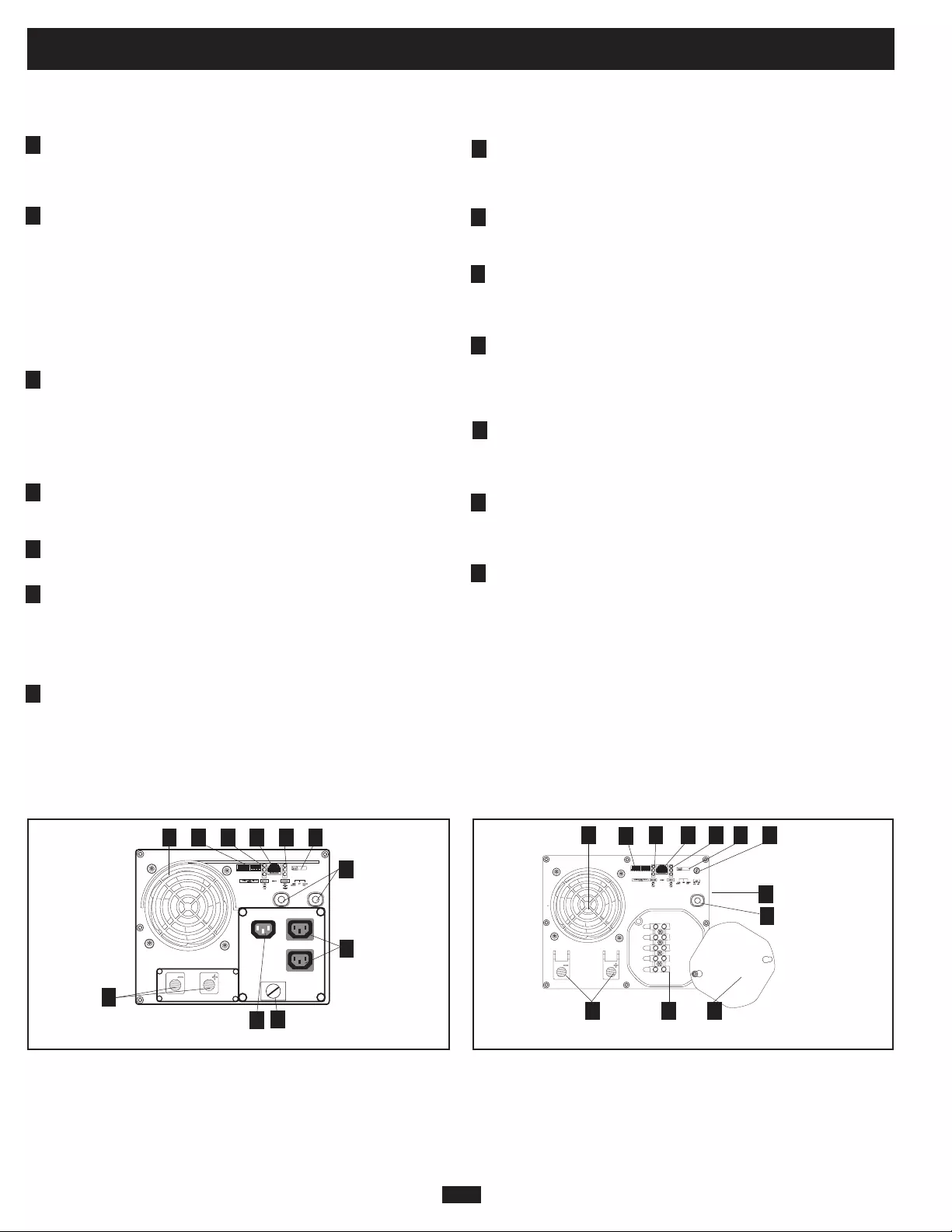
36A
1
2
3
4
5
6
7
8
9
10
11
12
13
14
OUTPUT/NEUTRAL
OUTPUT/HOT
GROUND
INPUT/NEUTRAL
INPUT/HOT
“FOR USE WITH COPPER WIRE ONLY”
124 3
5
9
10 1113
8 14
12
1 24 3
5
6
9
1013
712

37A
1
2
3
4
5
6
7
1
2
12 3
456
7
12
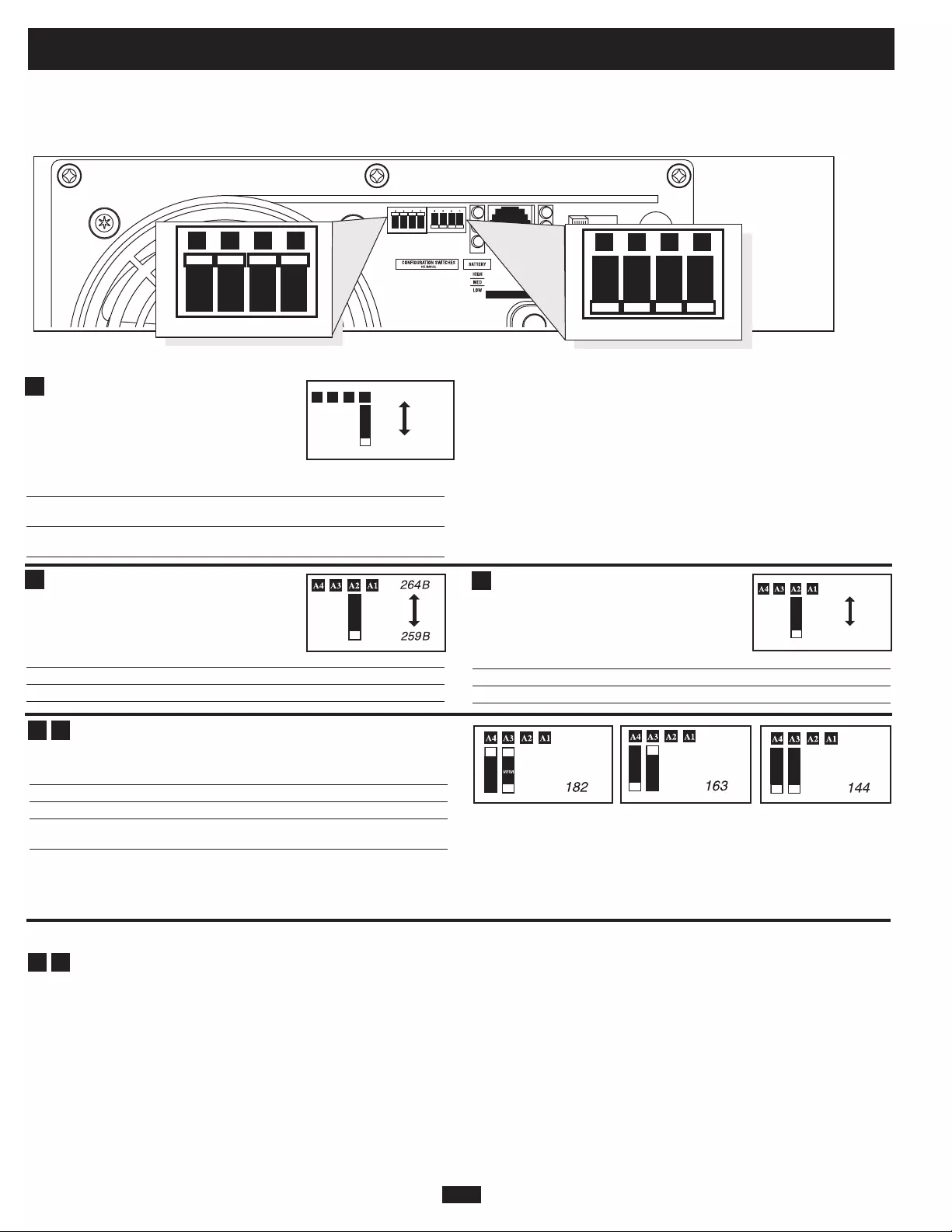
38A
A1A2A3A4
INPUT C/B 10A OUTPUT C/B 12A
B4 B3 B2 B1 A4 A3 A2 A1
A1
A2
A3
A4
B2
B1
B
B
B
A2

39A
B1B2B3B4
B1B2B3B4
B1B2B3B4
B1B2B3B4
B1B2B3B4
B1B2B3B4
OFF
(LESSER
LOAD
ON)
MAX
(GREATER
LOAD
ON)
B4
B3

40A
300 + 220 + 20 = 540
300 + 140 + 100 = 540

41A
A
B
C
A
B
C
A
C
B
A
C
B
Ï
11.4 cm
17.1 cm
20 cm
14.16 cm
38.12 cm
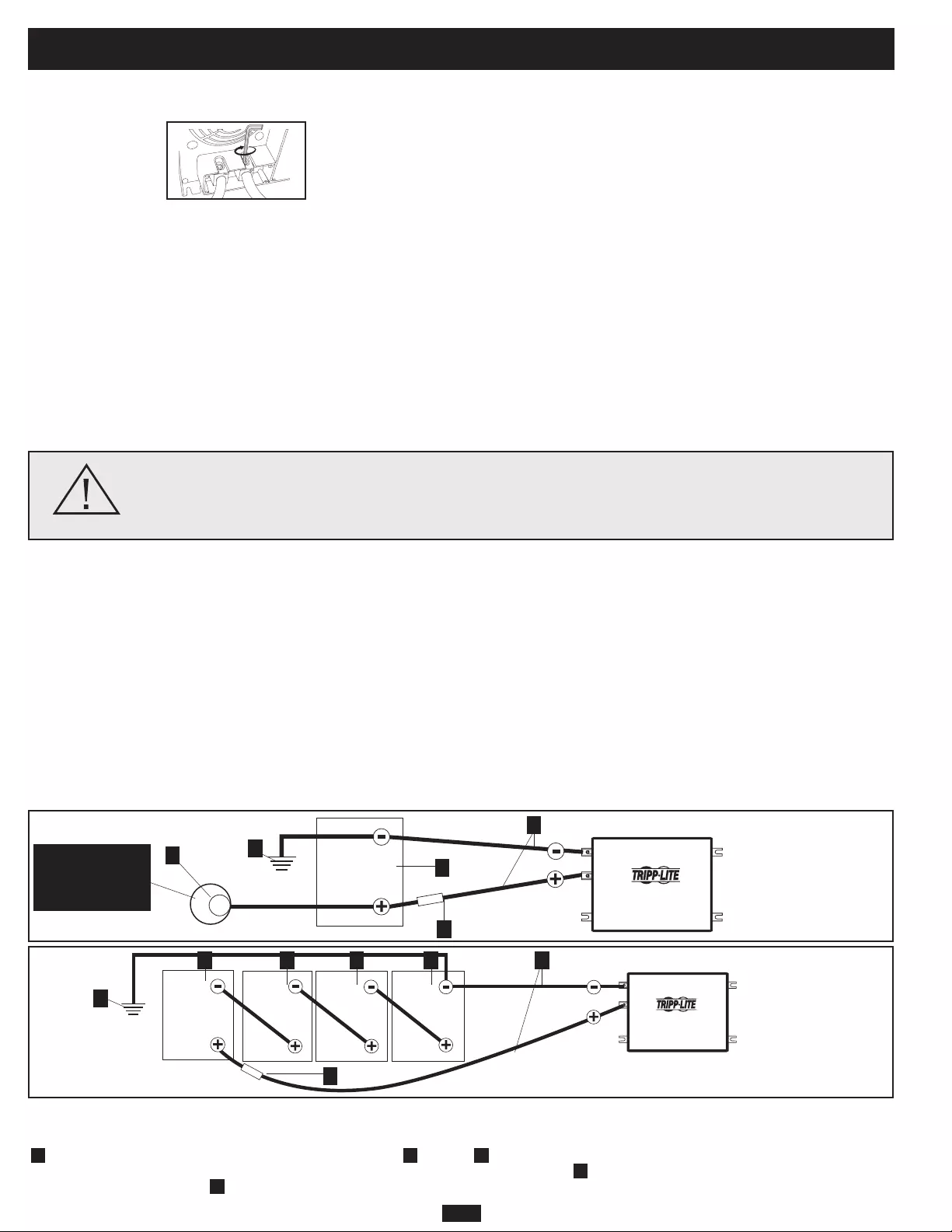
42A
1 2 3
4
5
XB
XB
4
1
2
3
24B
6B 6B 6B 6B
1
2 2 2 2 4
3
5
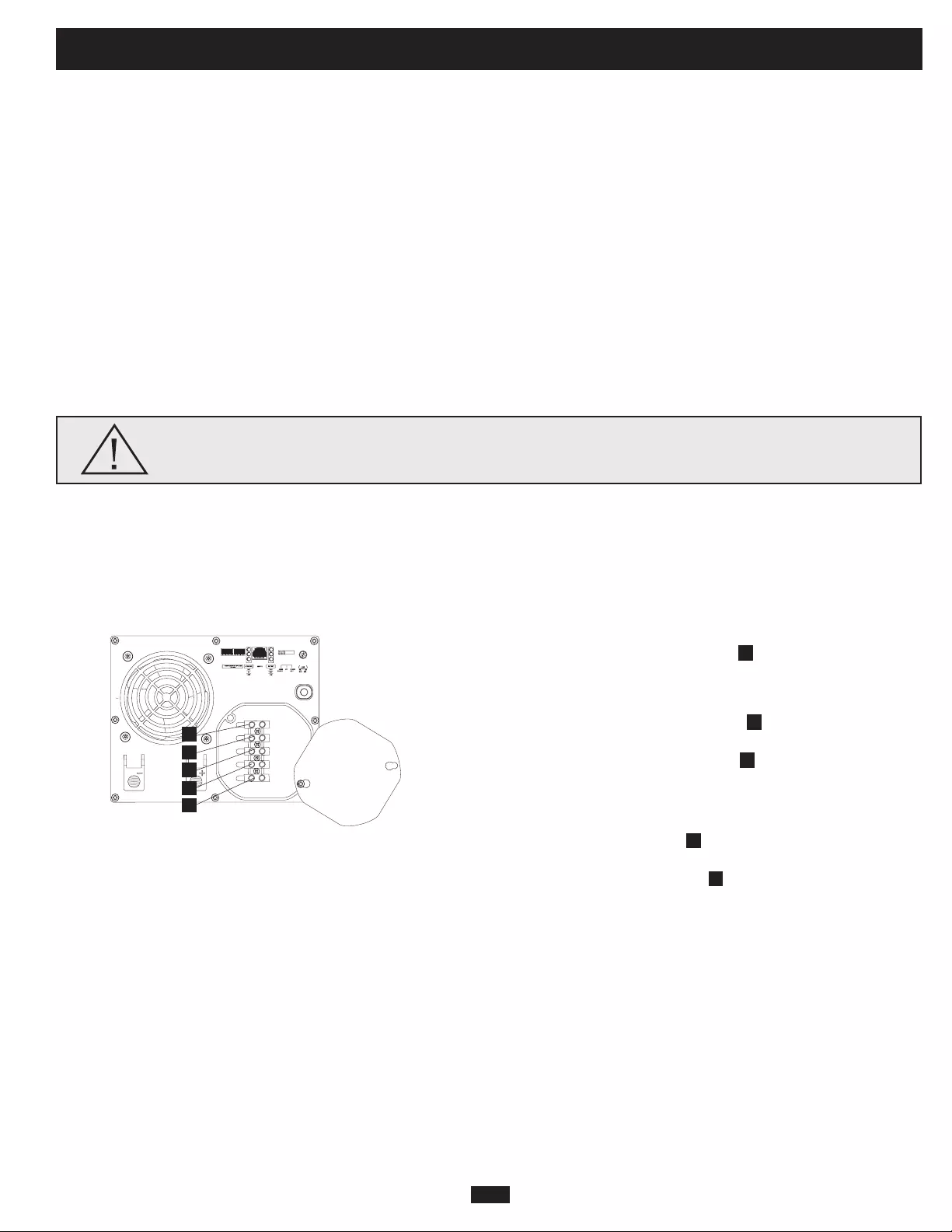
43A
OUTPUT/NEUTRAL
OUTPUT/HOT
GROUND
INPUT/NEUTRAL
INPUT/HOT
“FOR USE WITH COPPER WIRE ONLY”
1
2
3
4
5
5
4
1
3
2

44A
200711152 93-2752